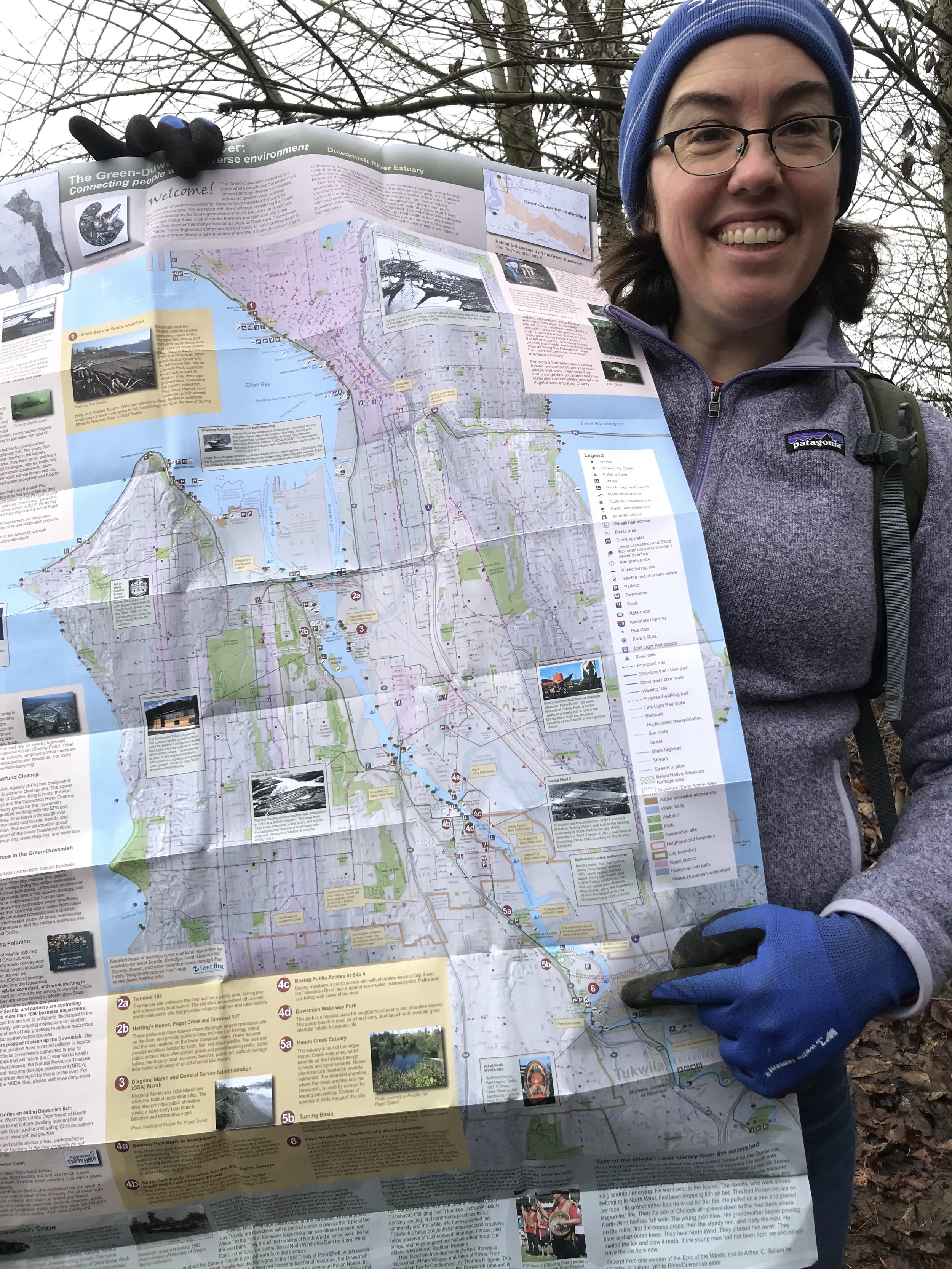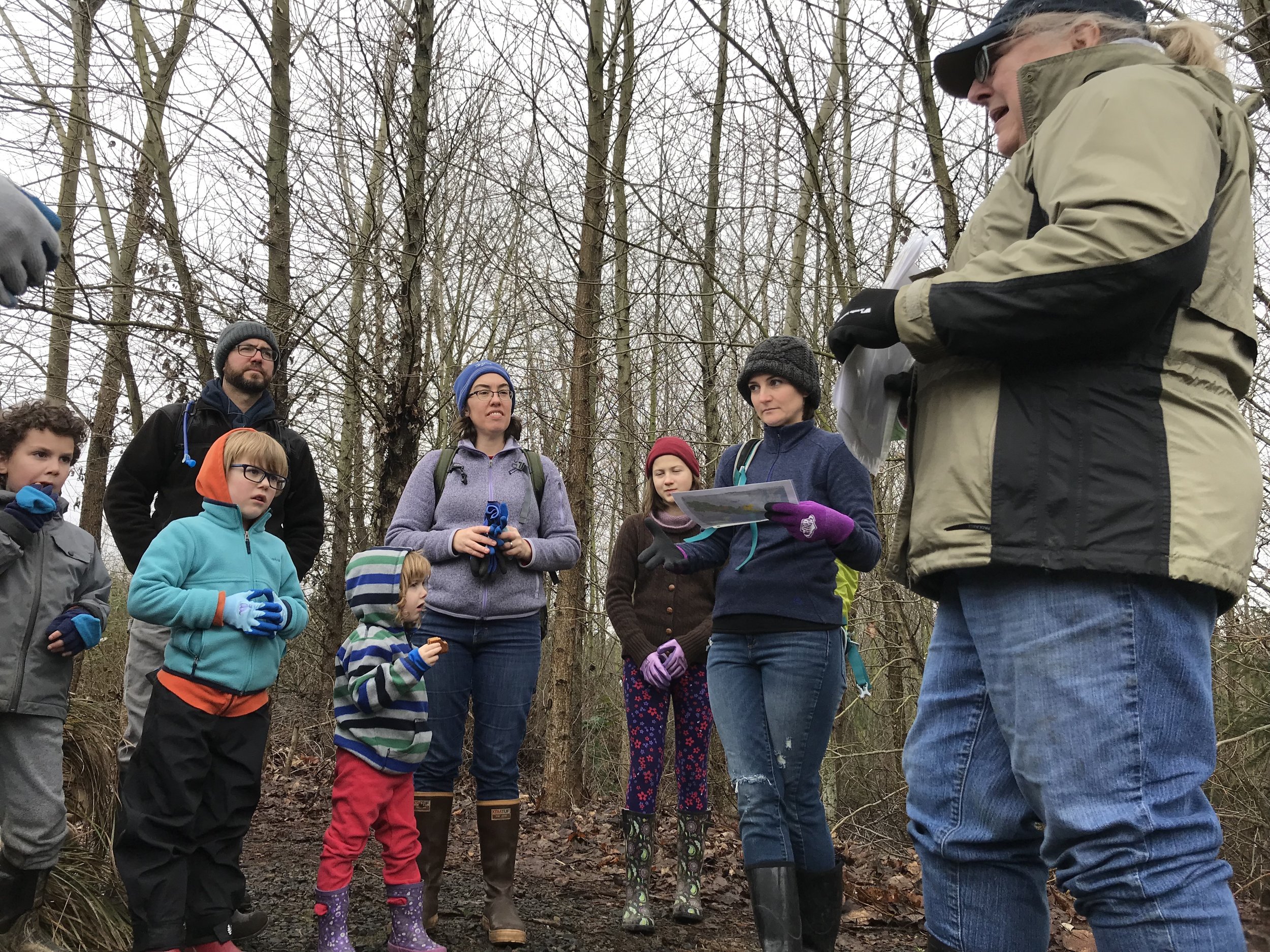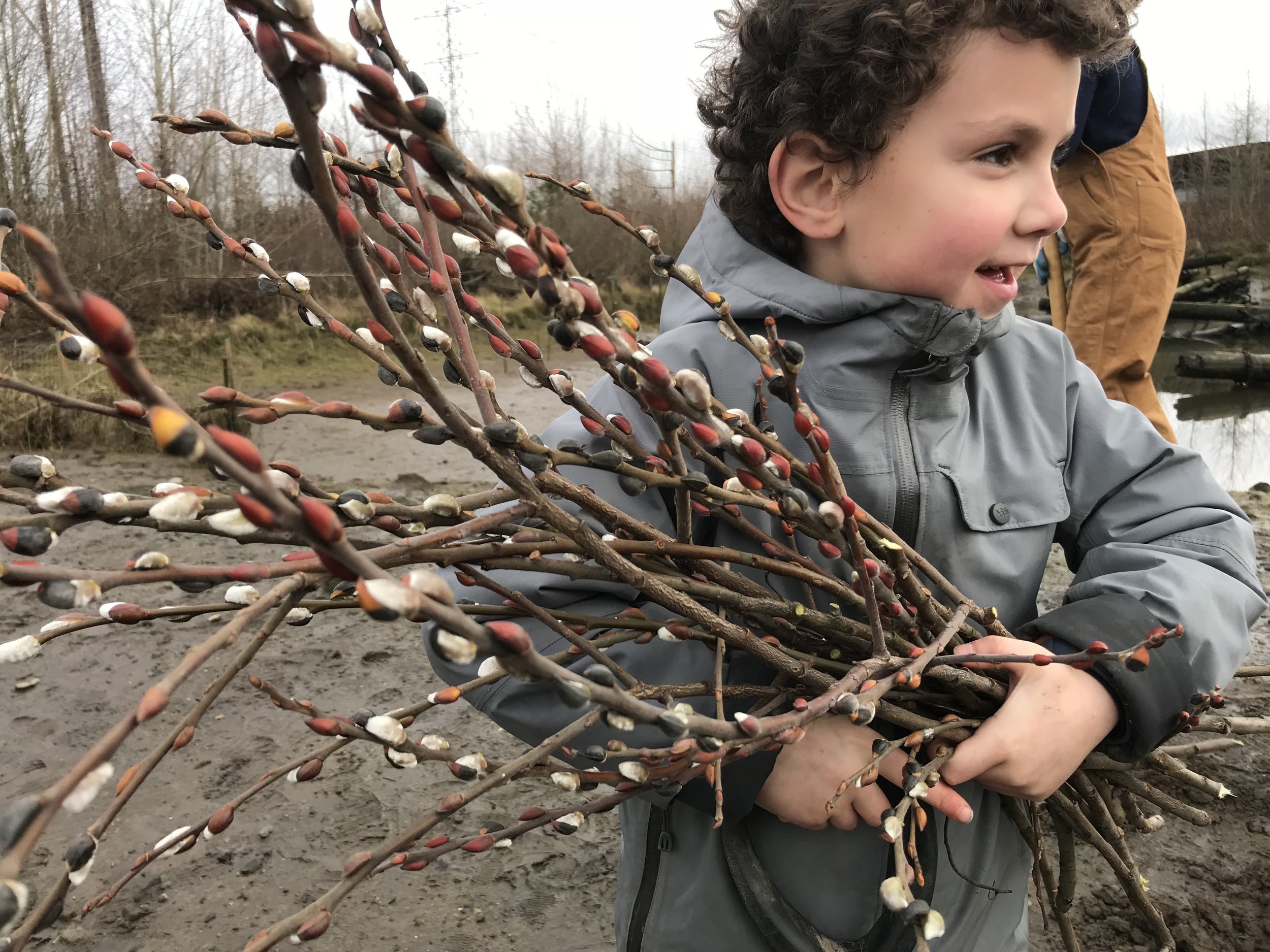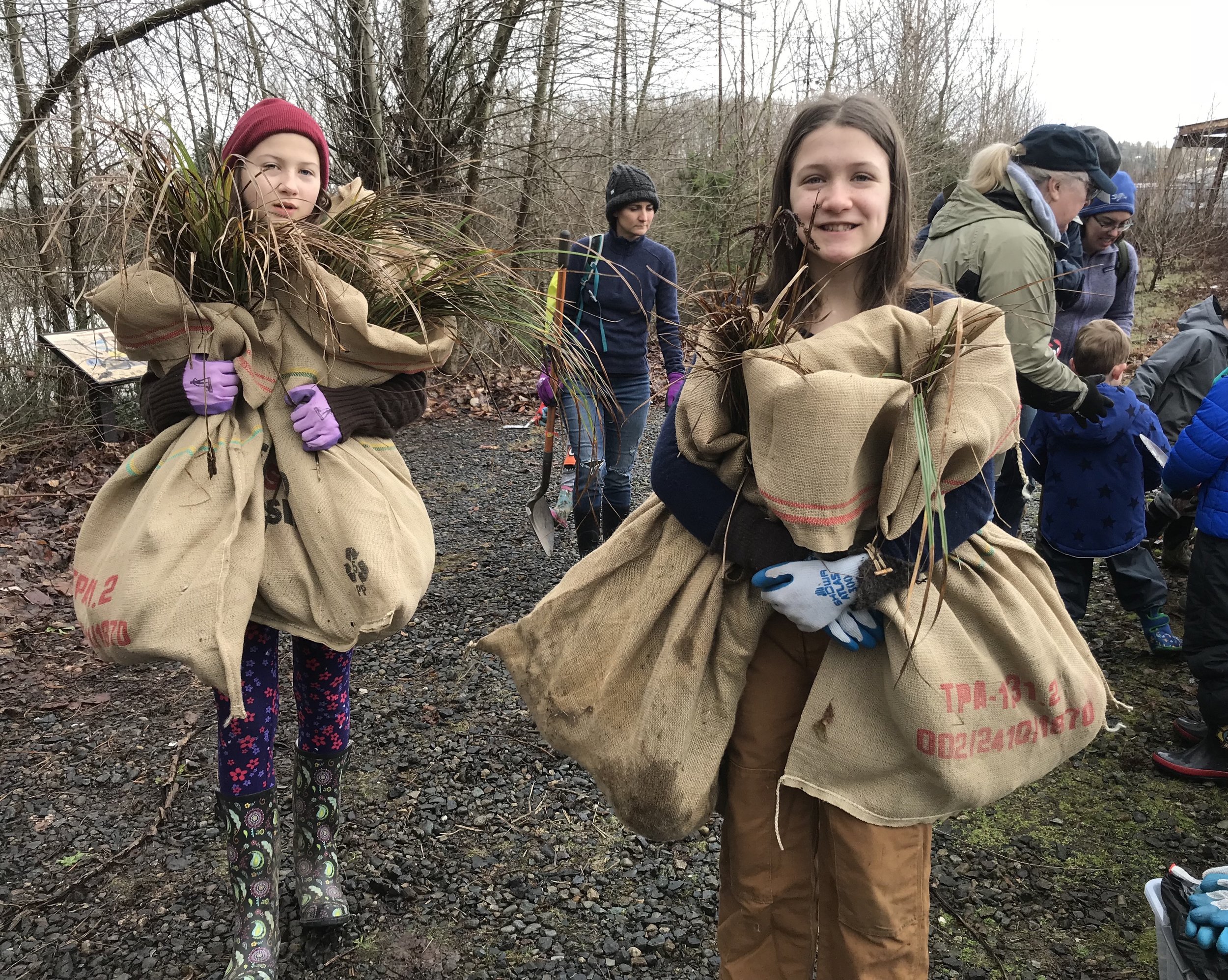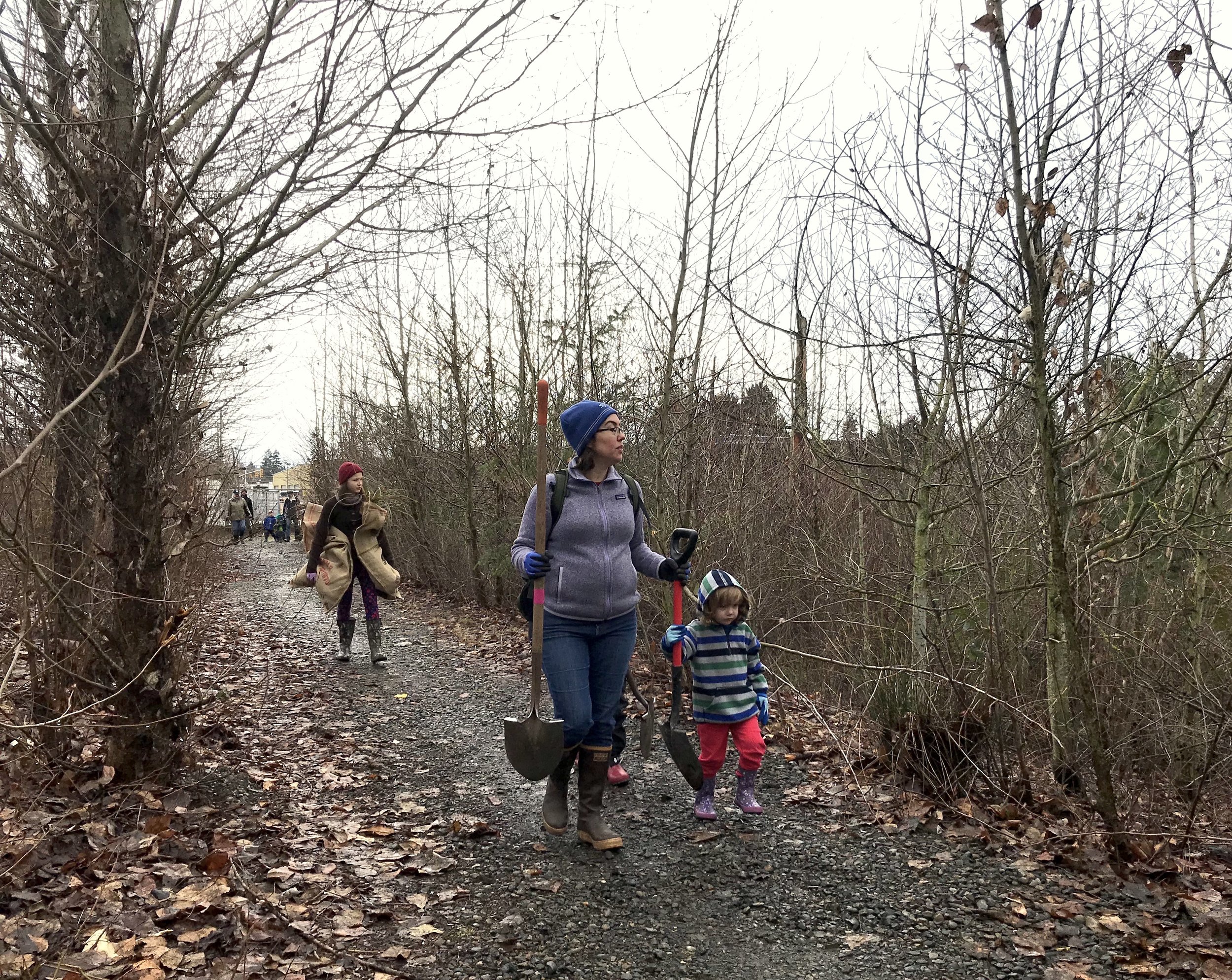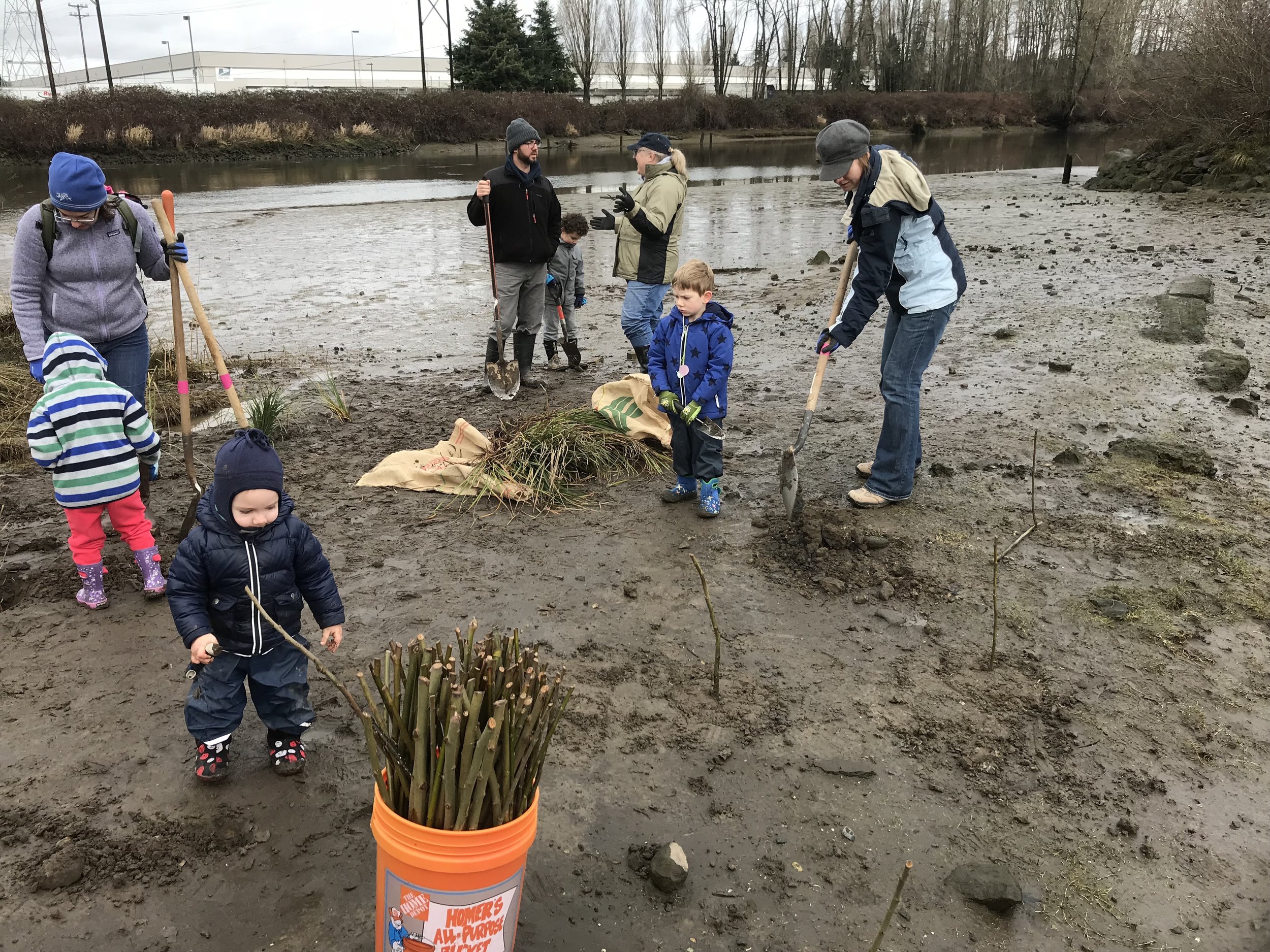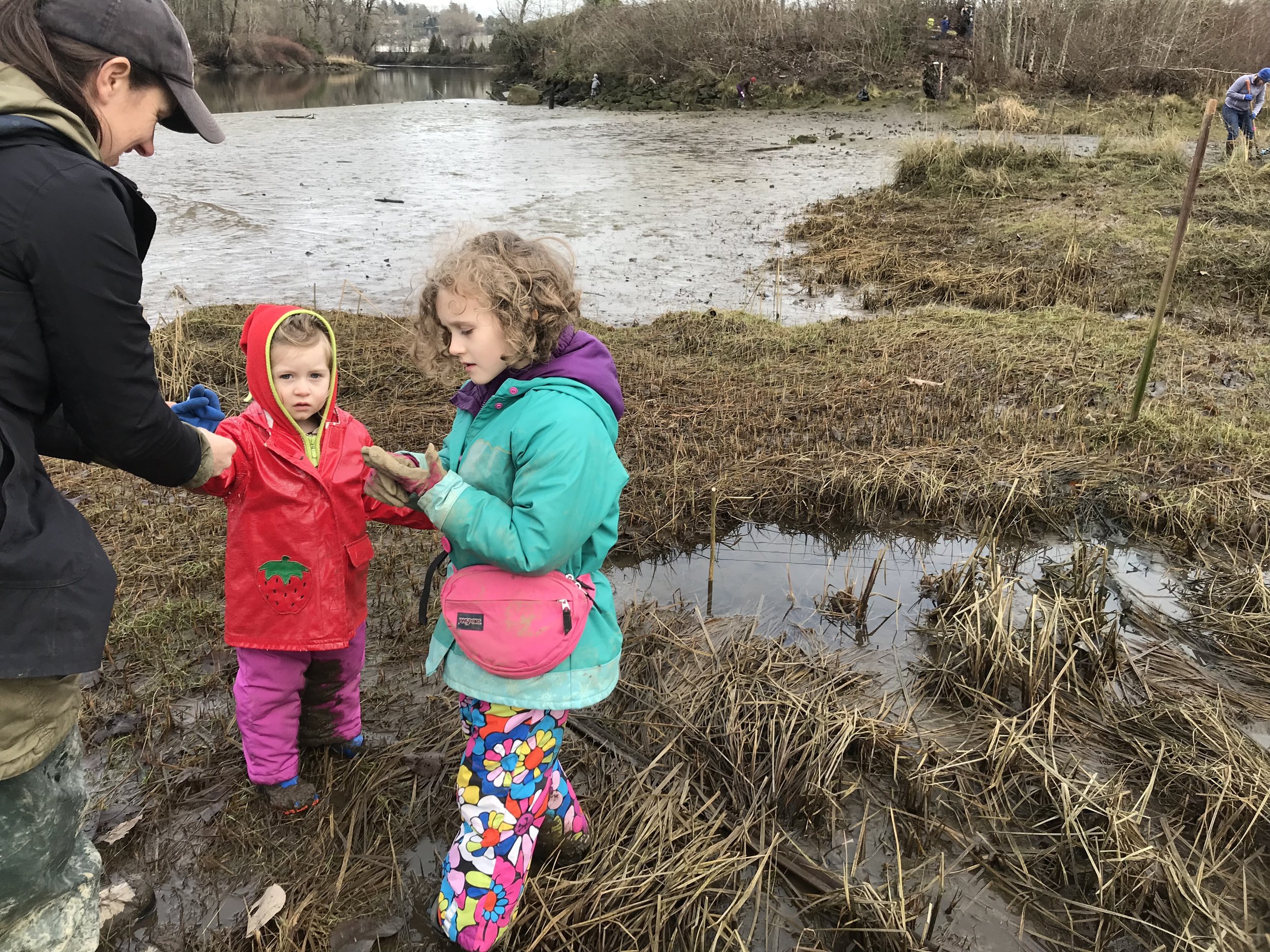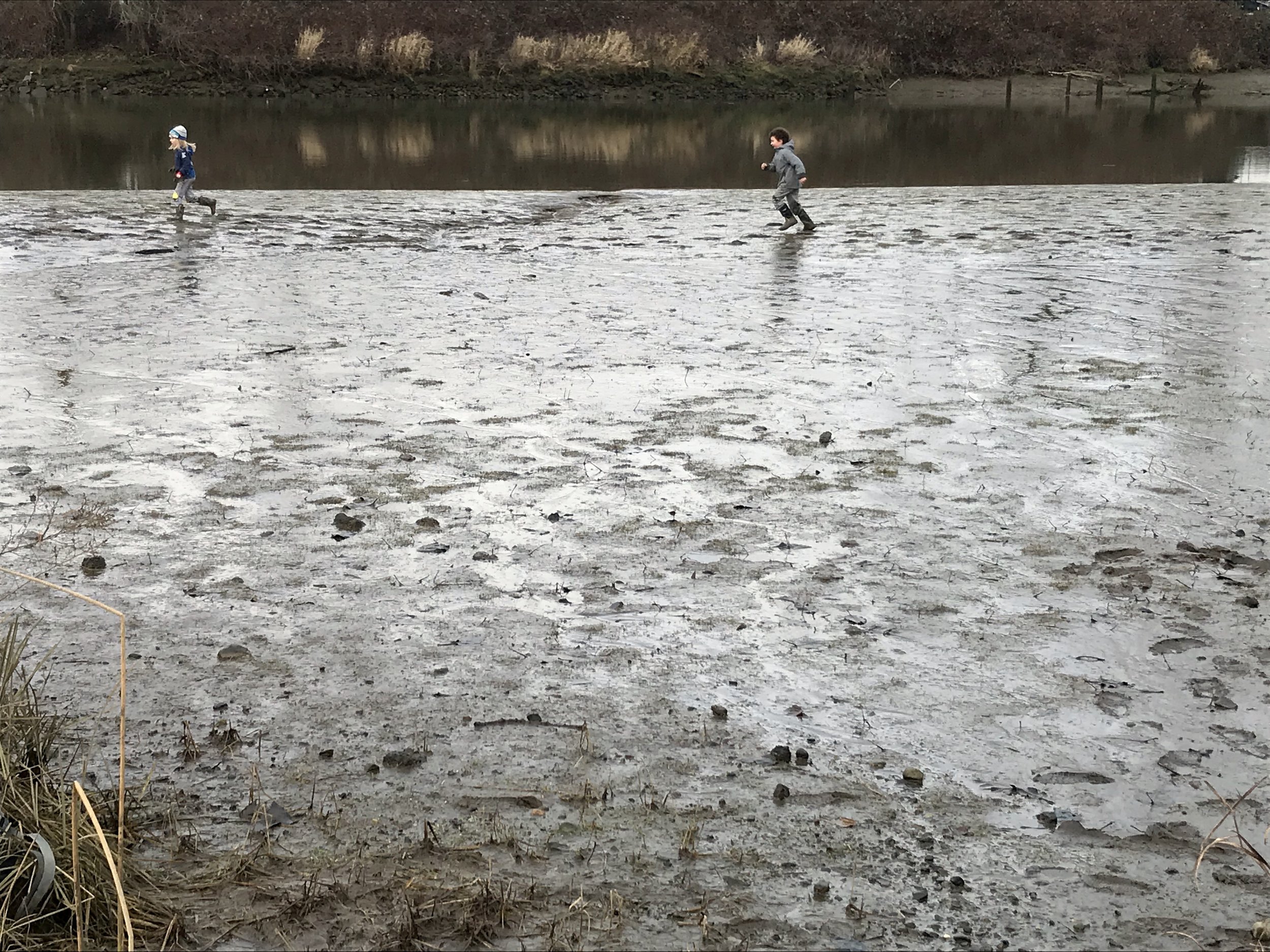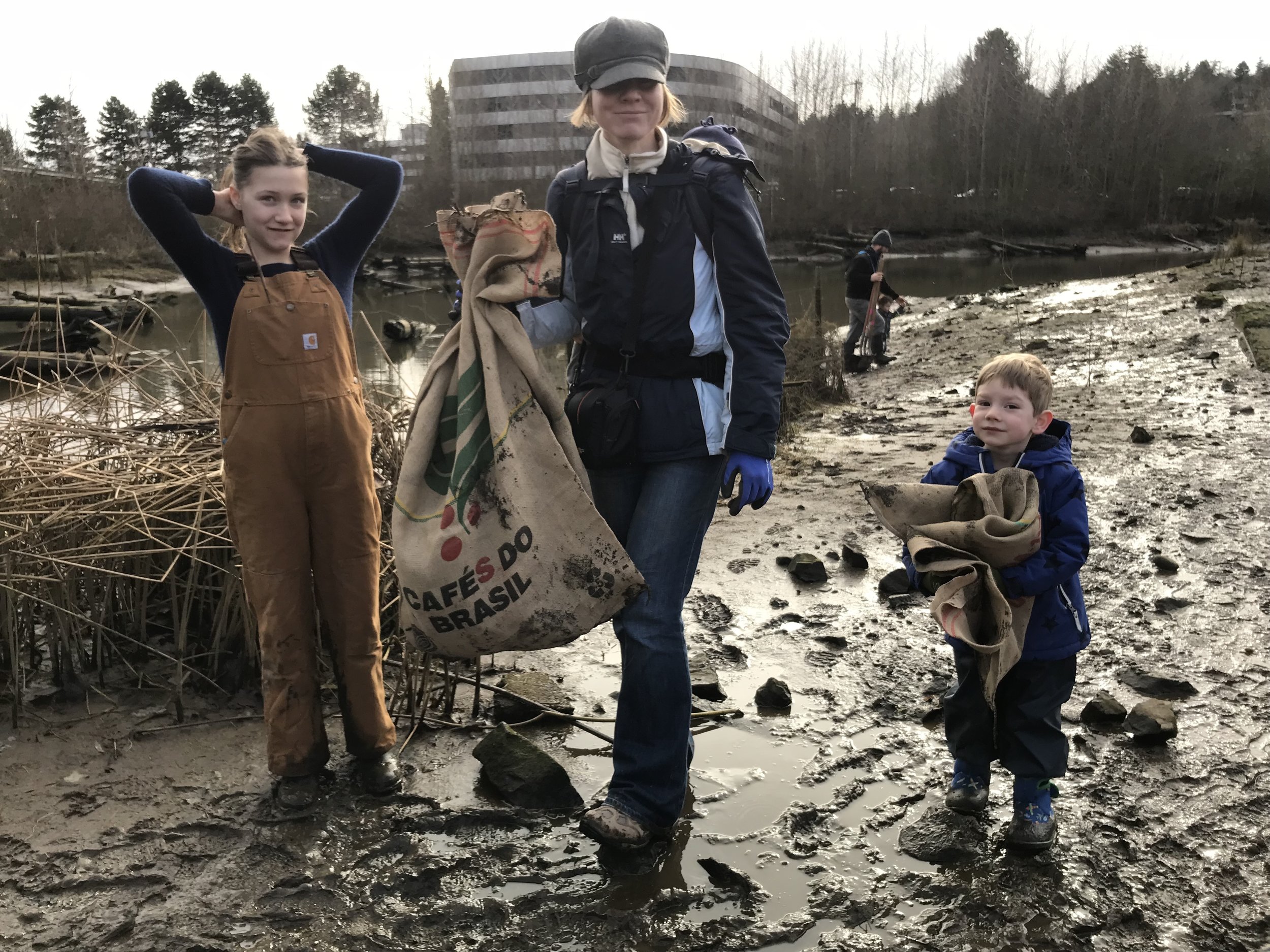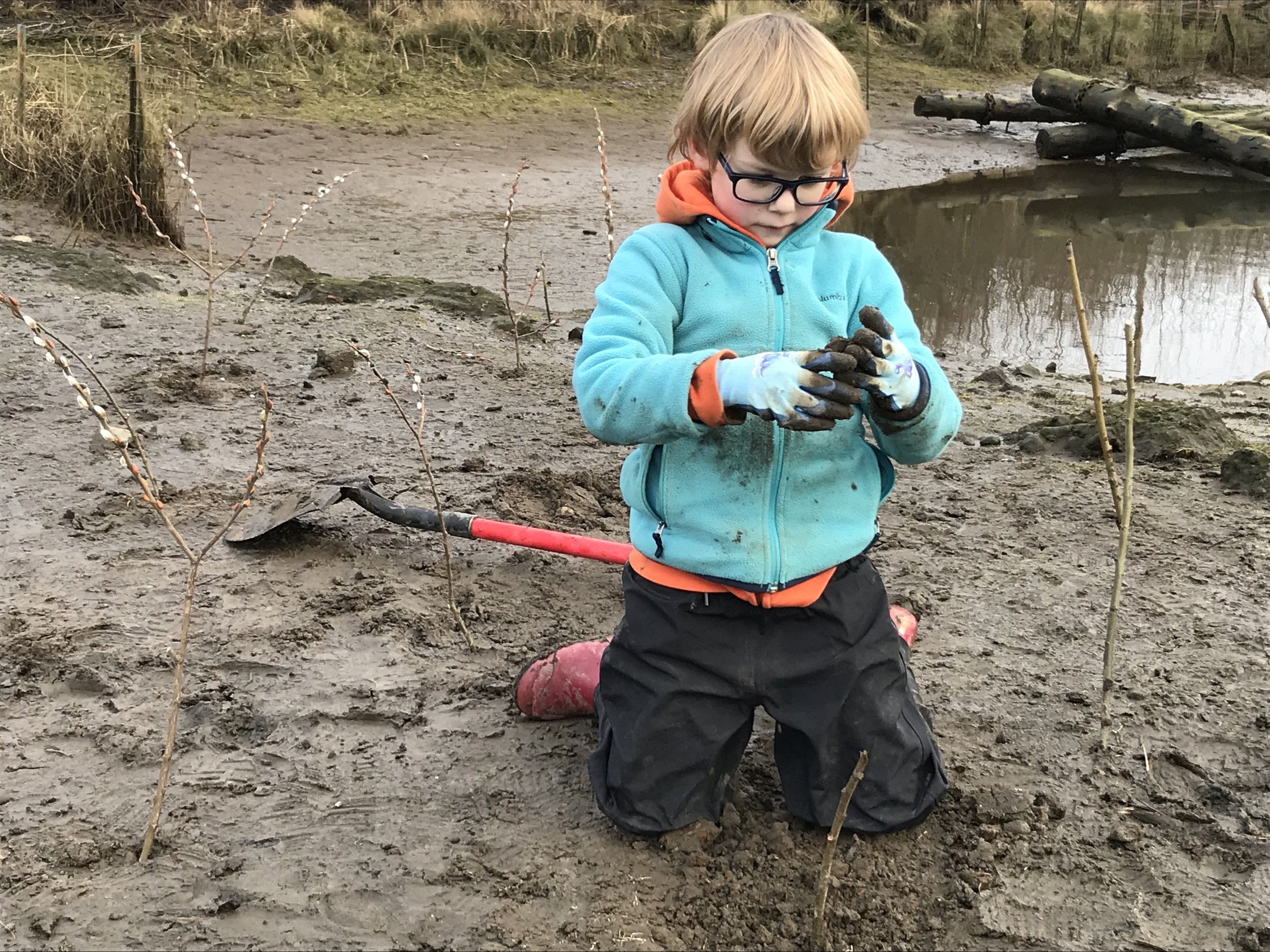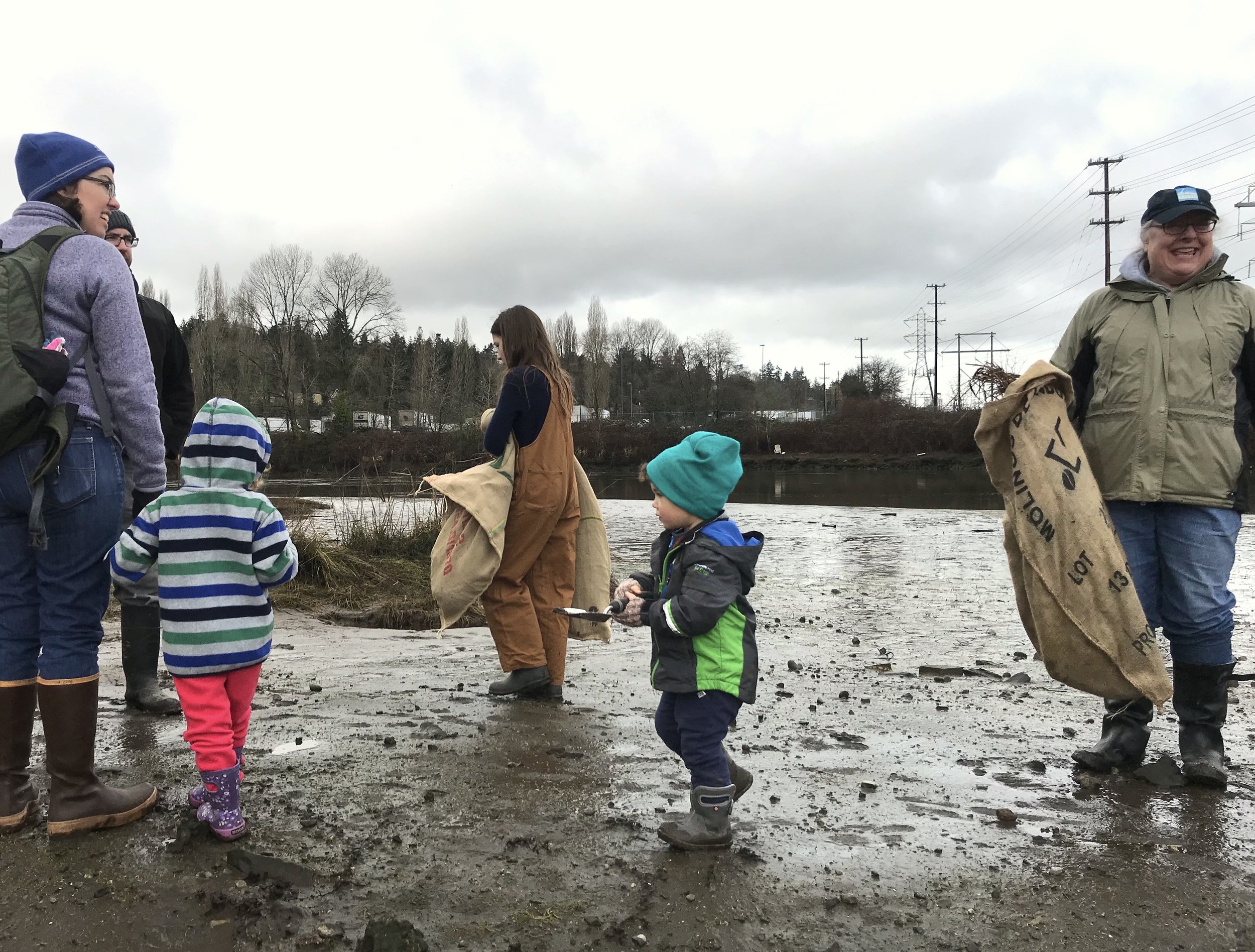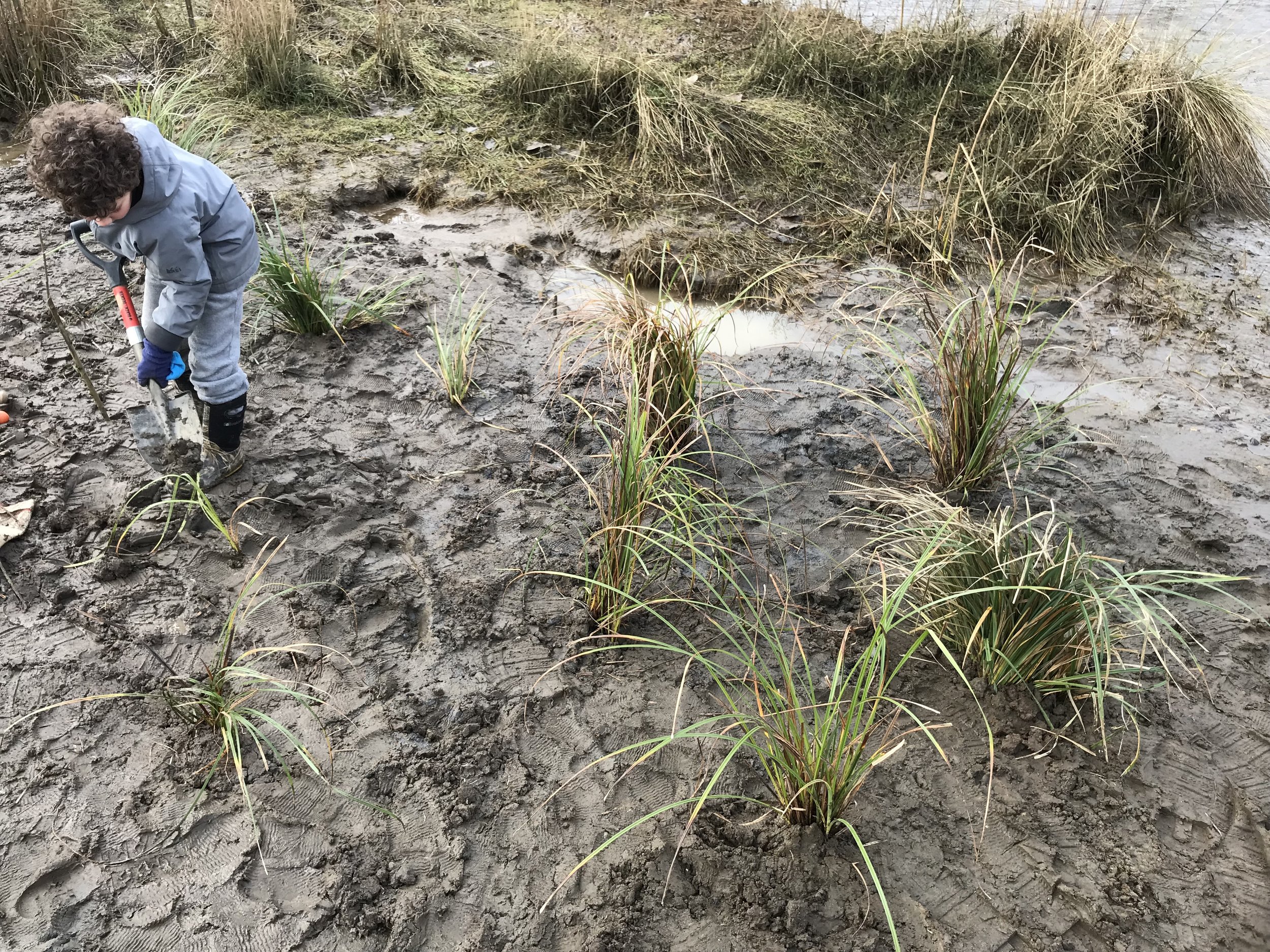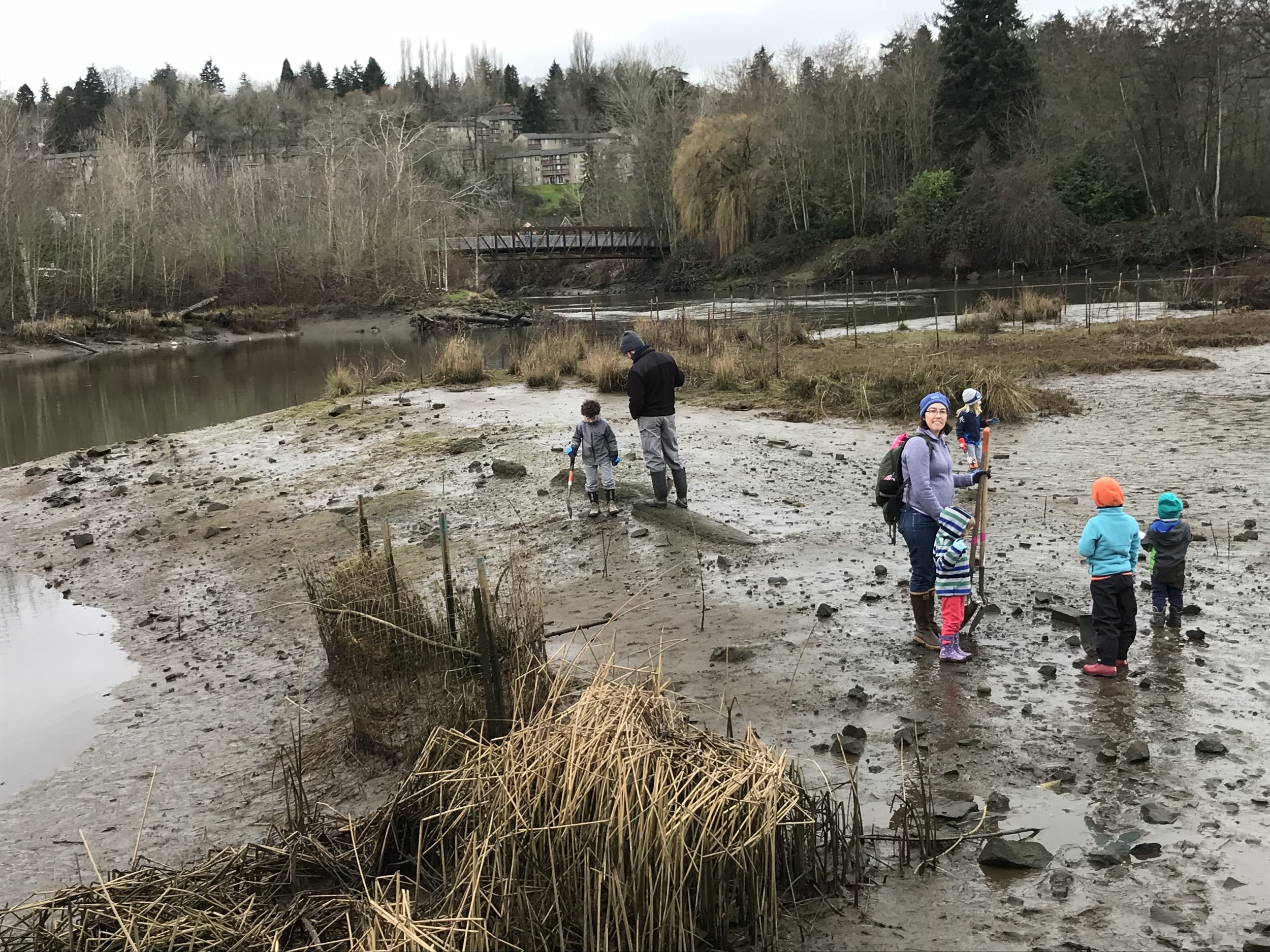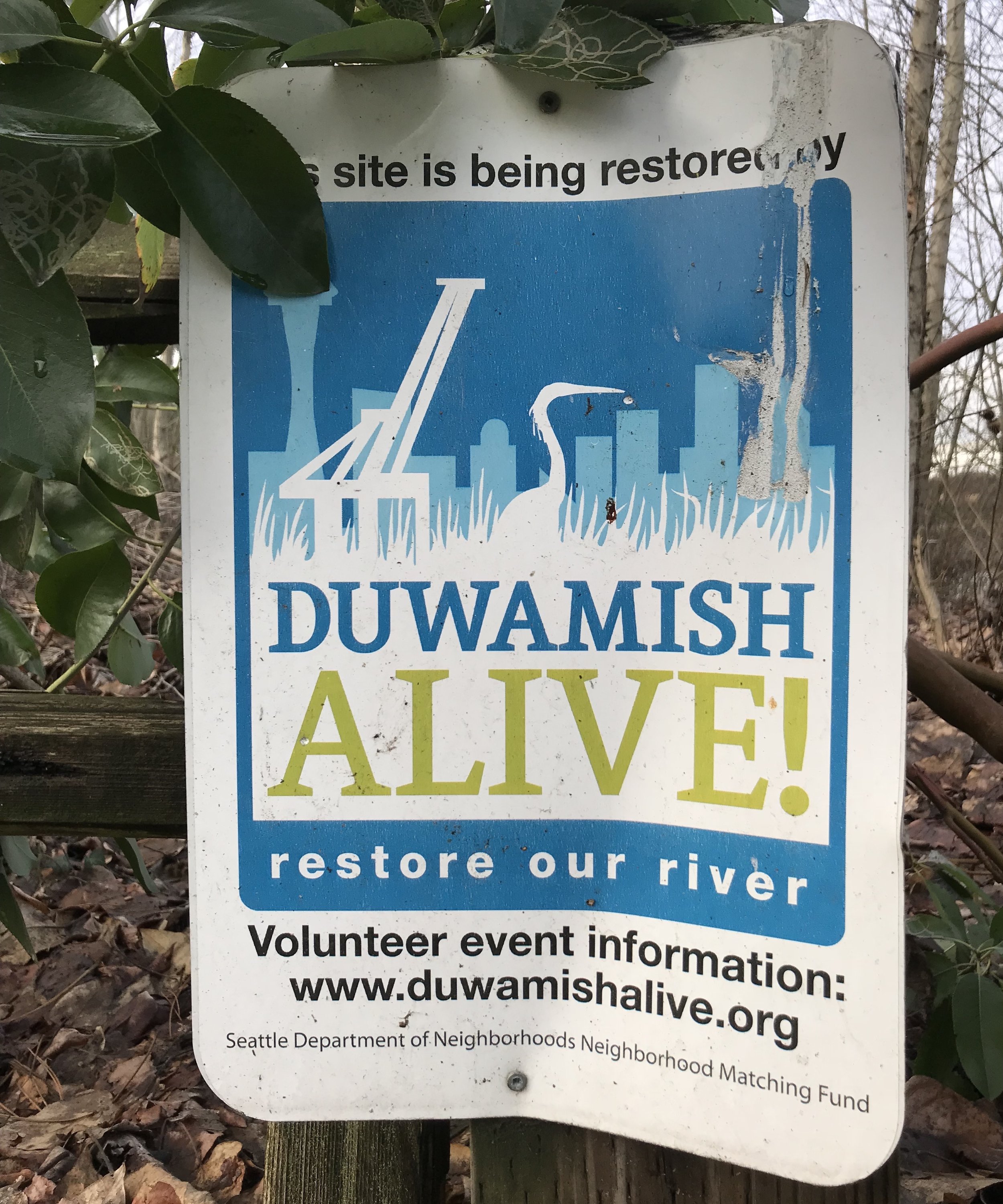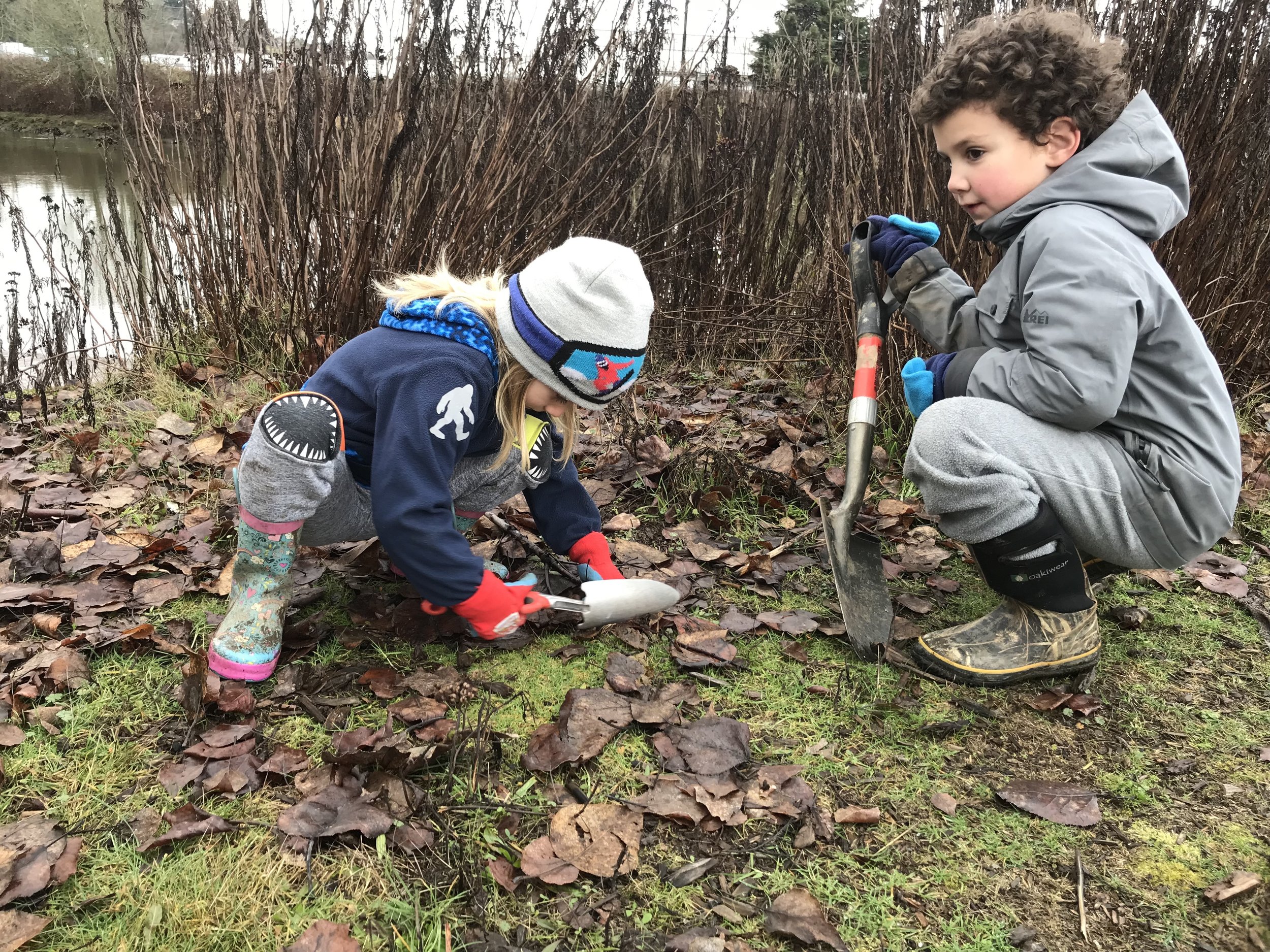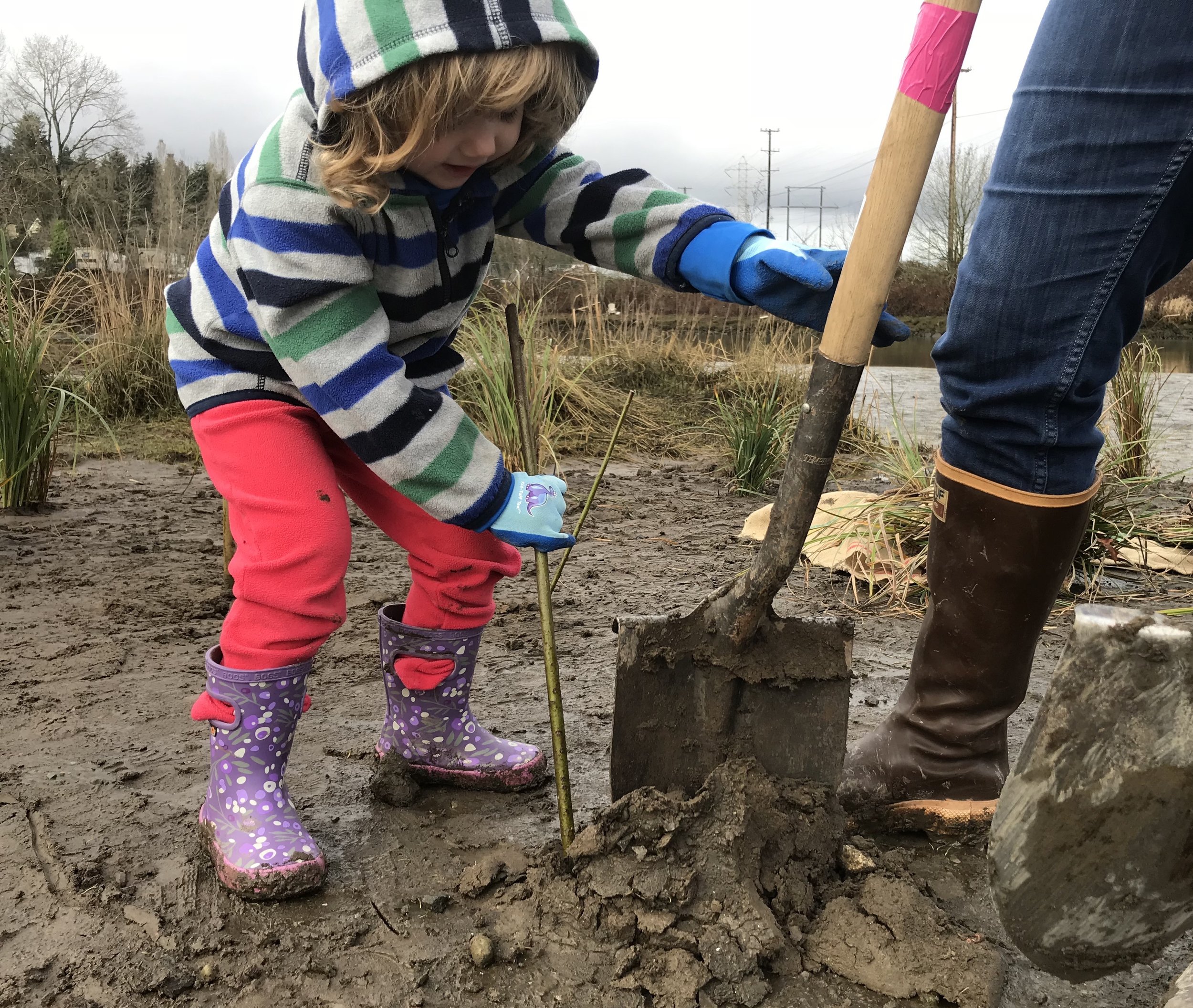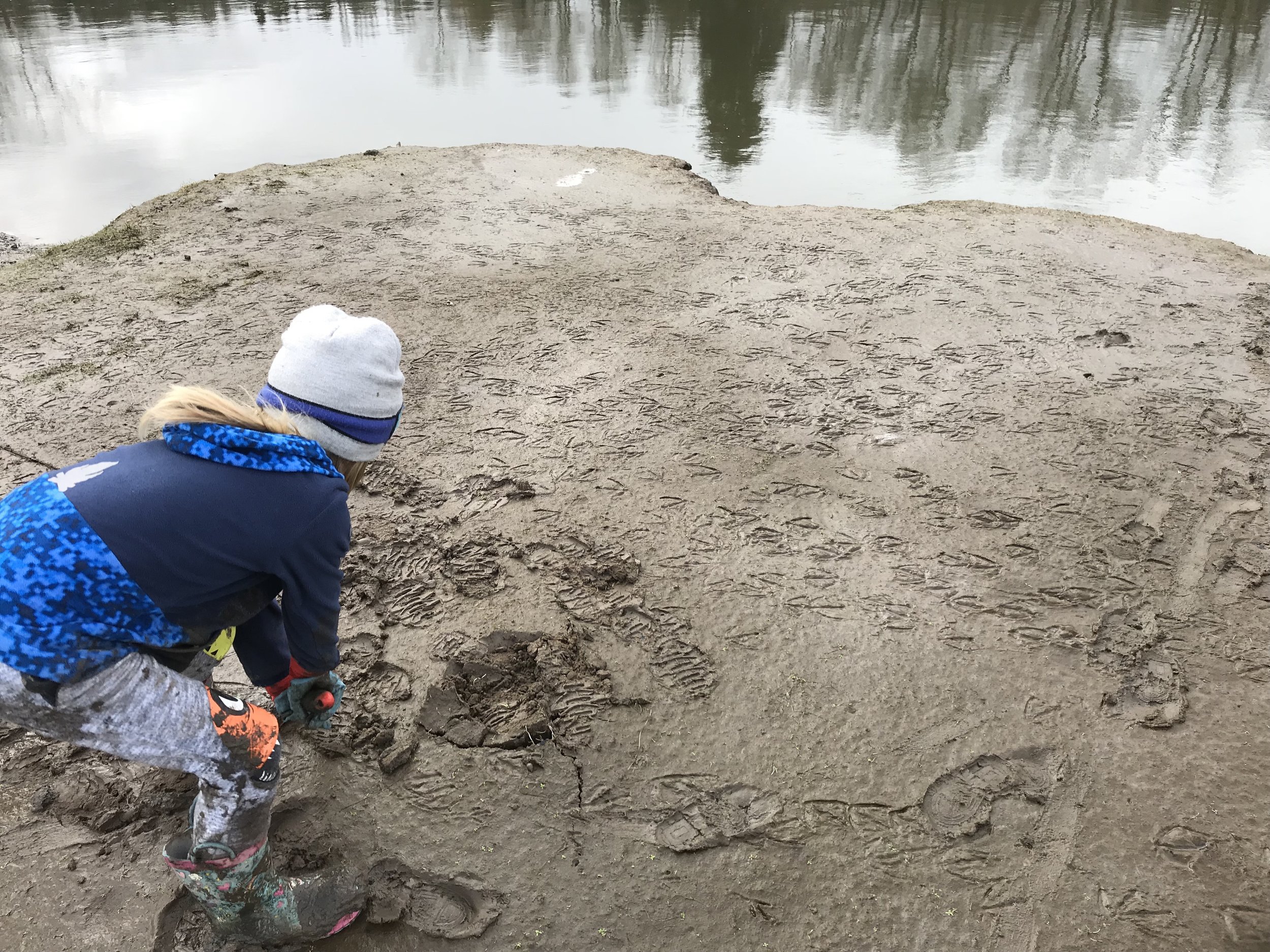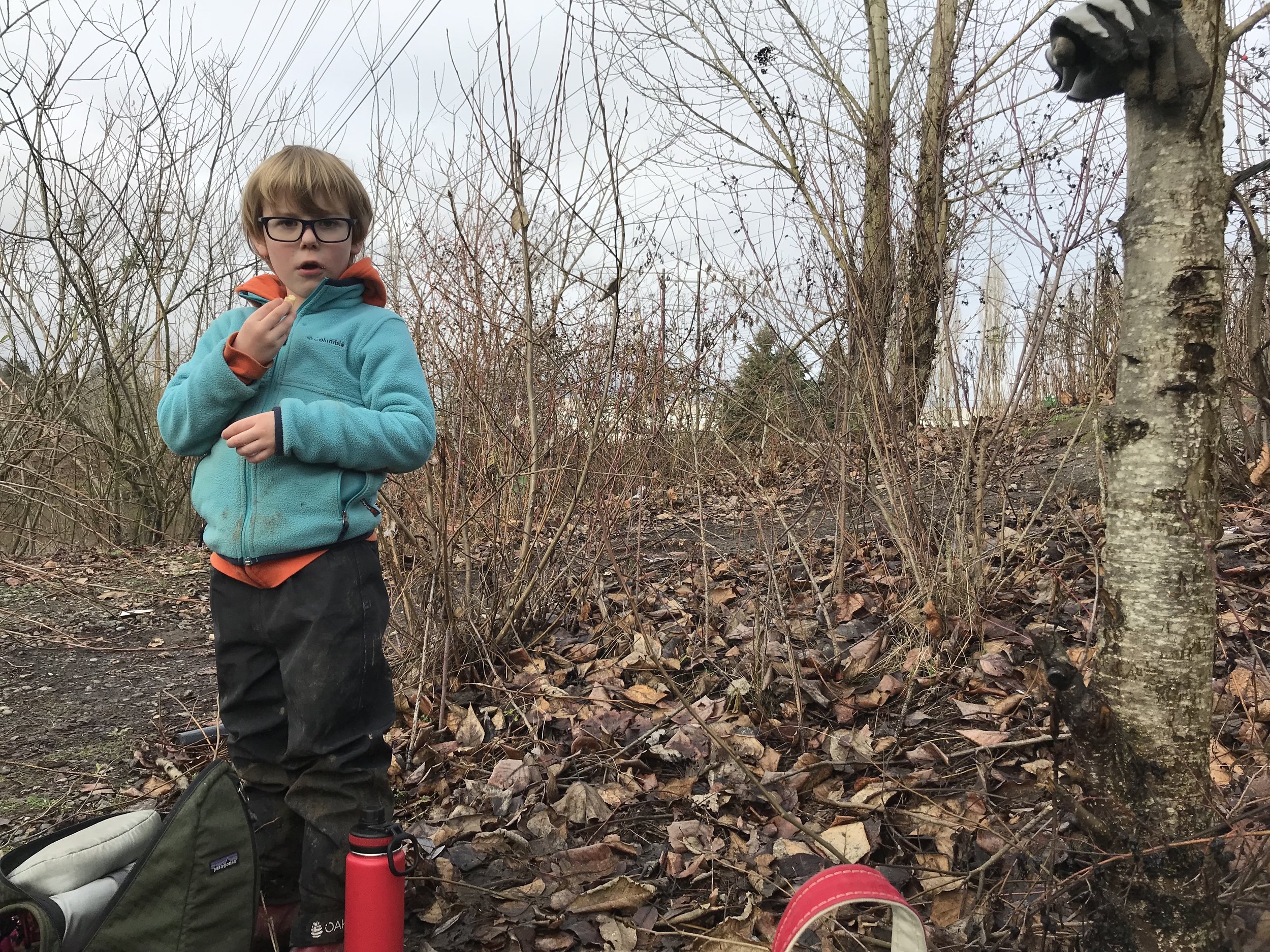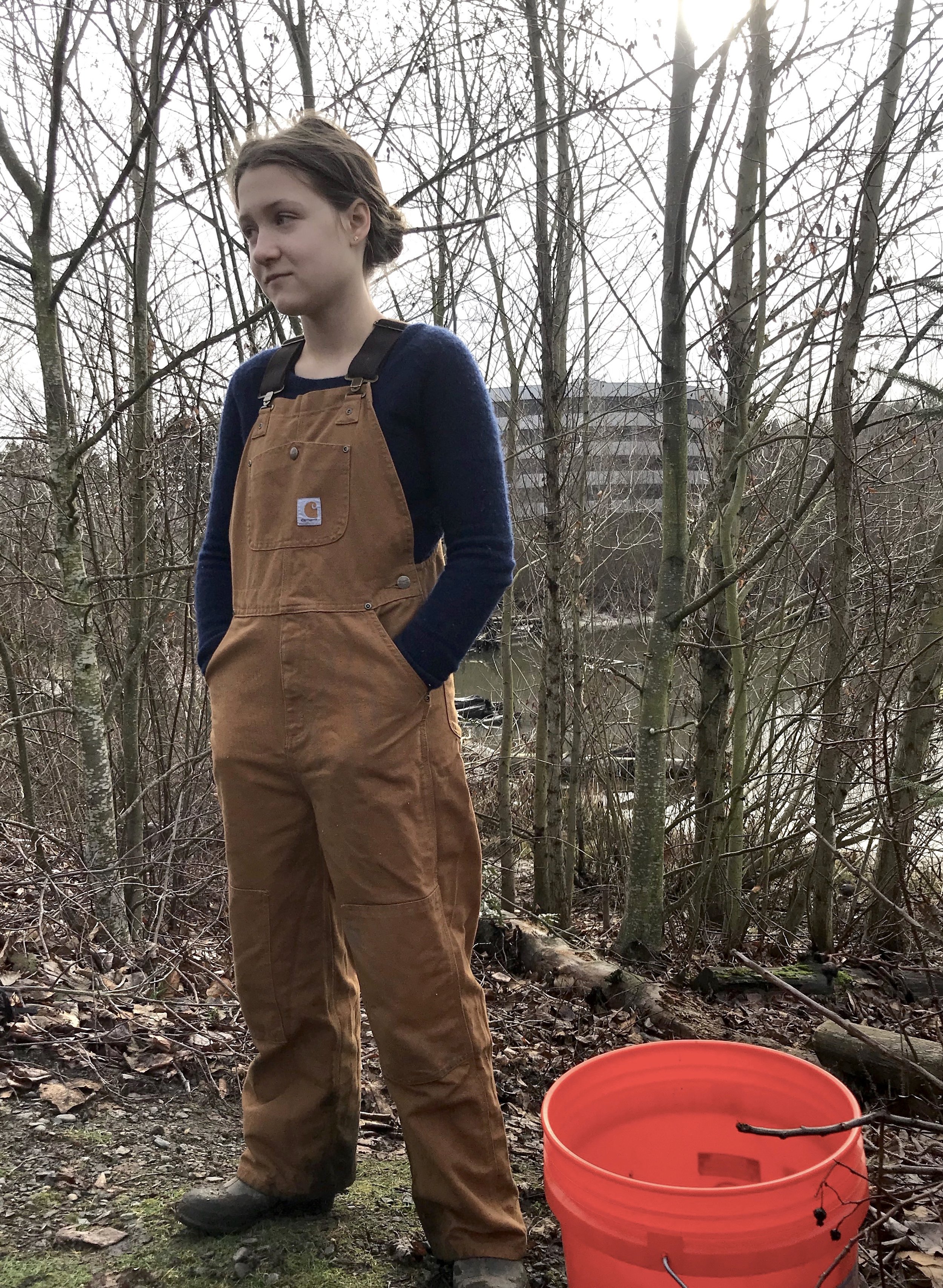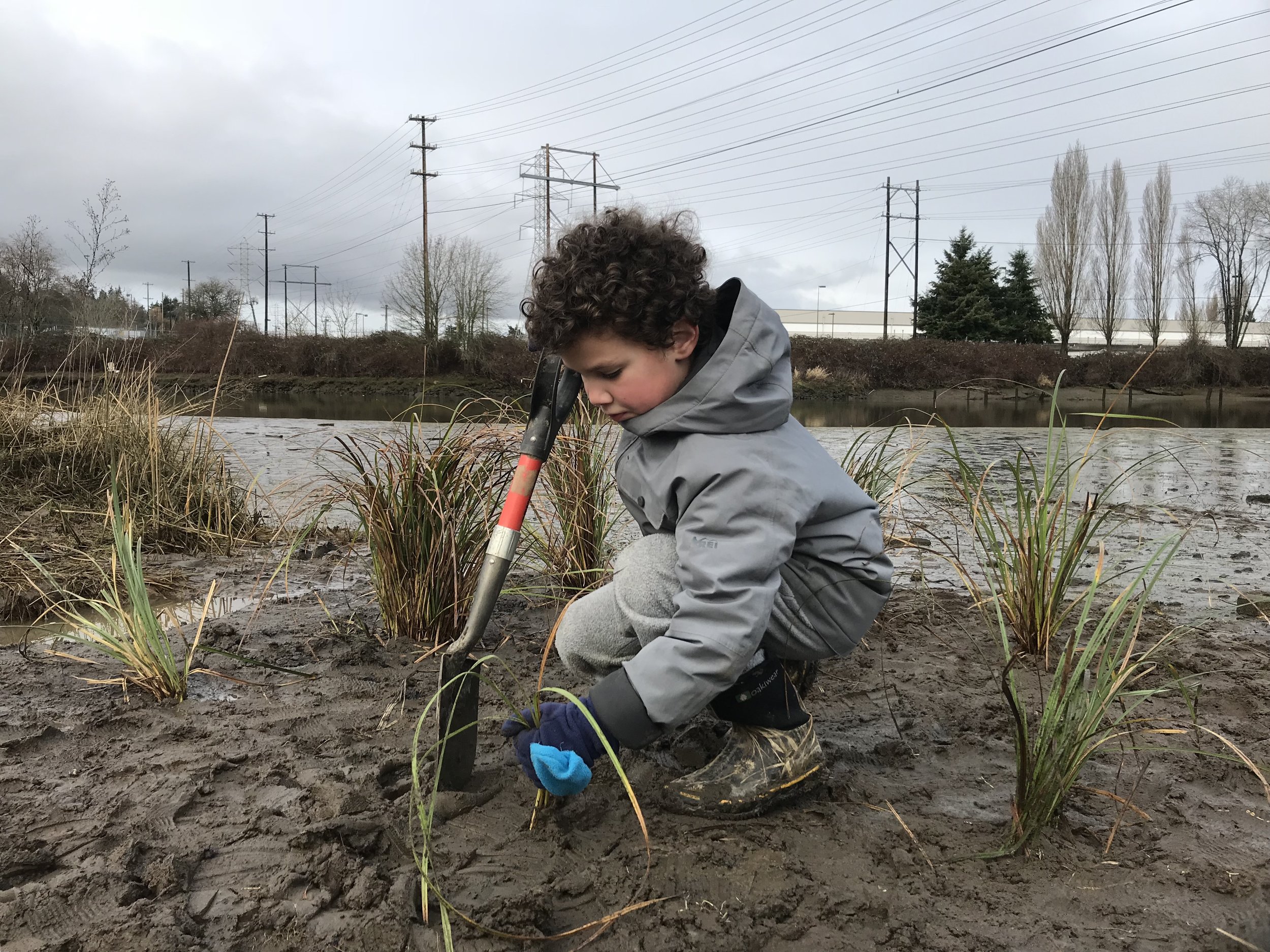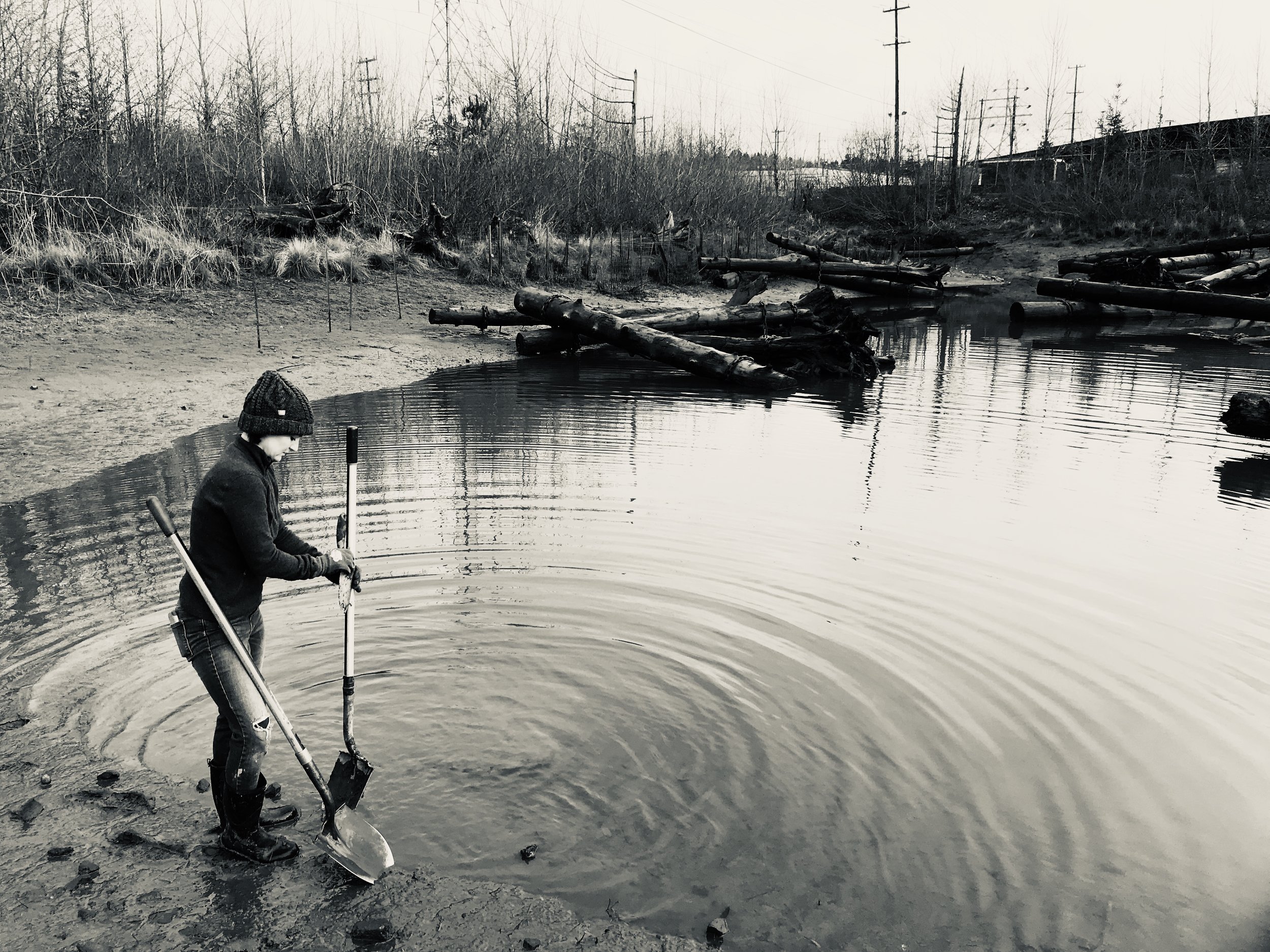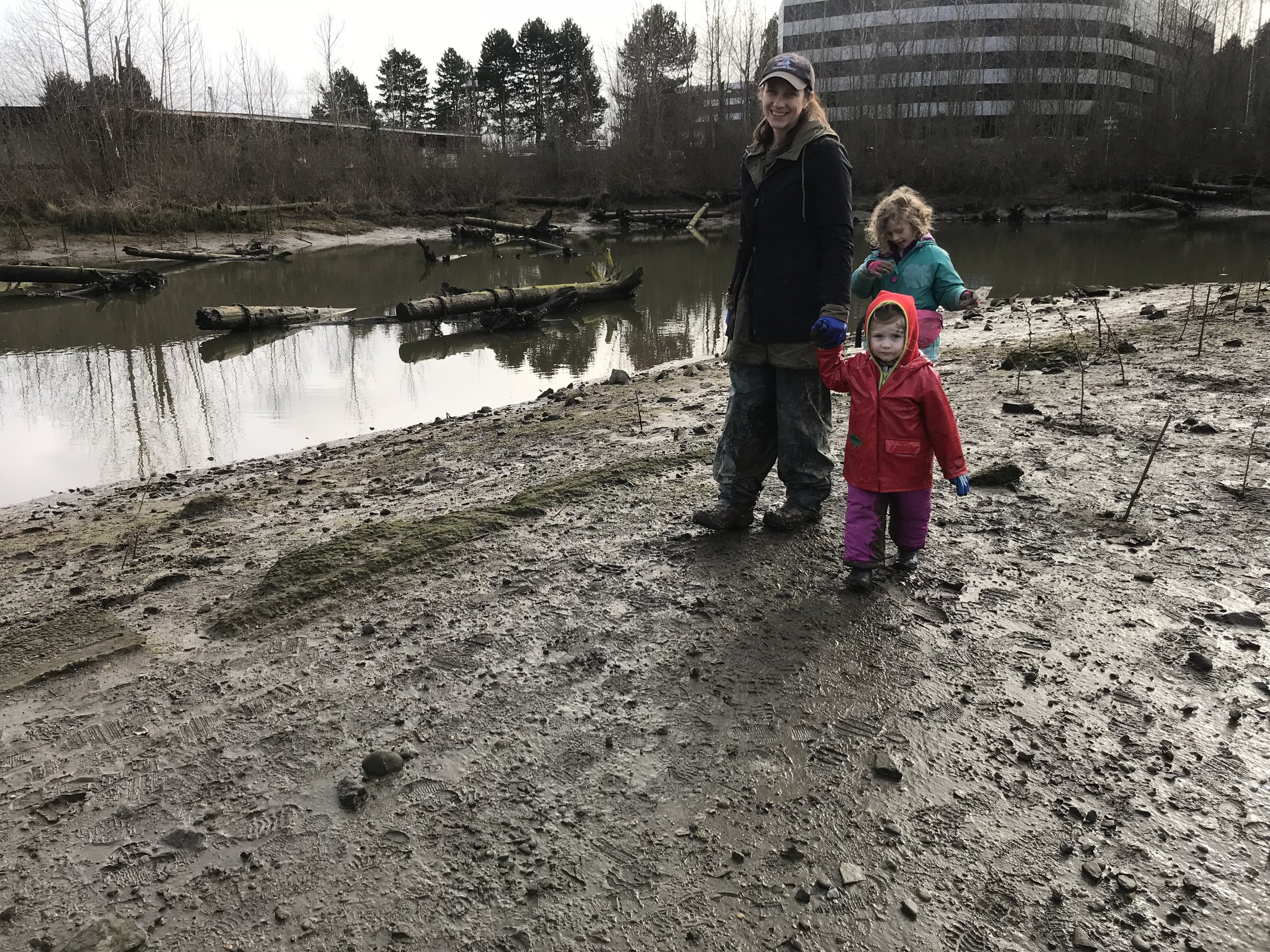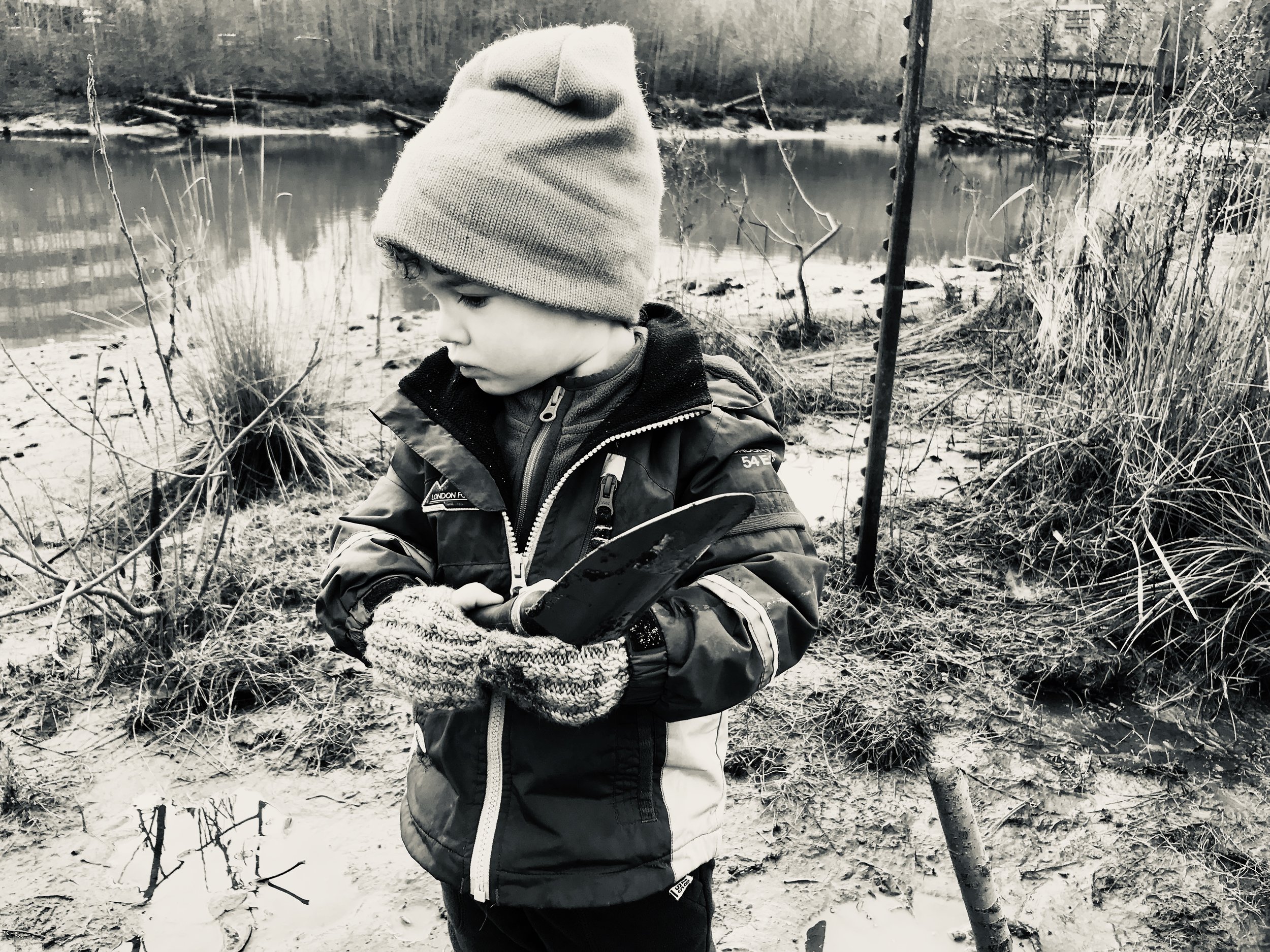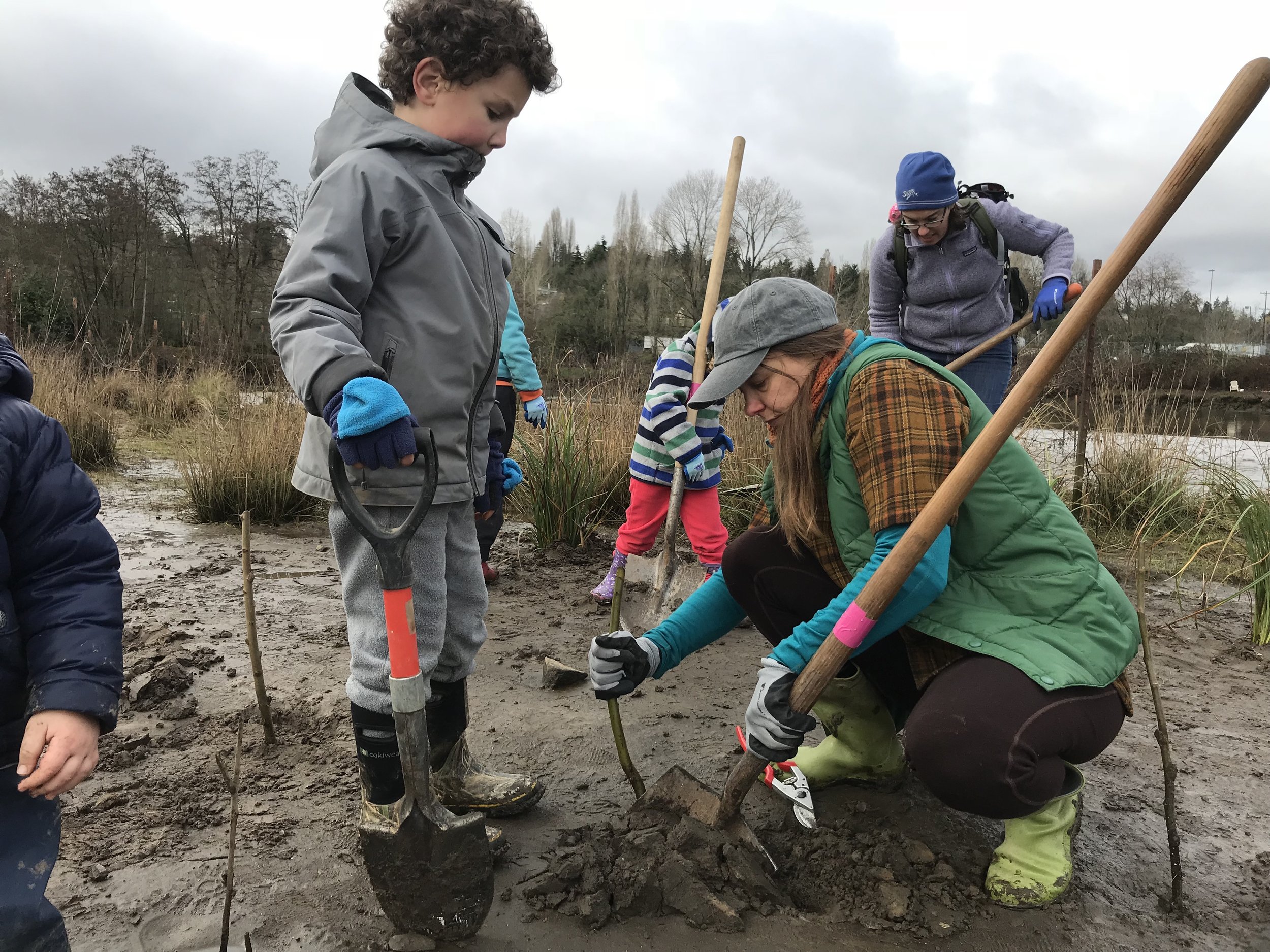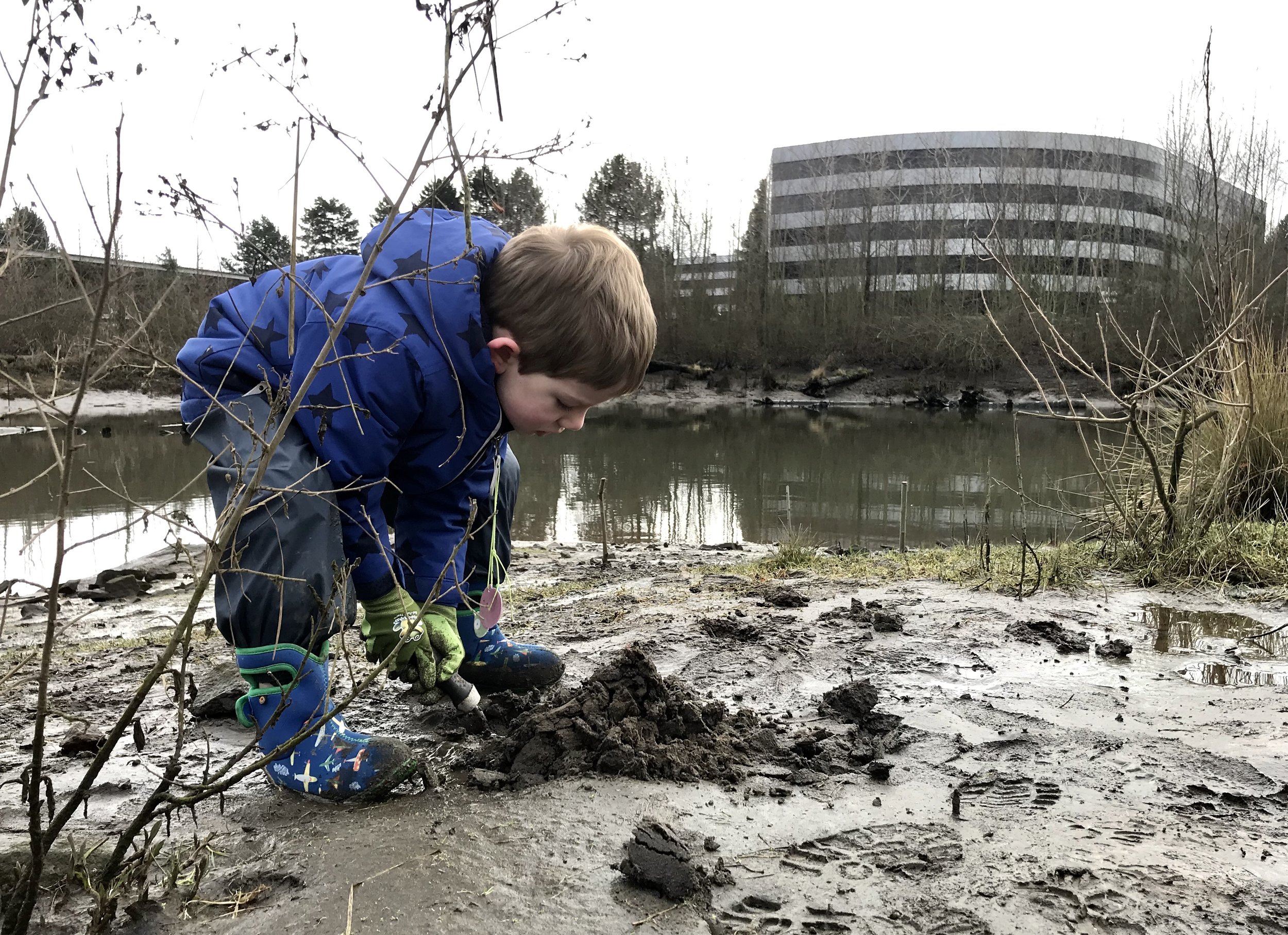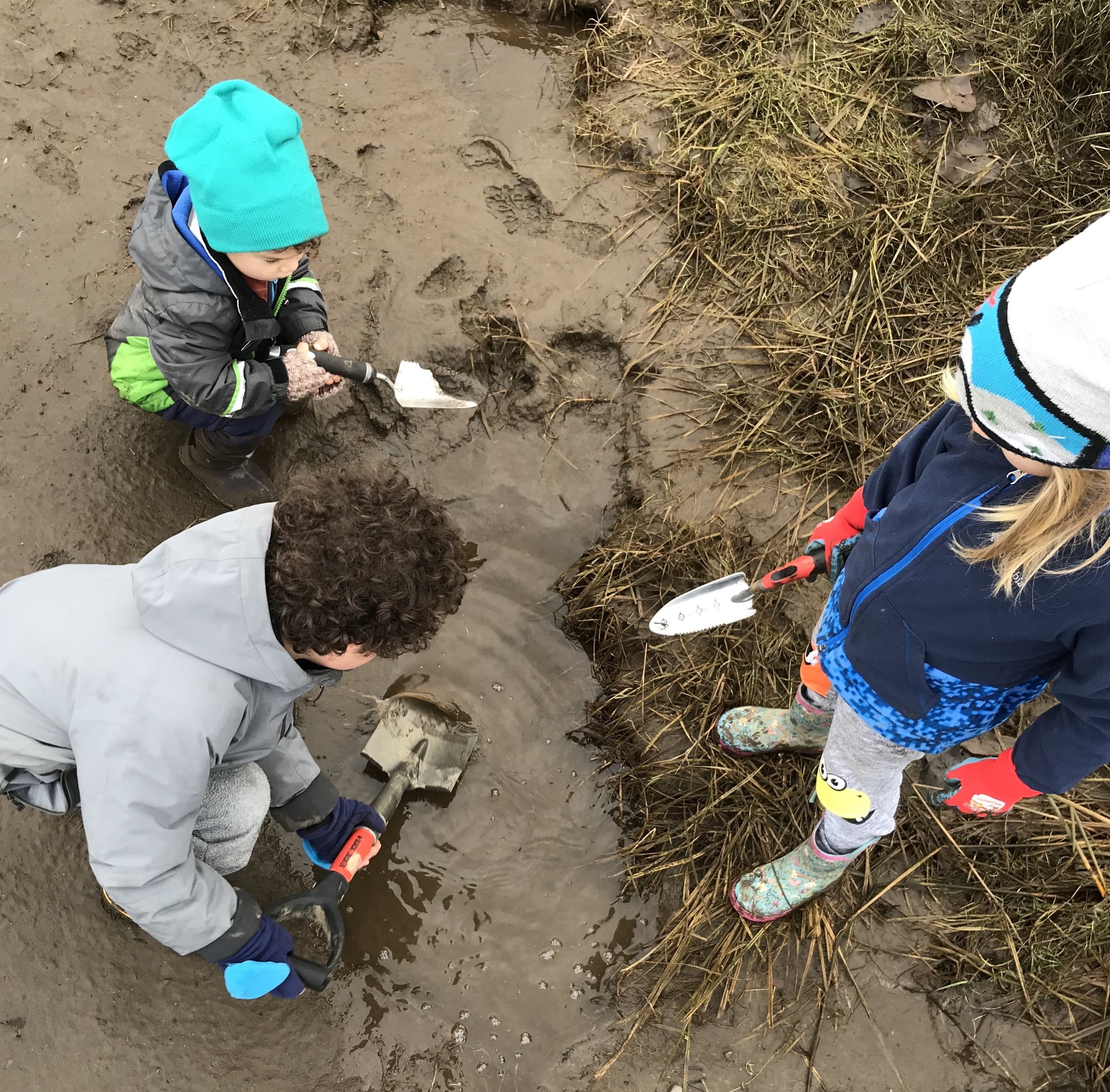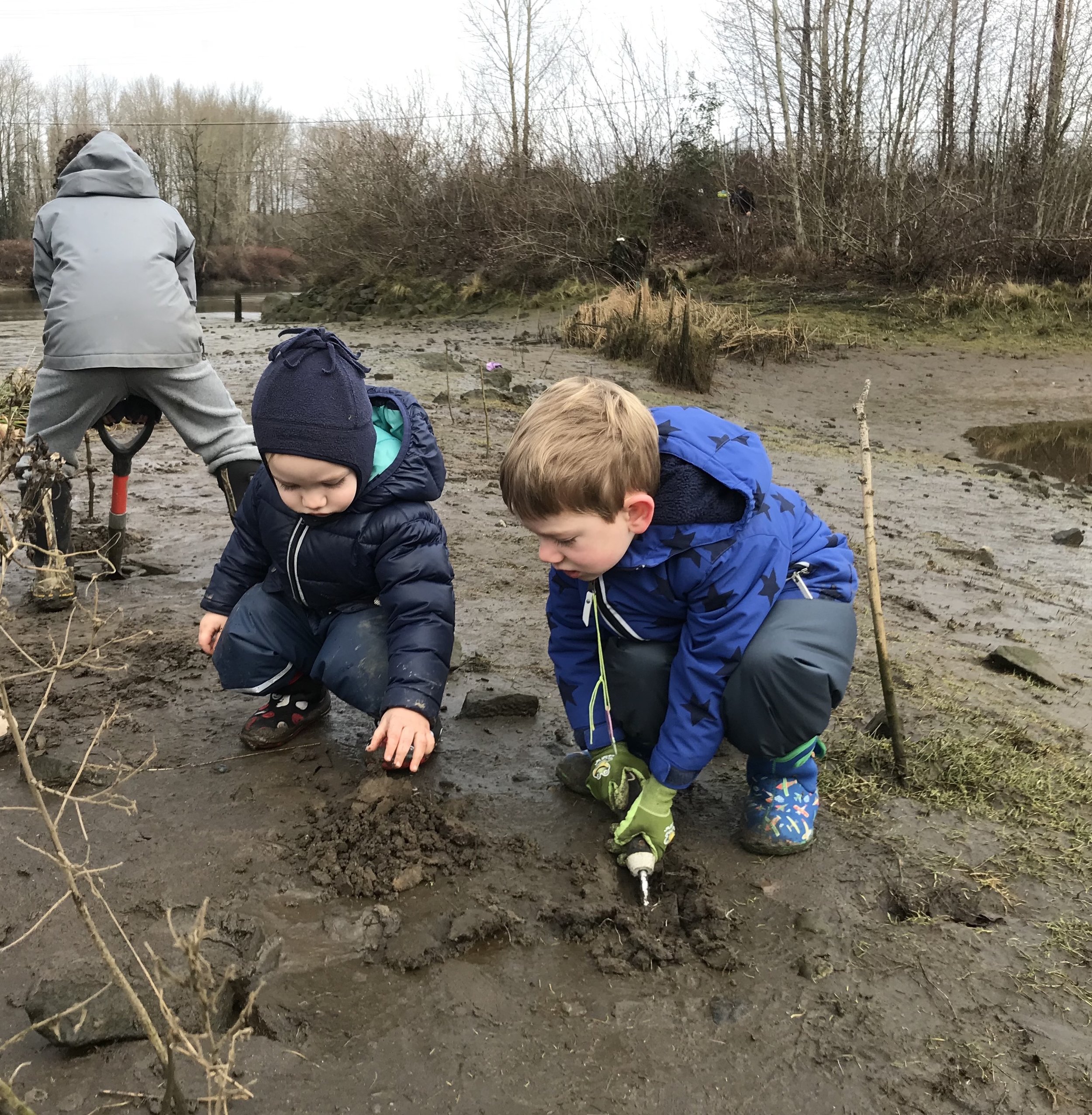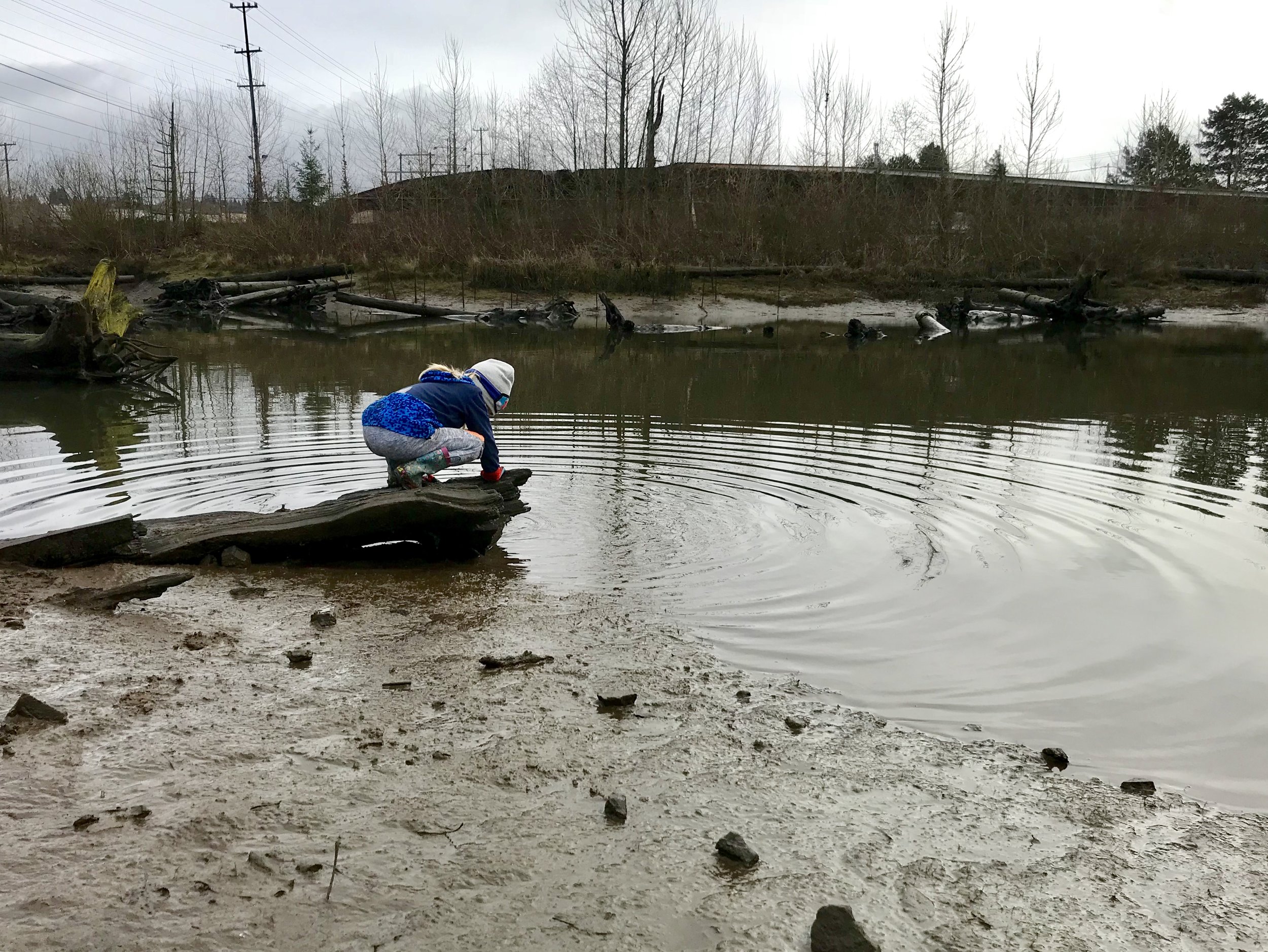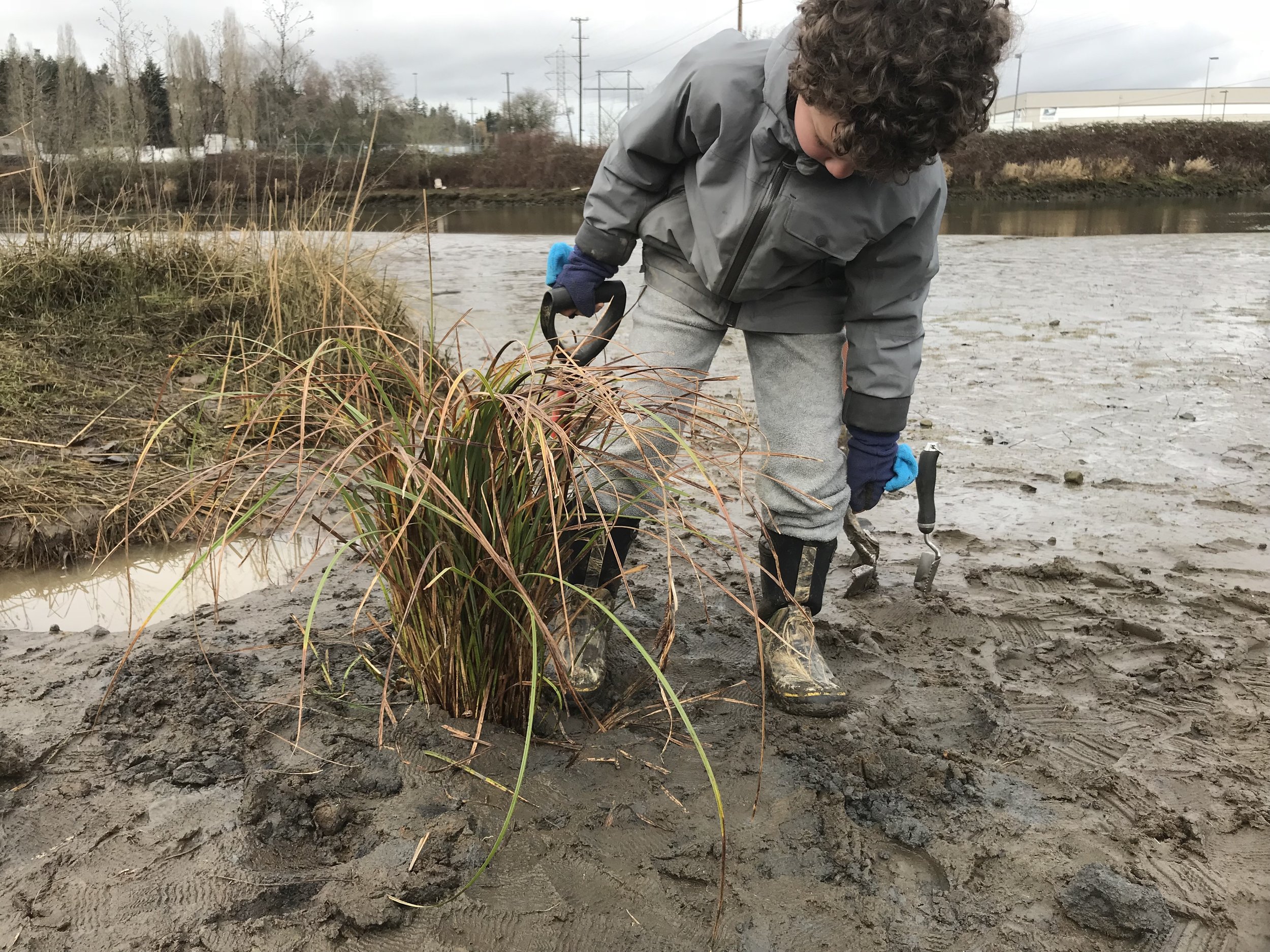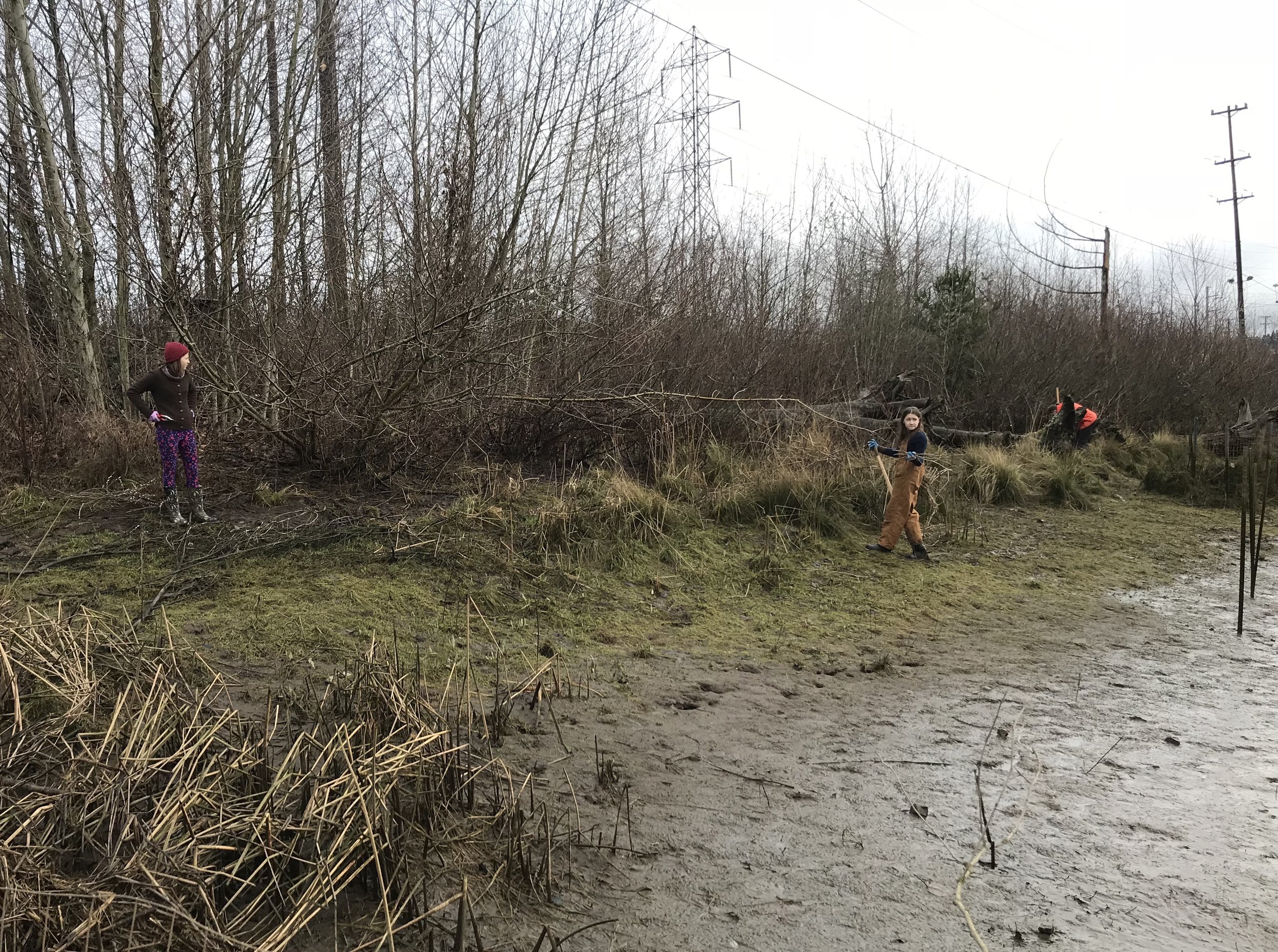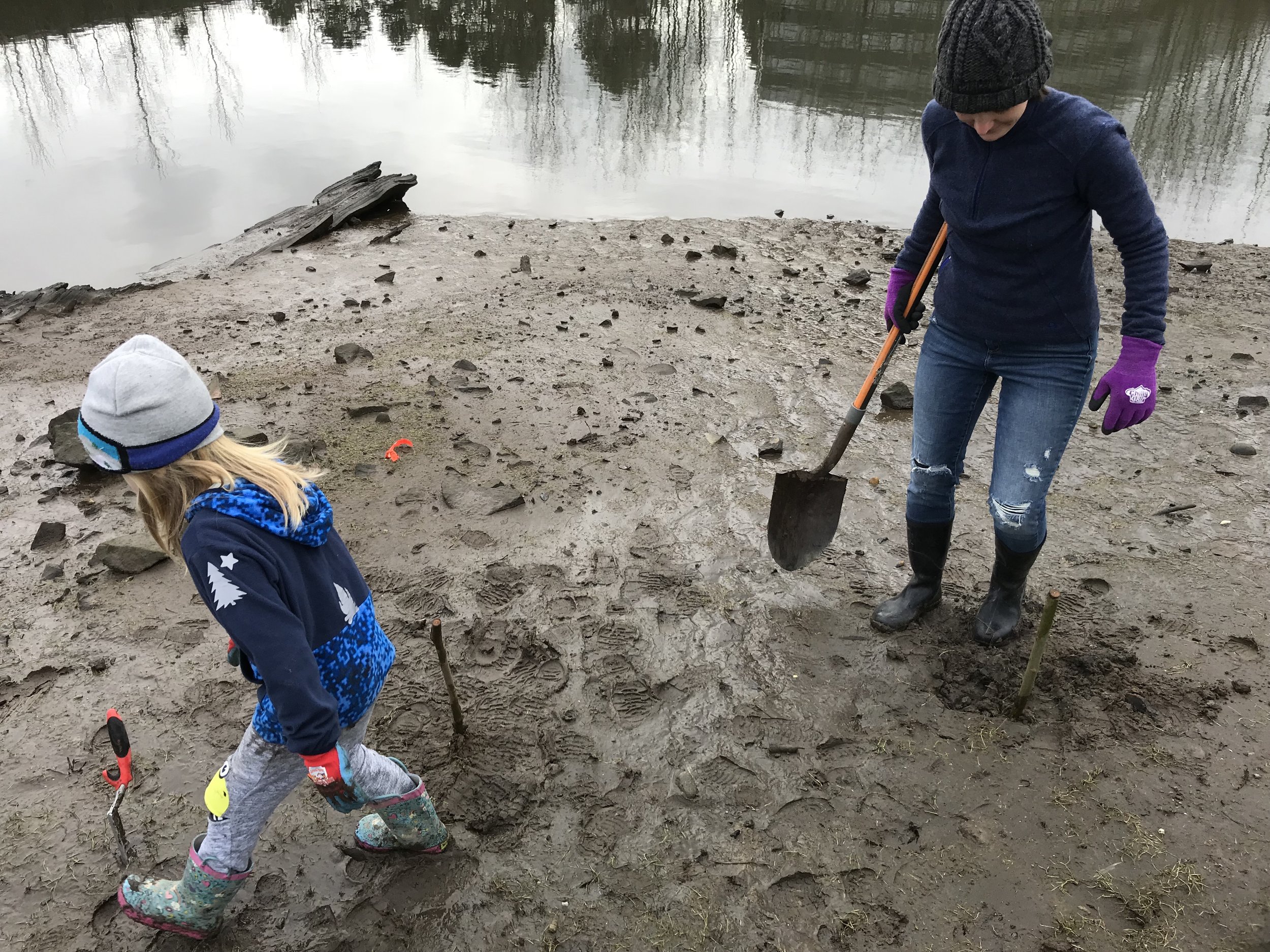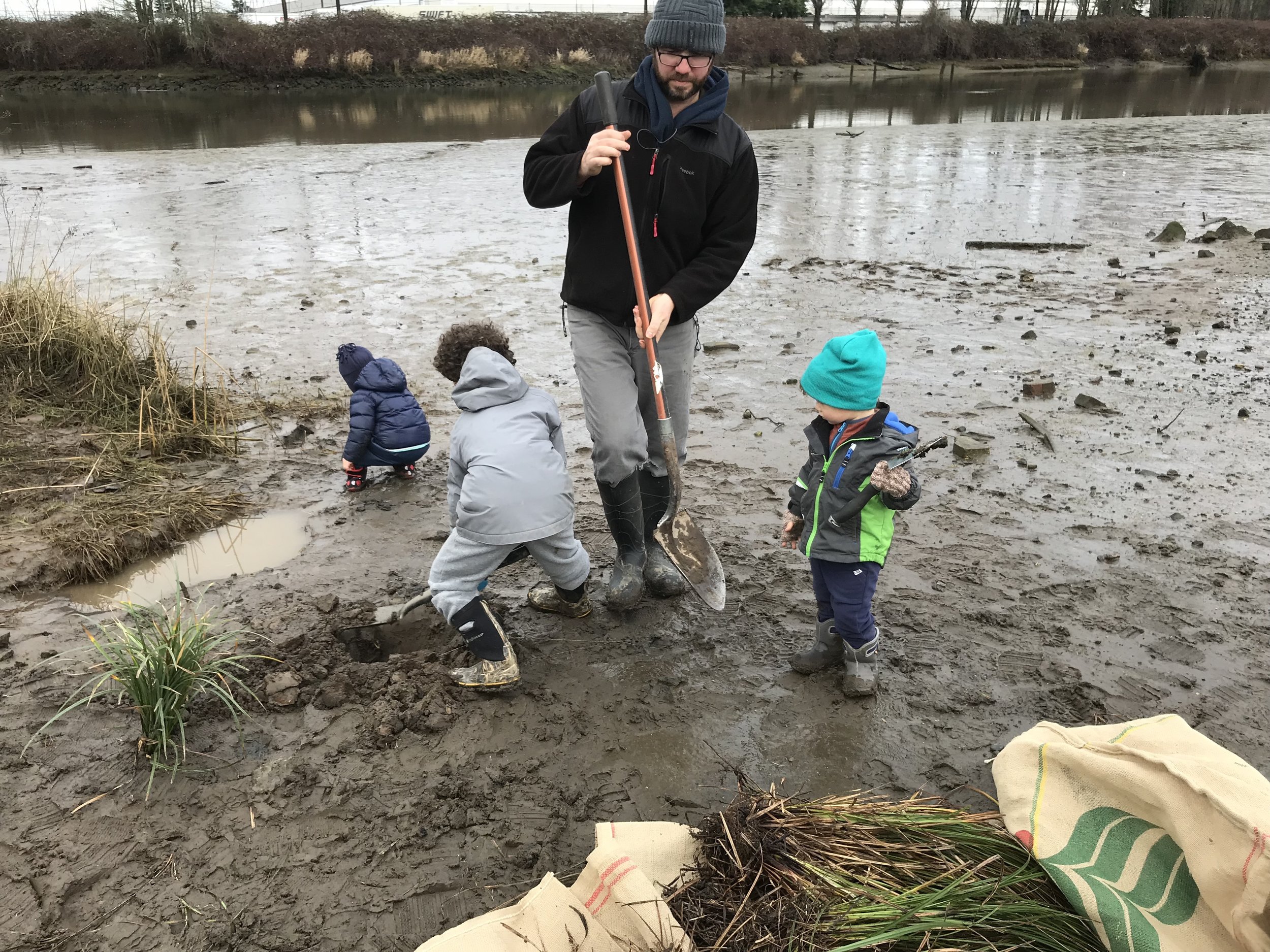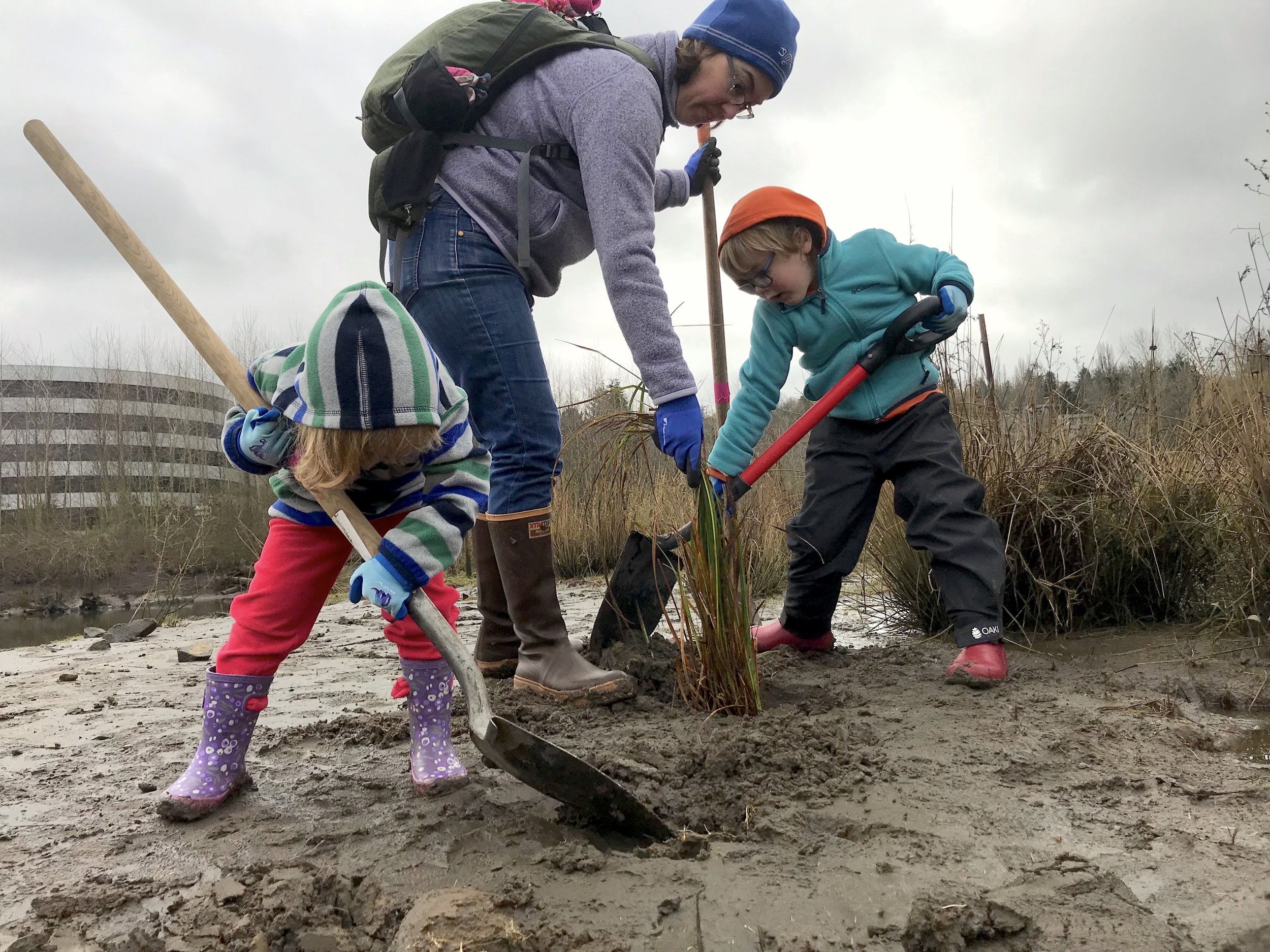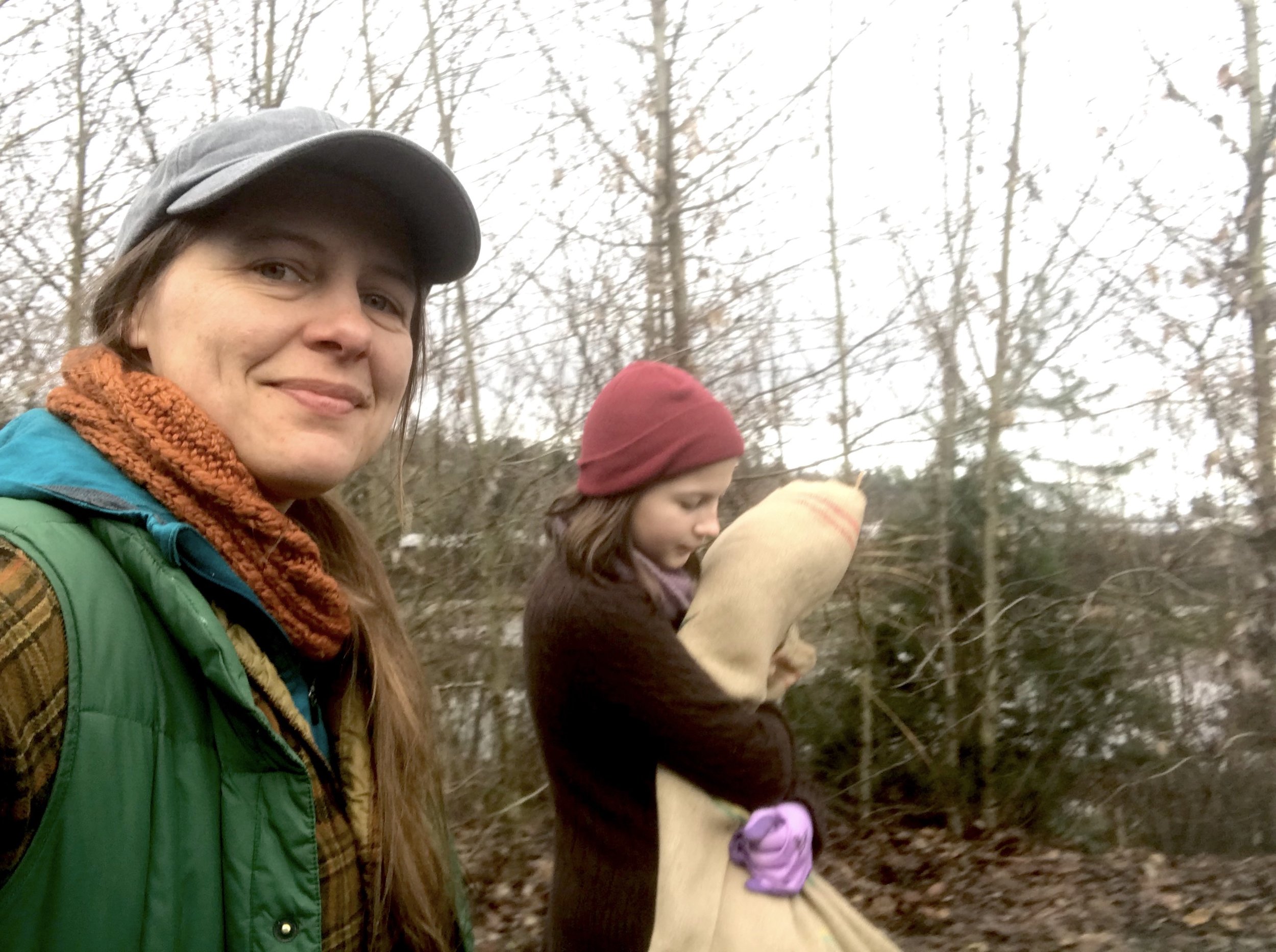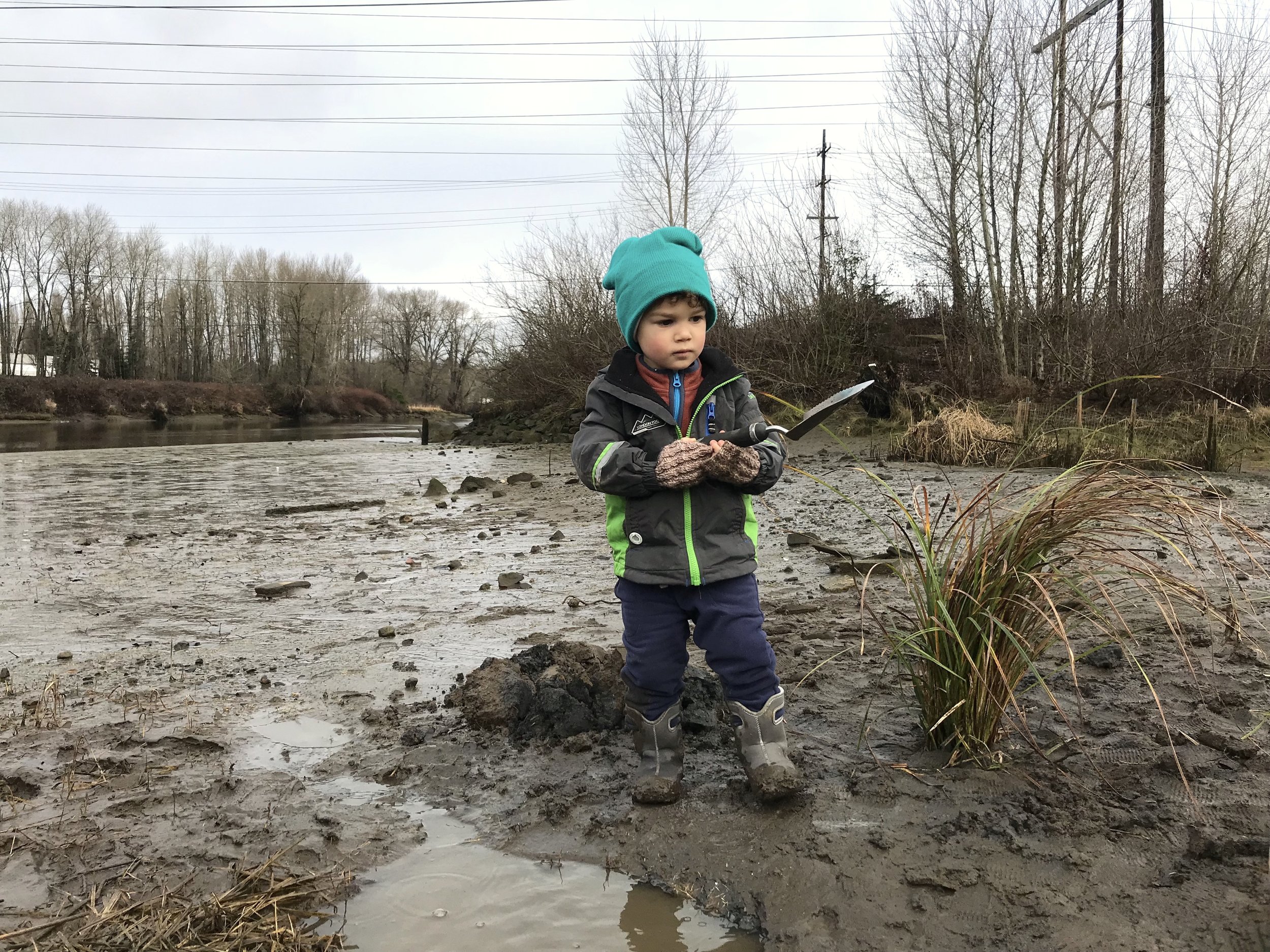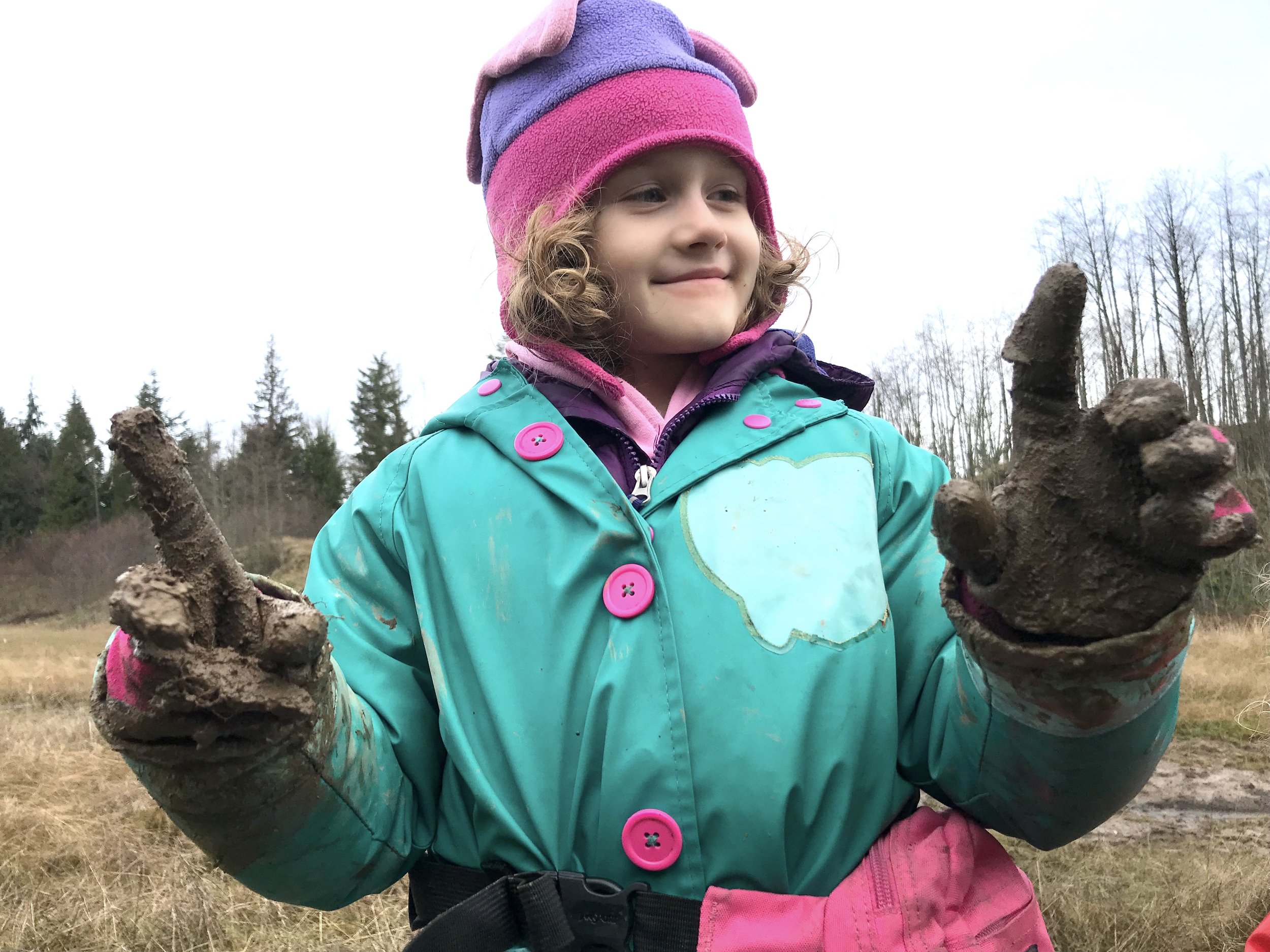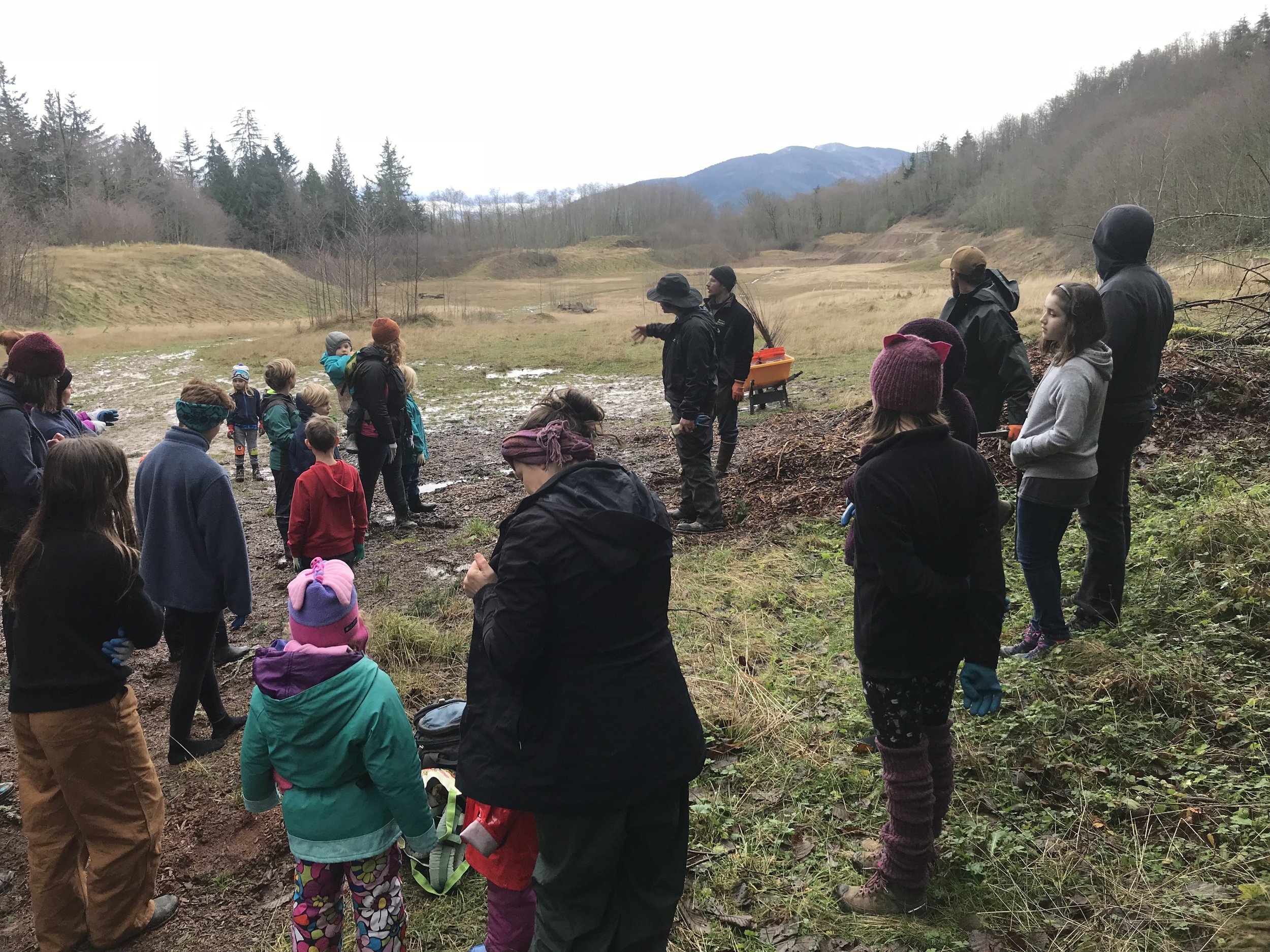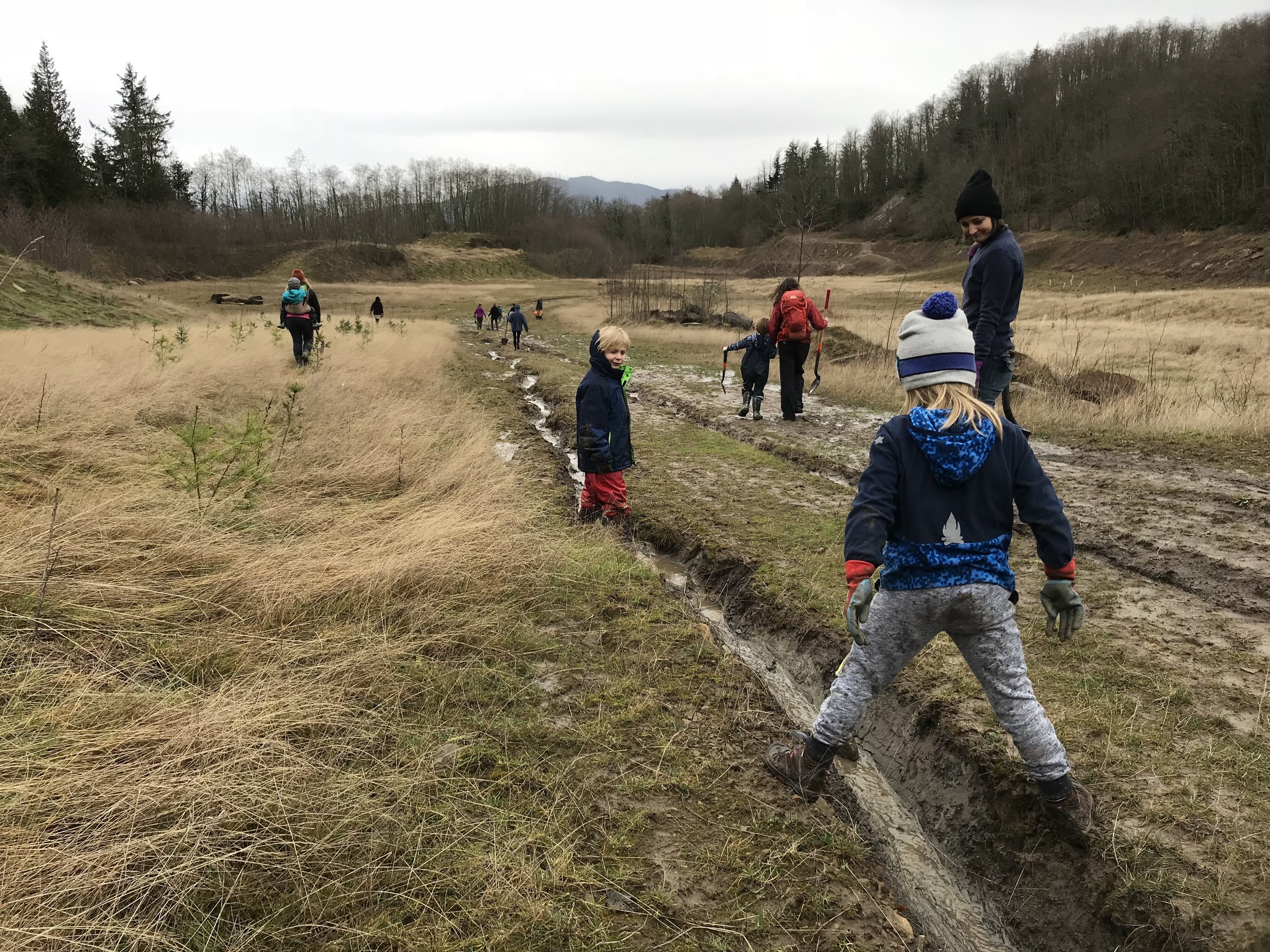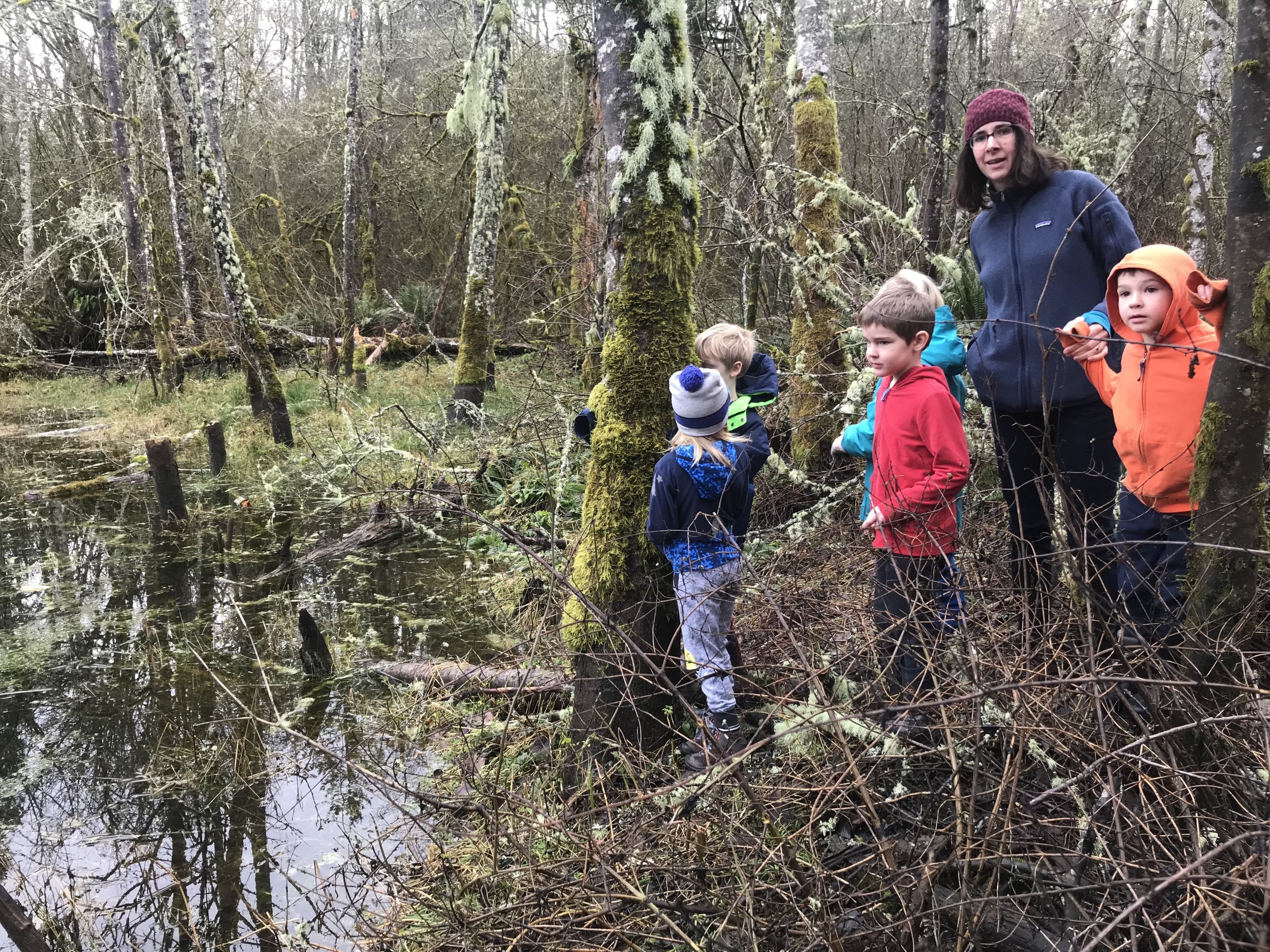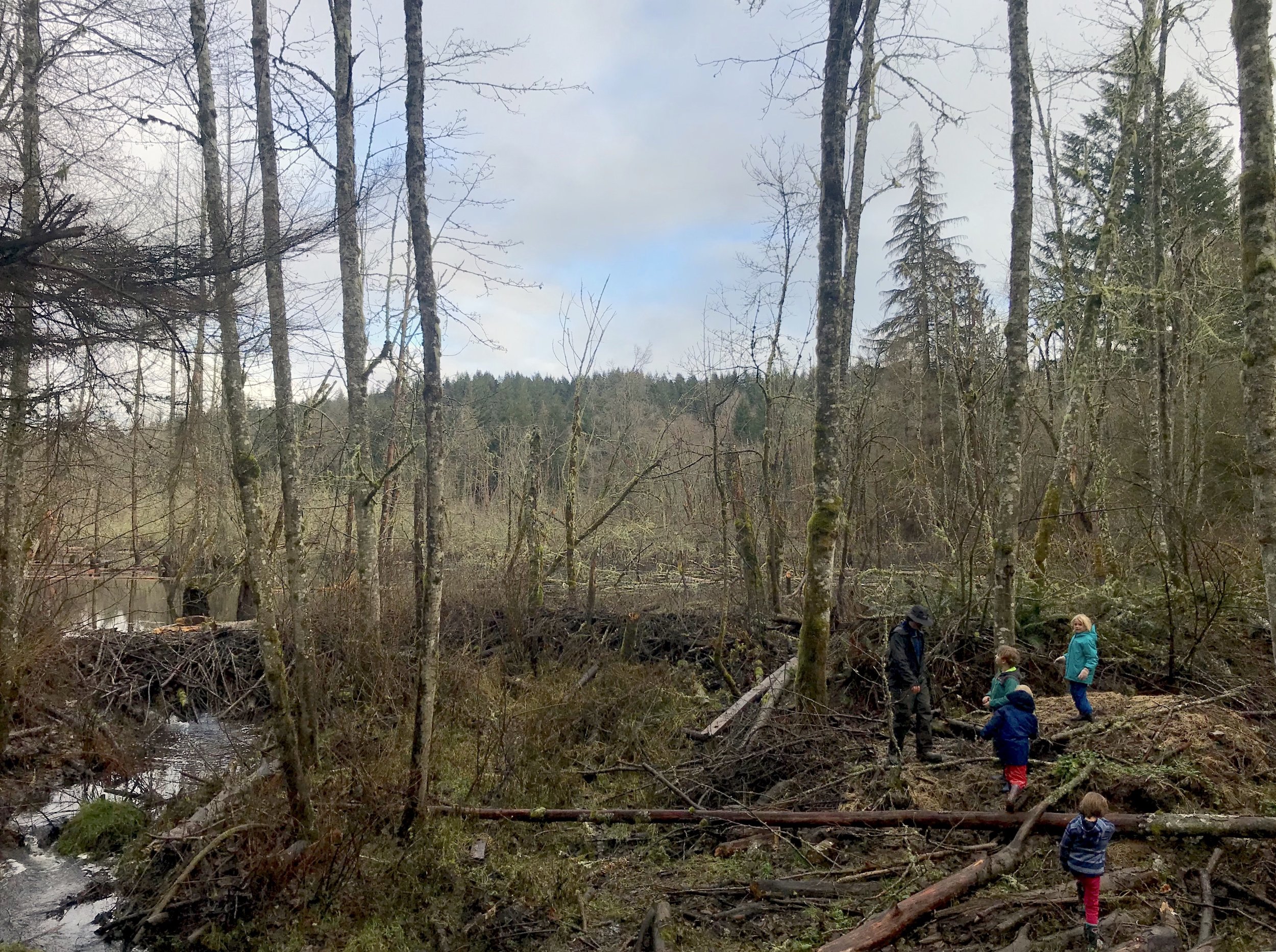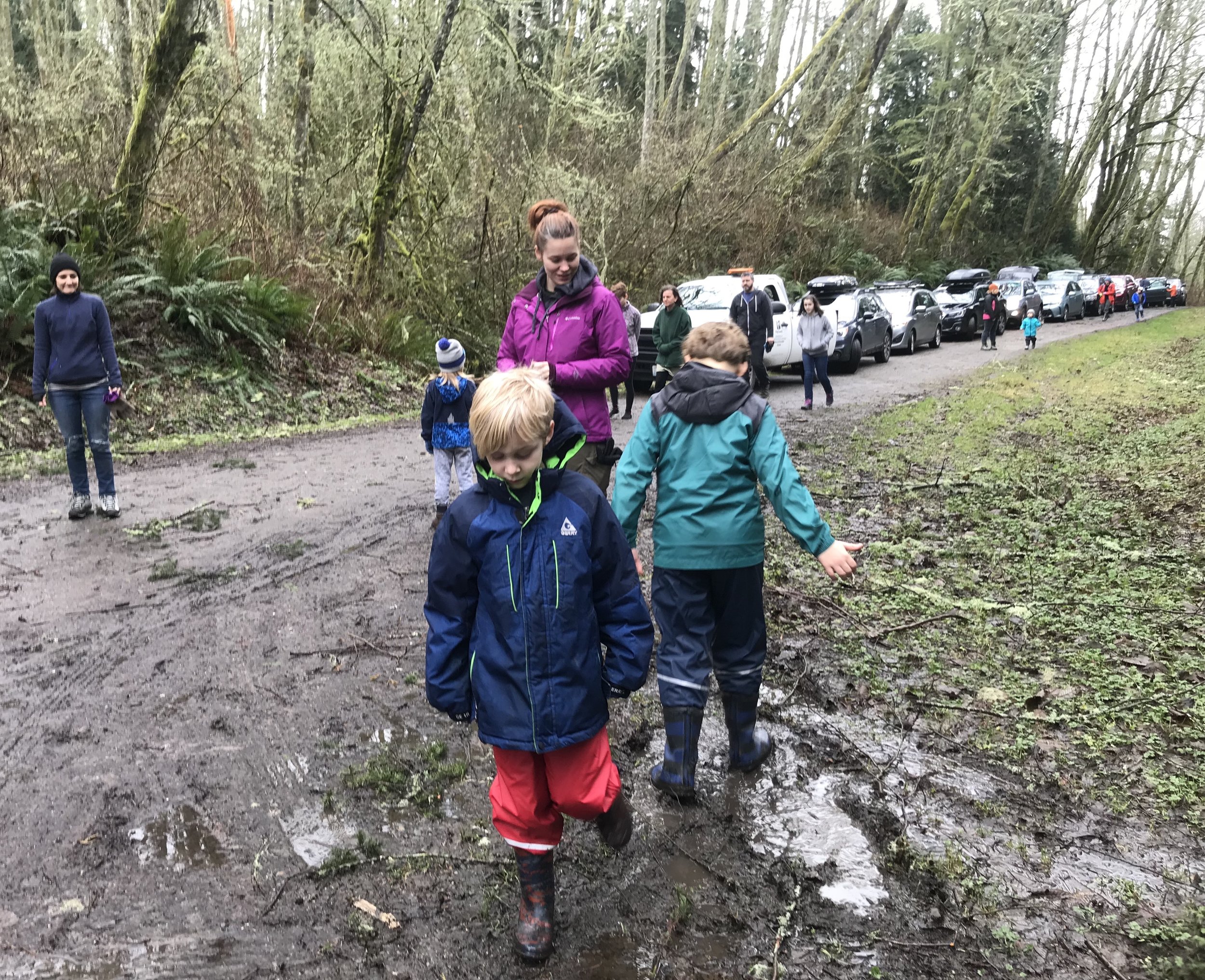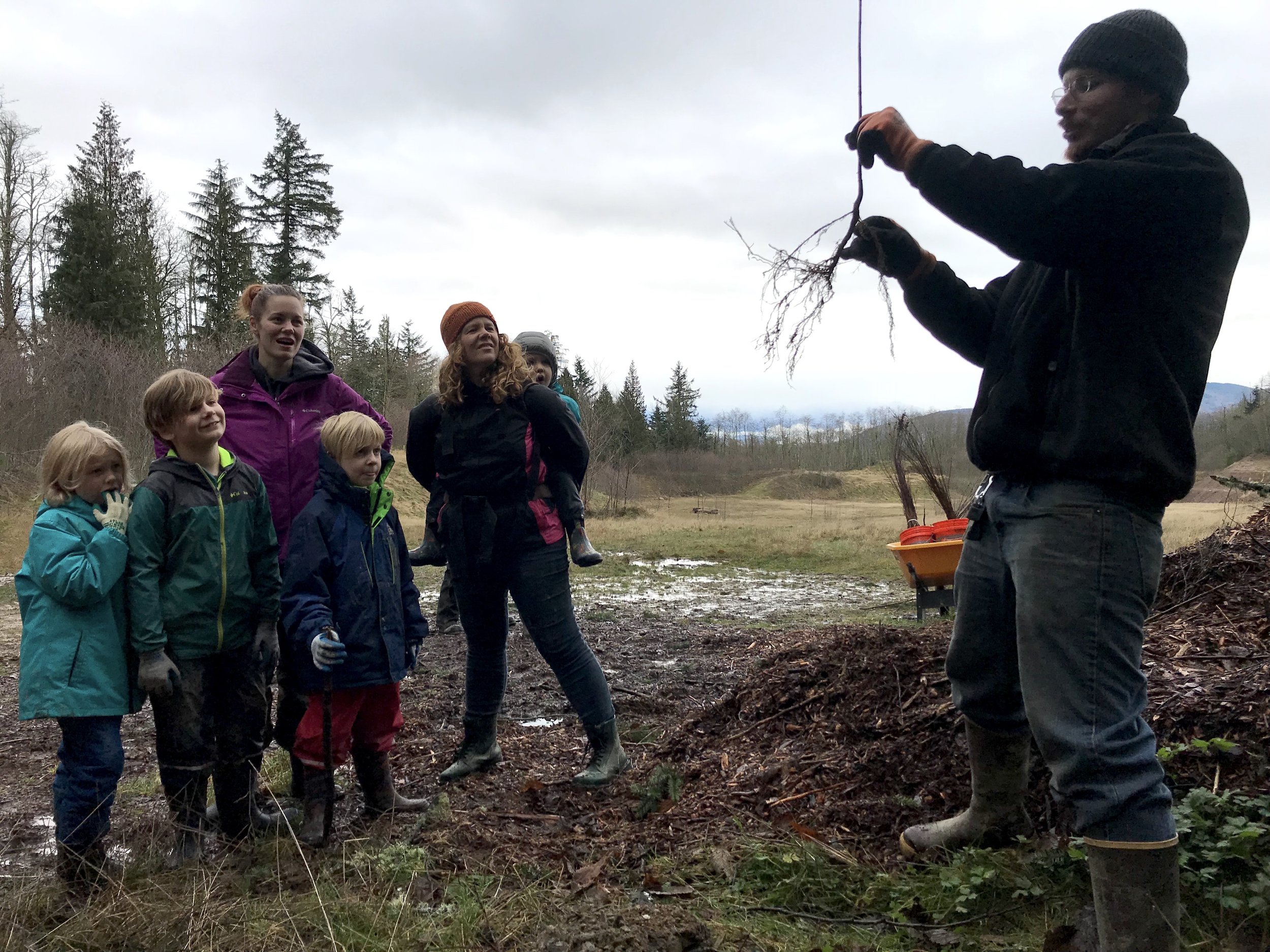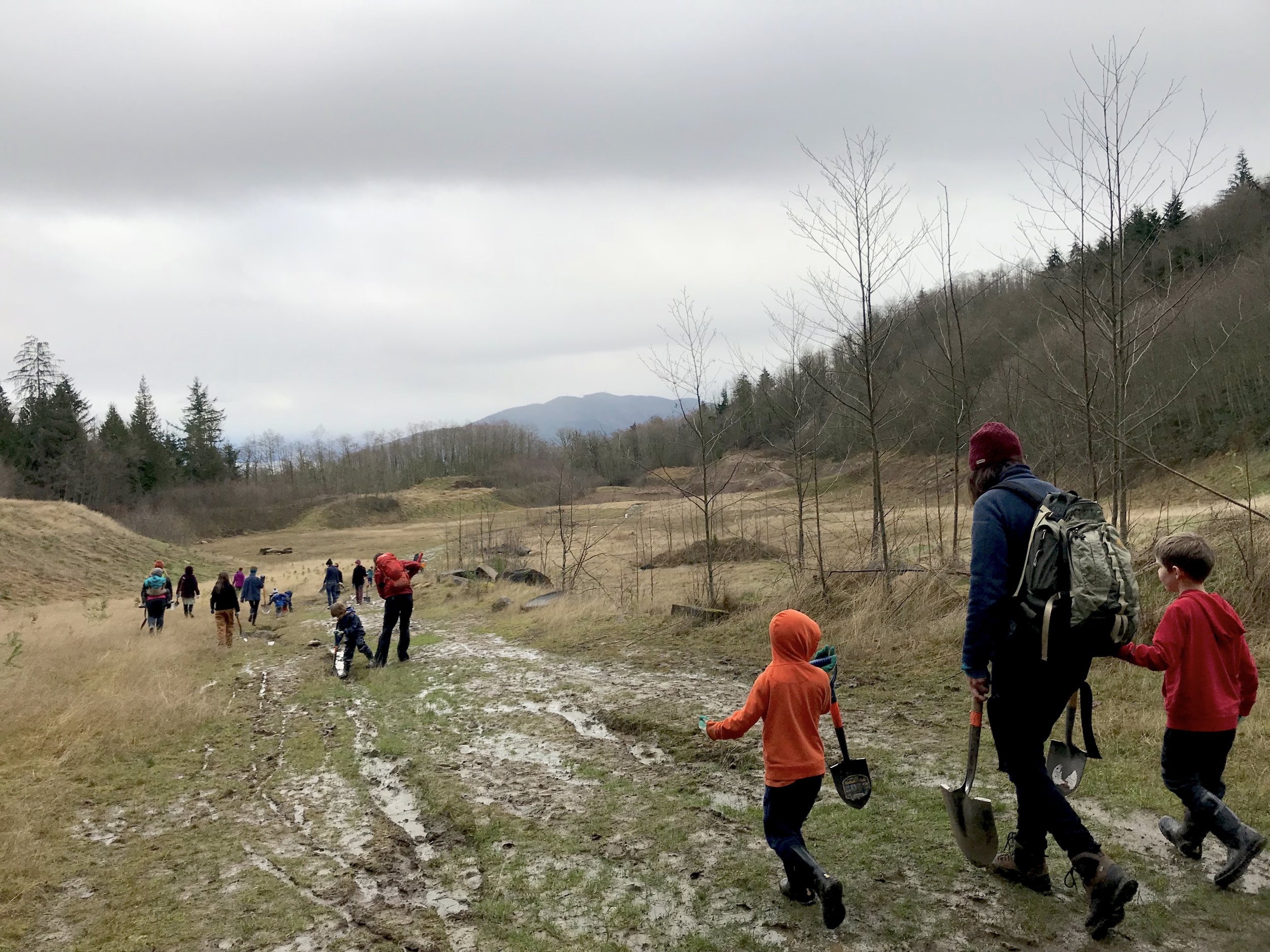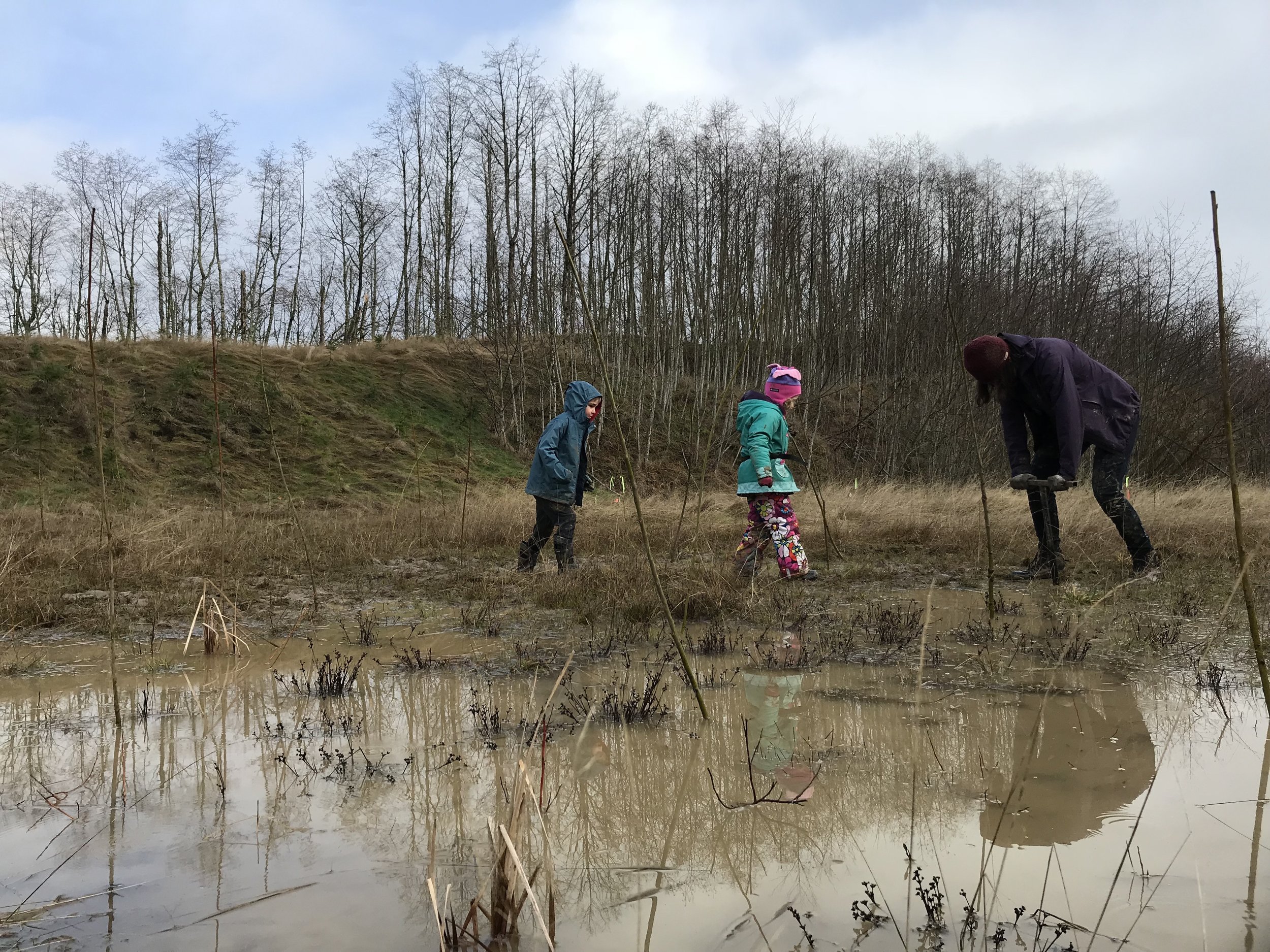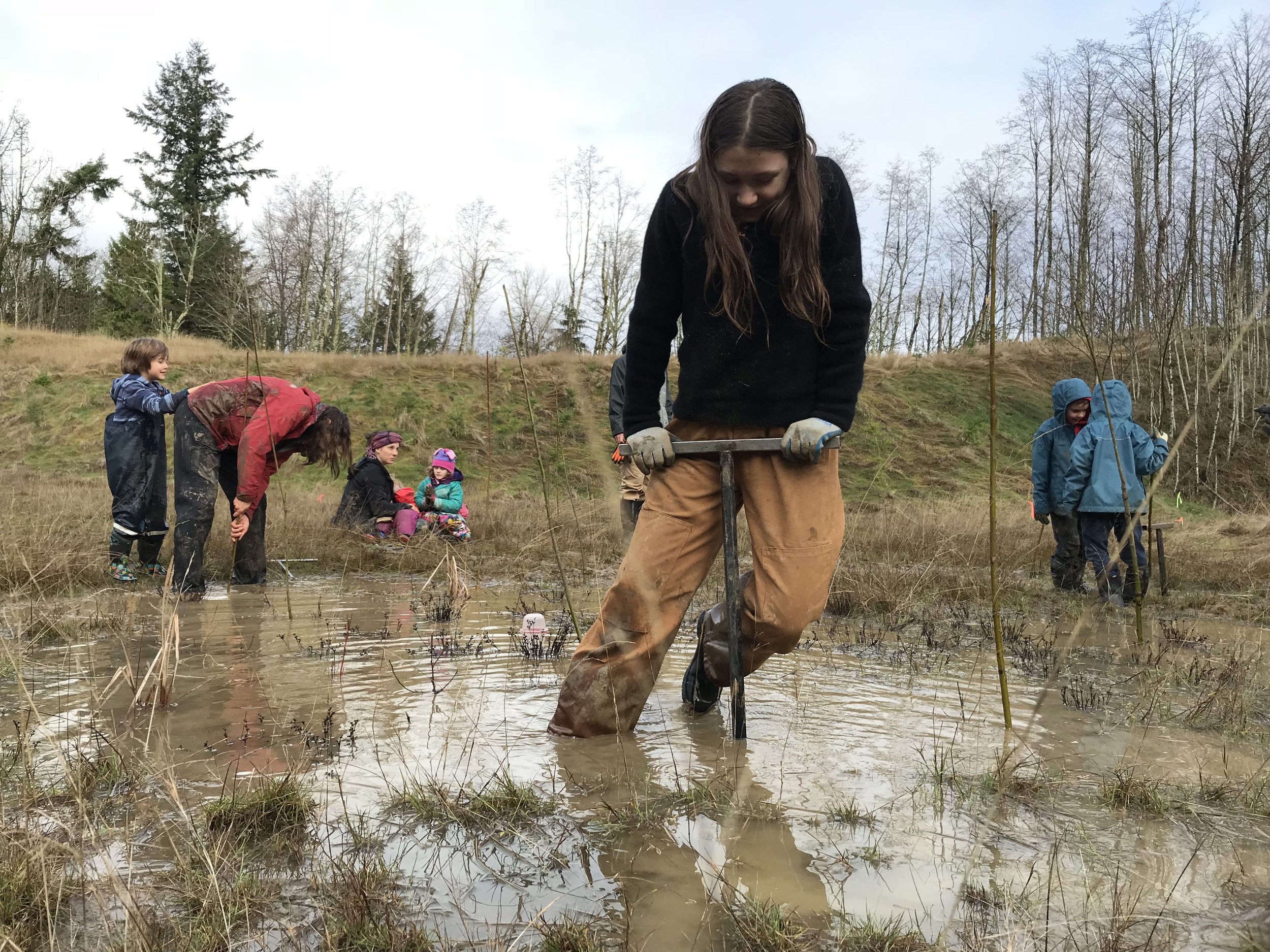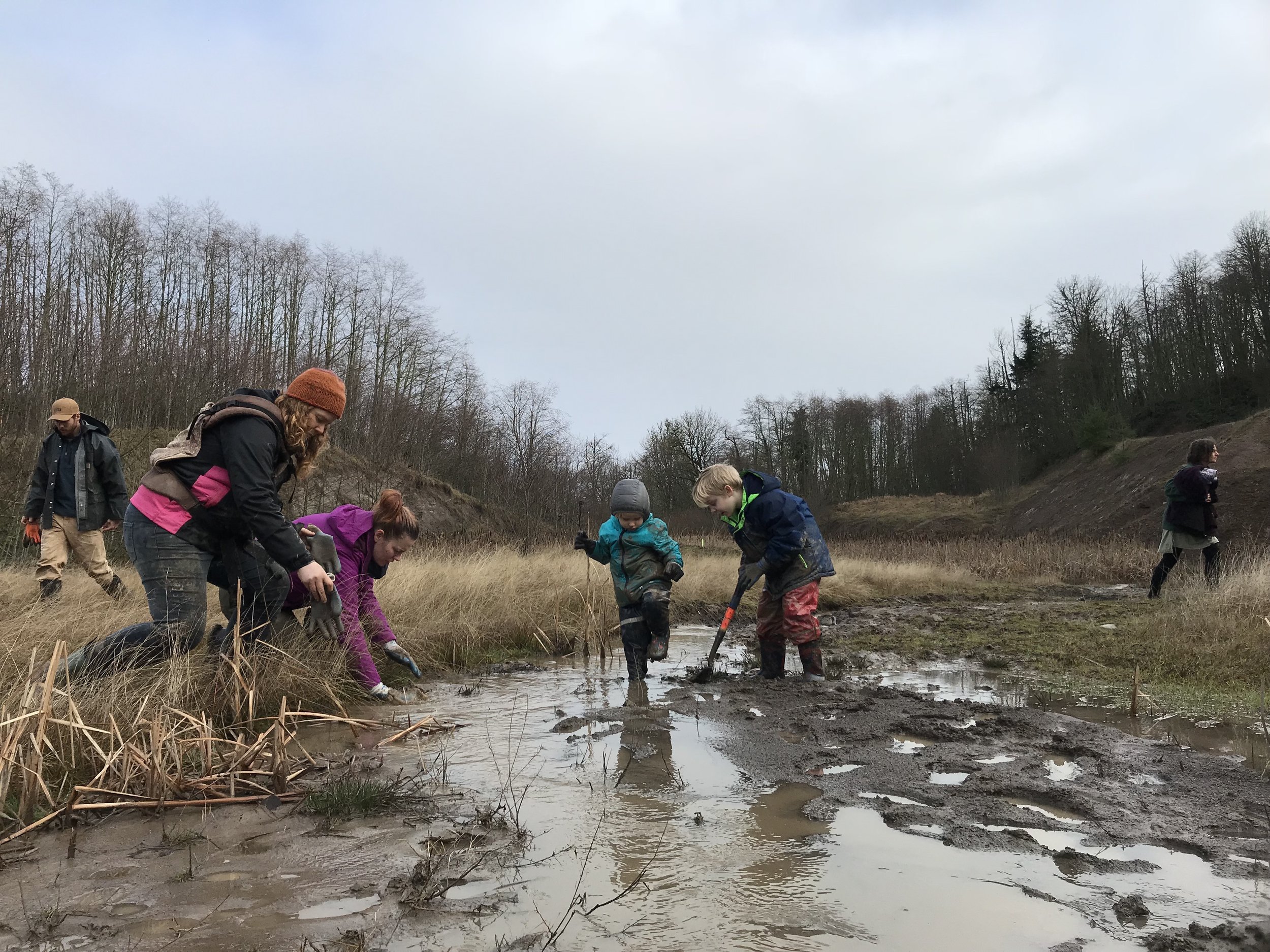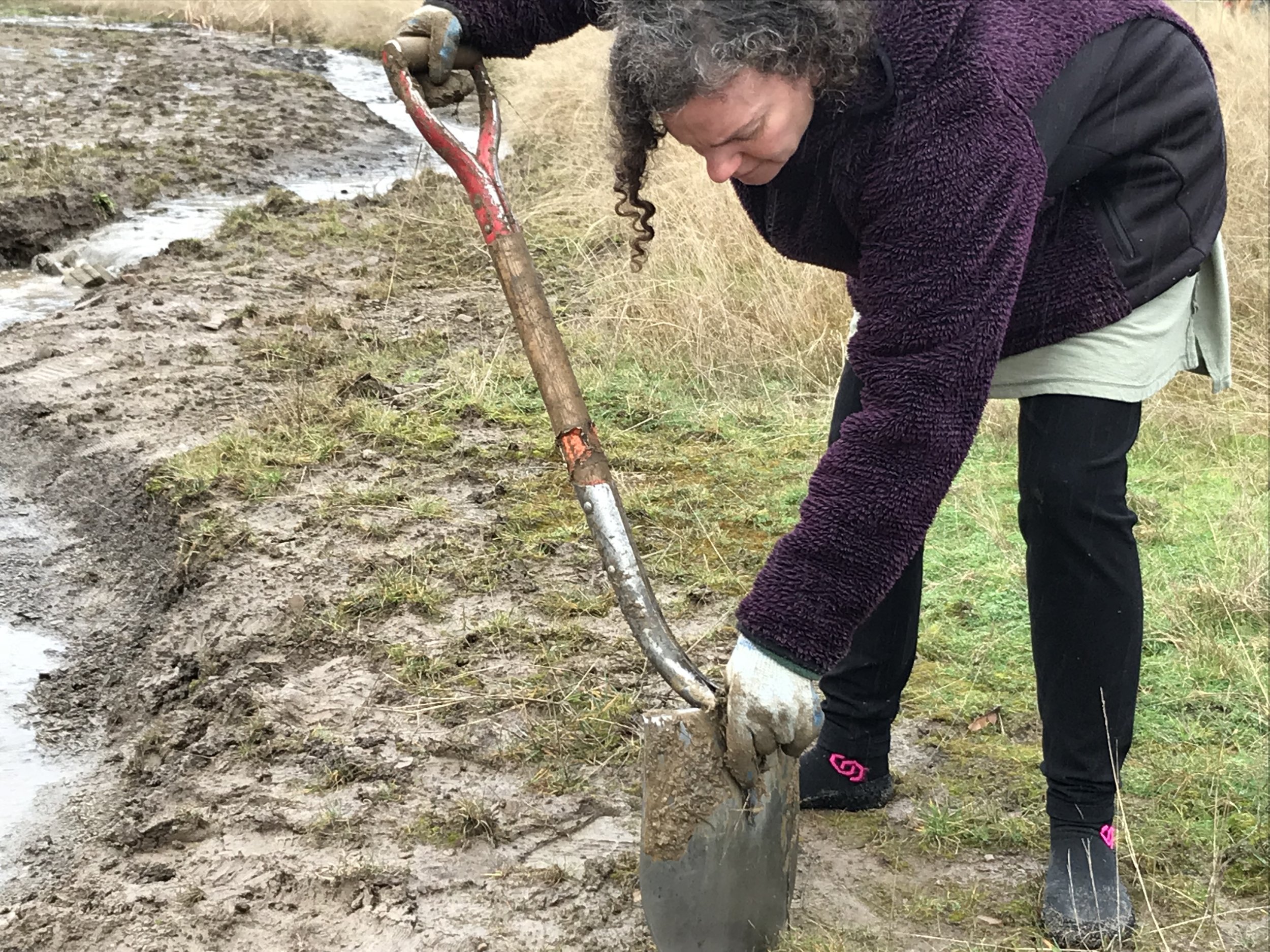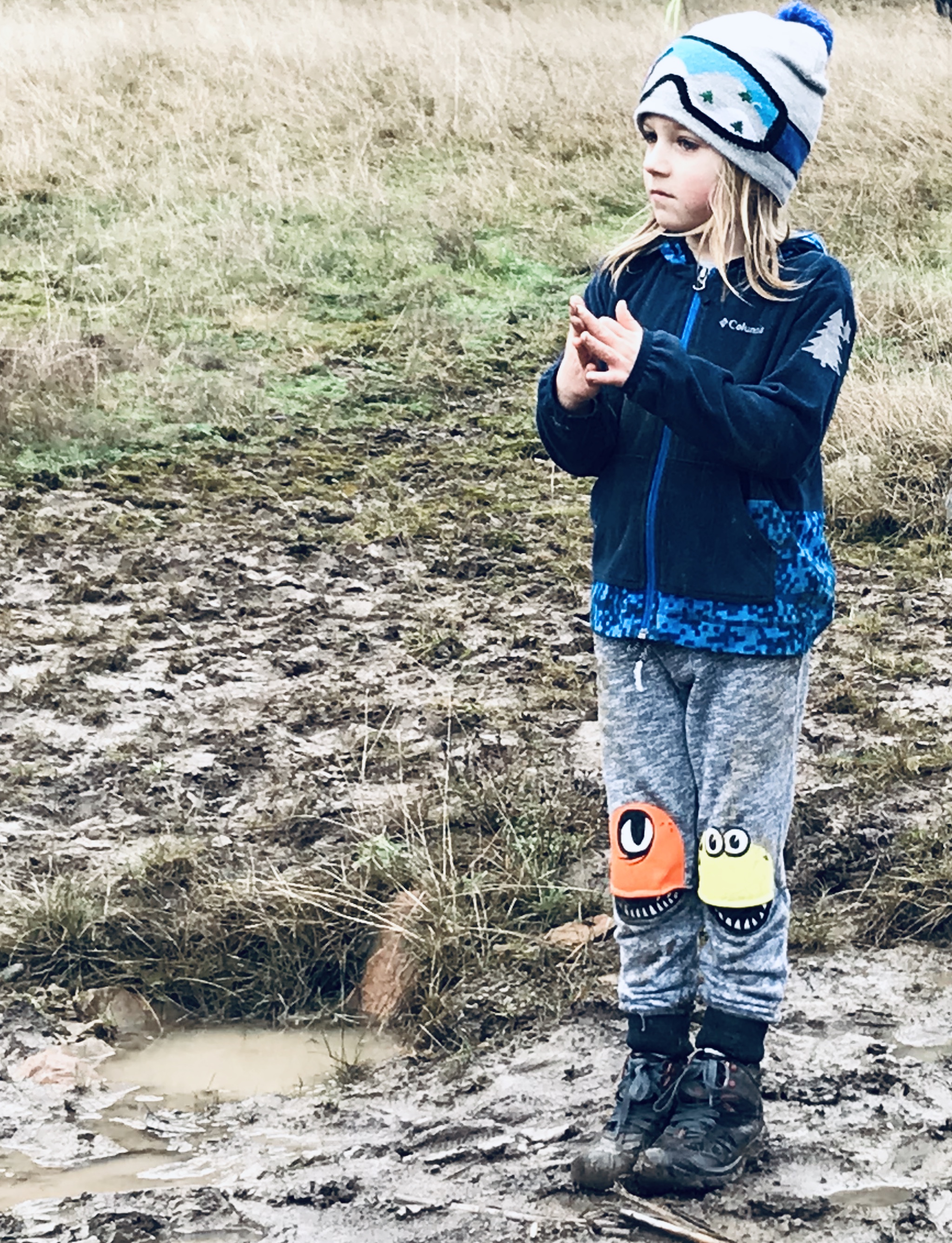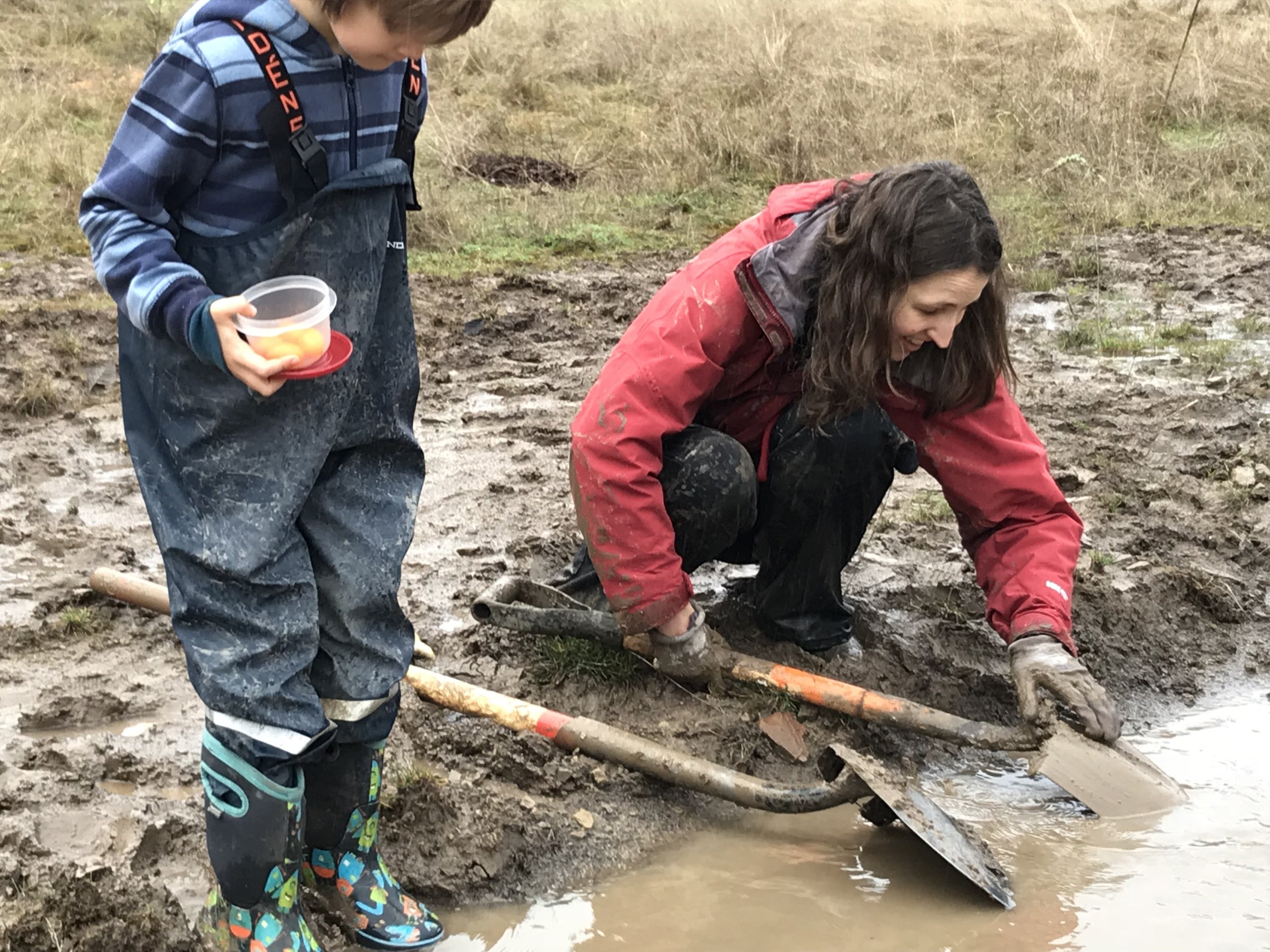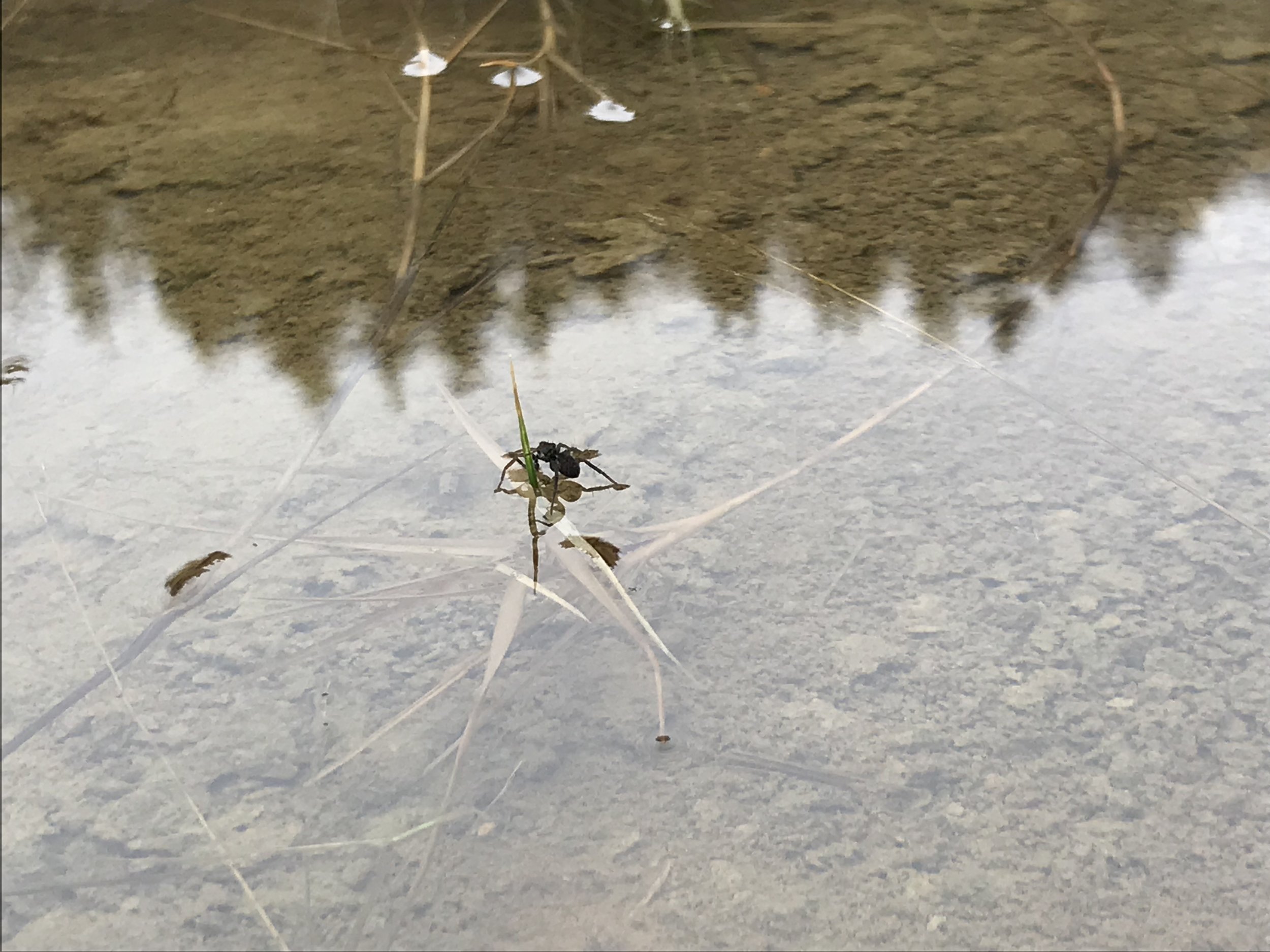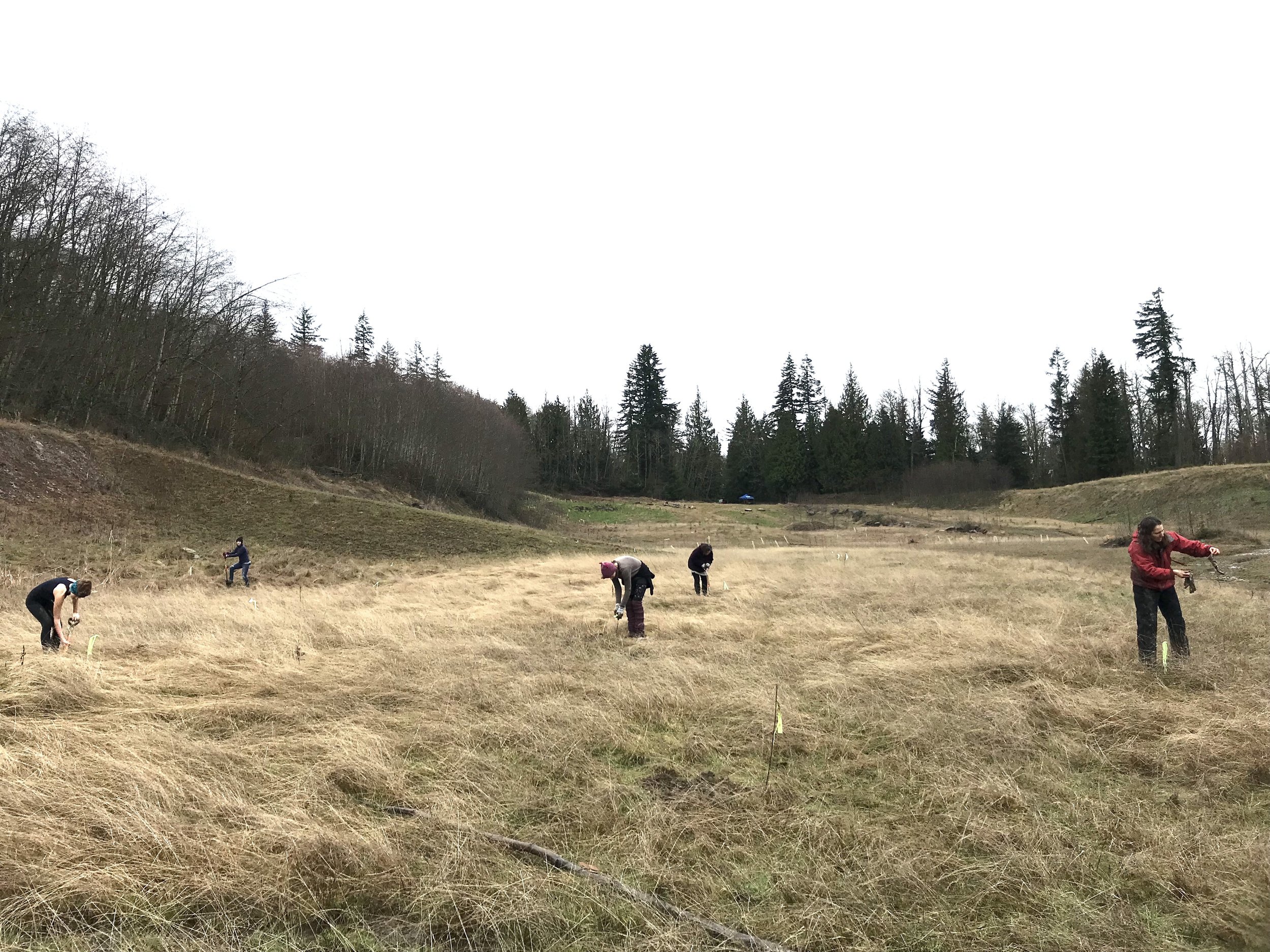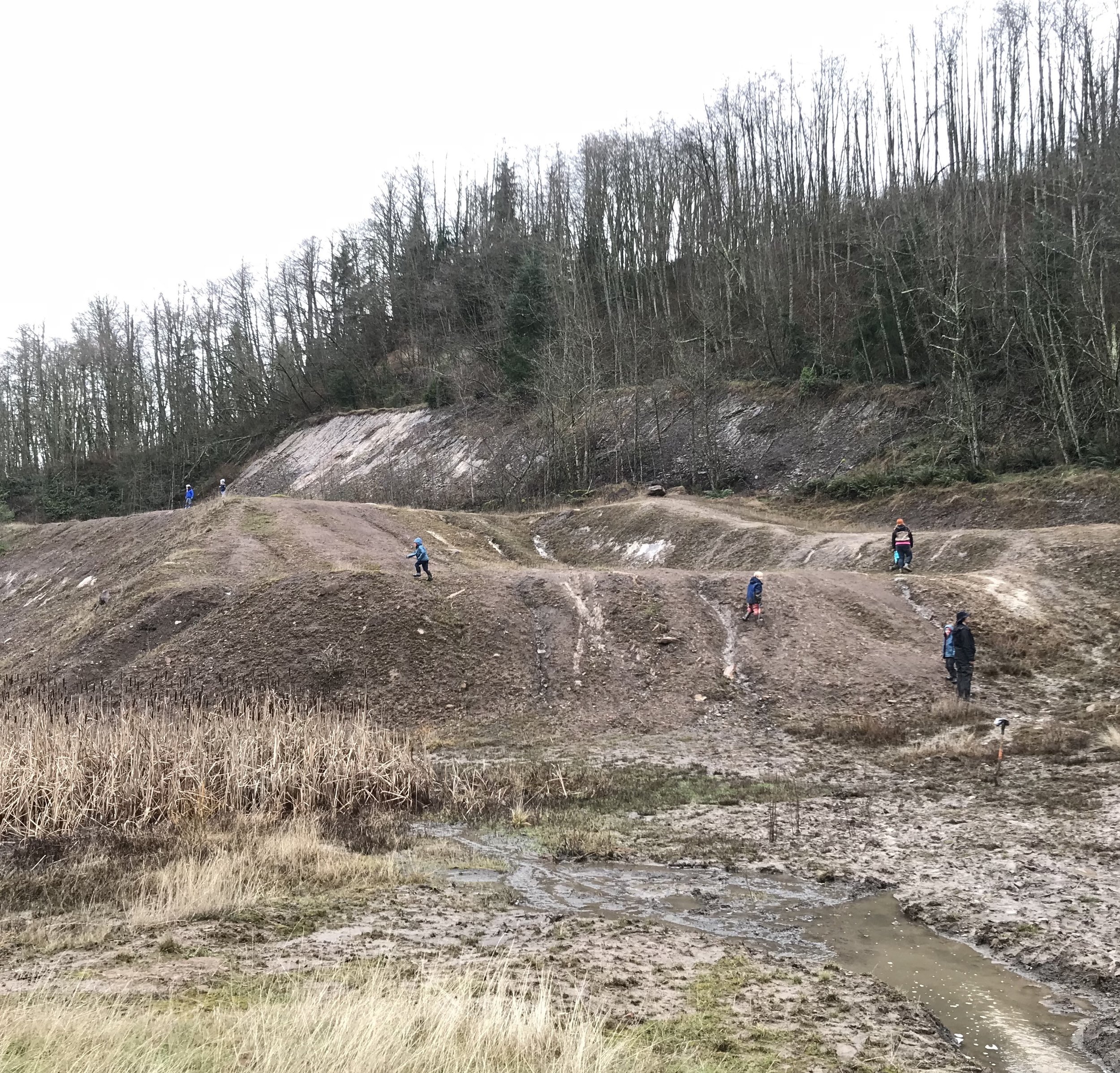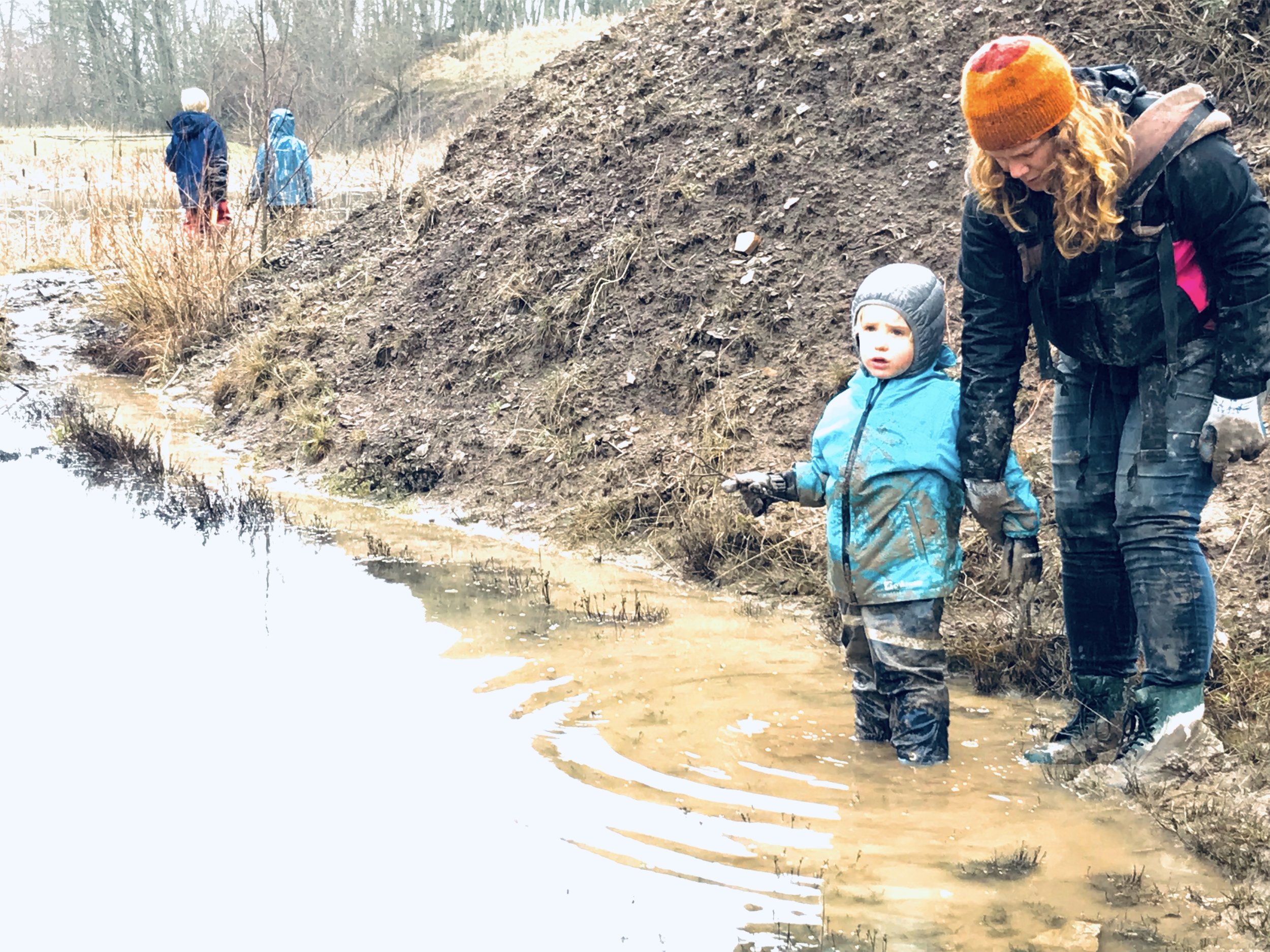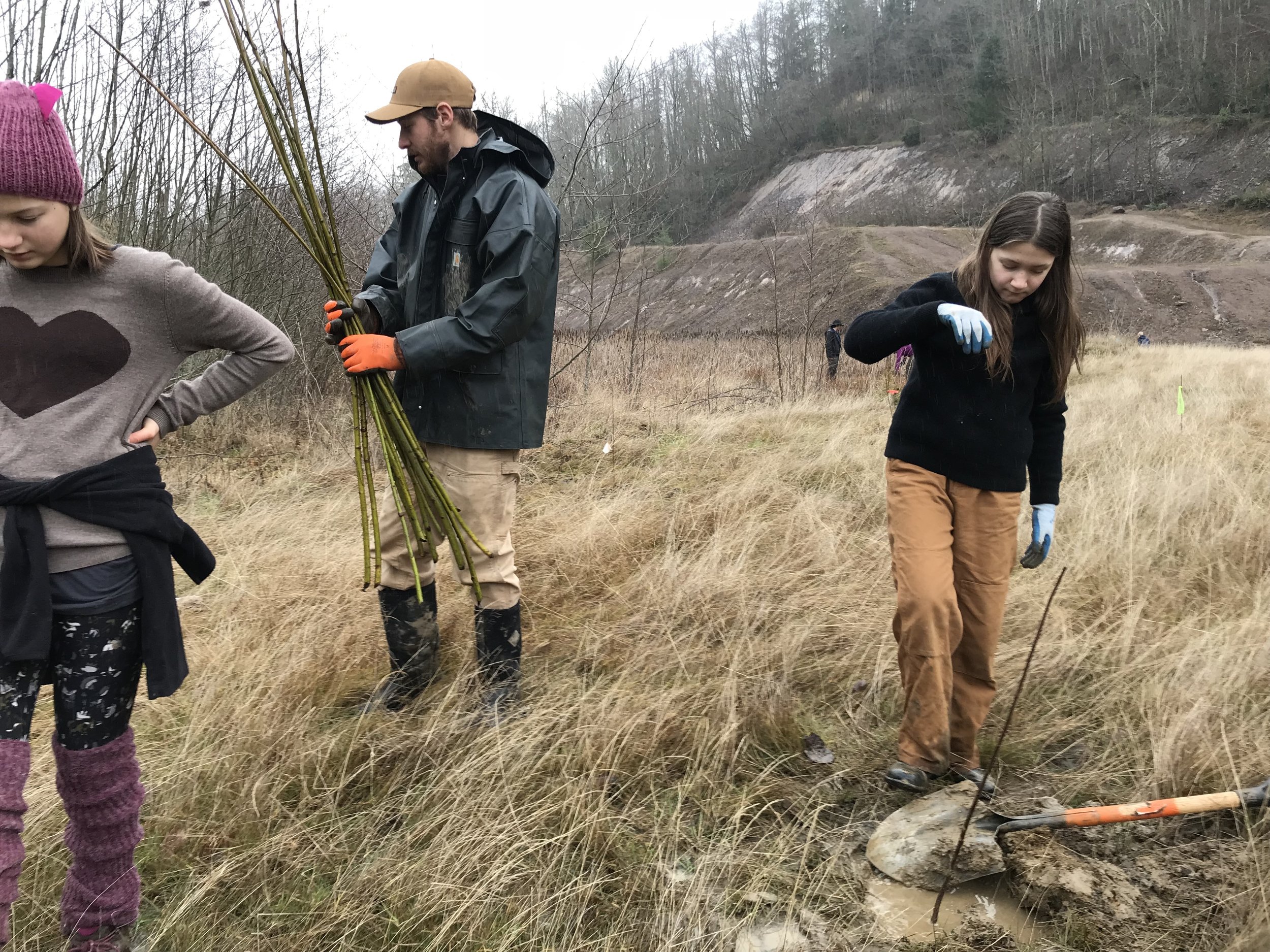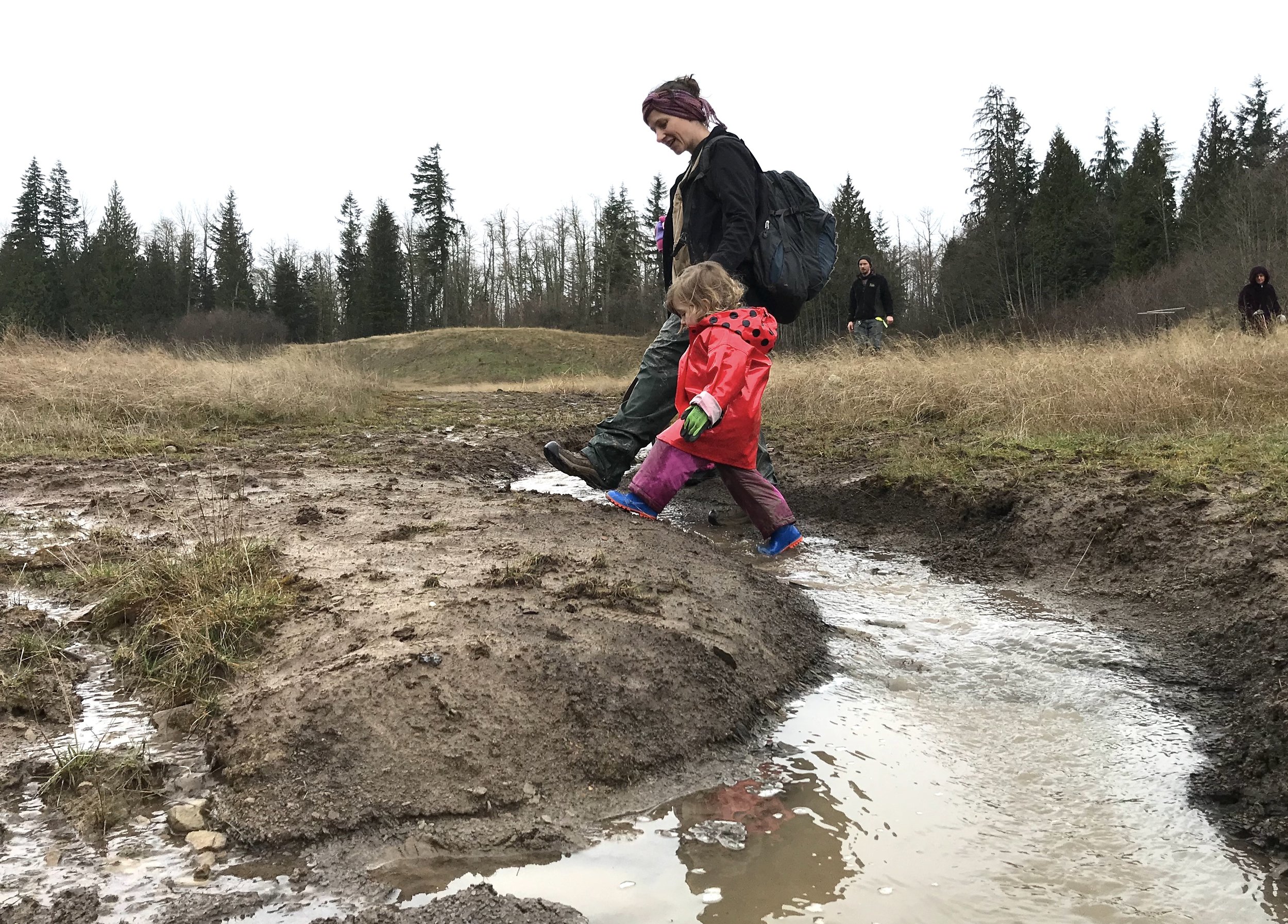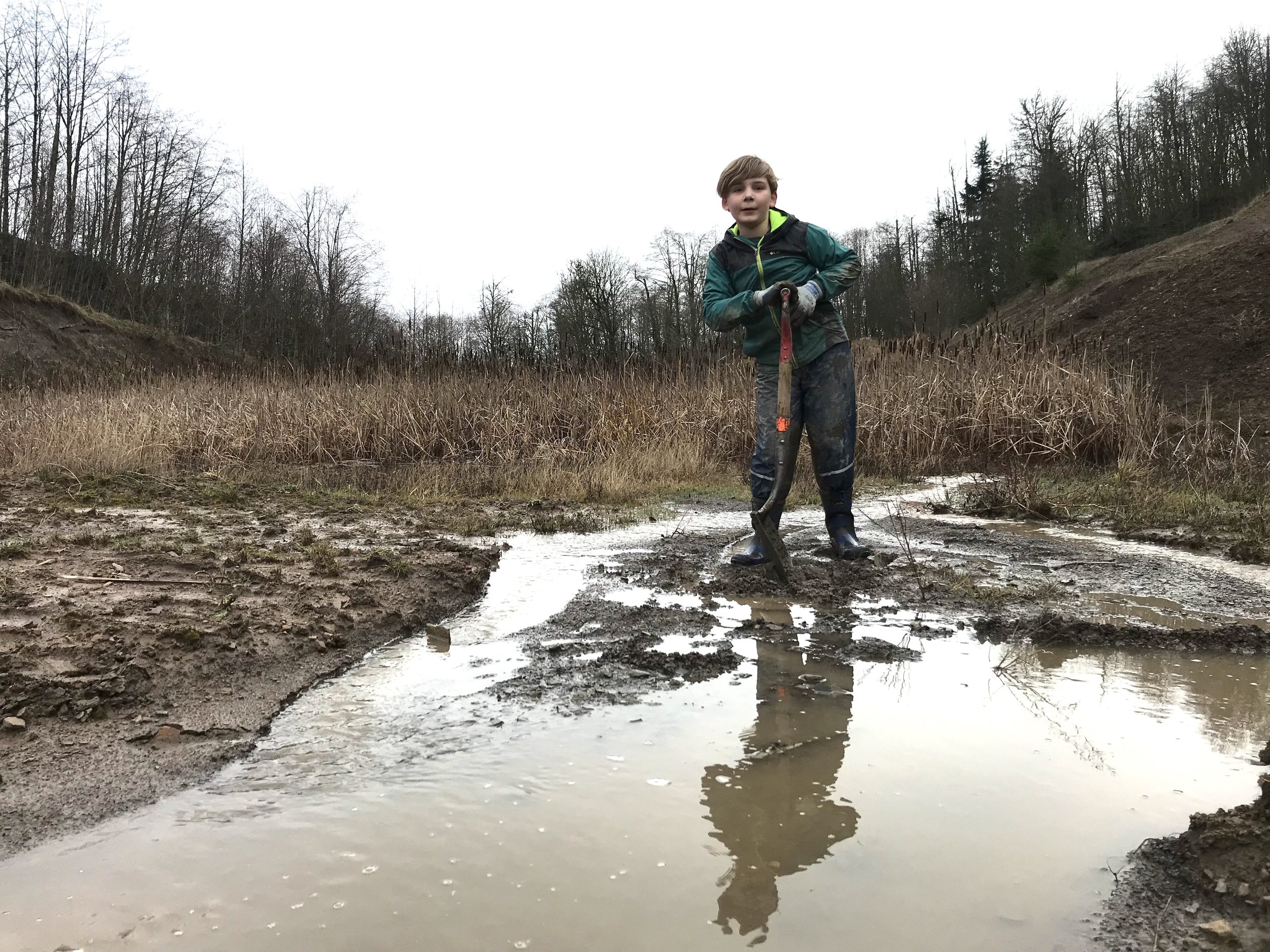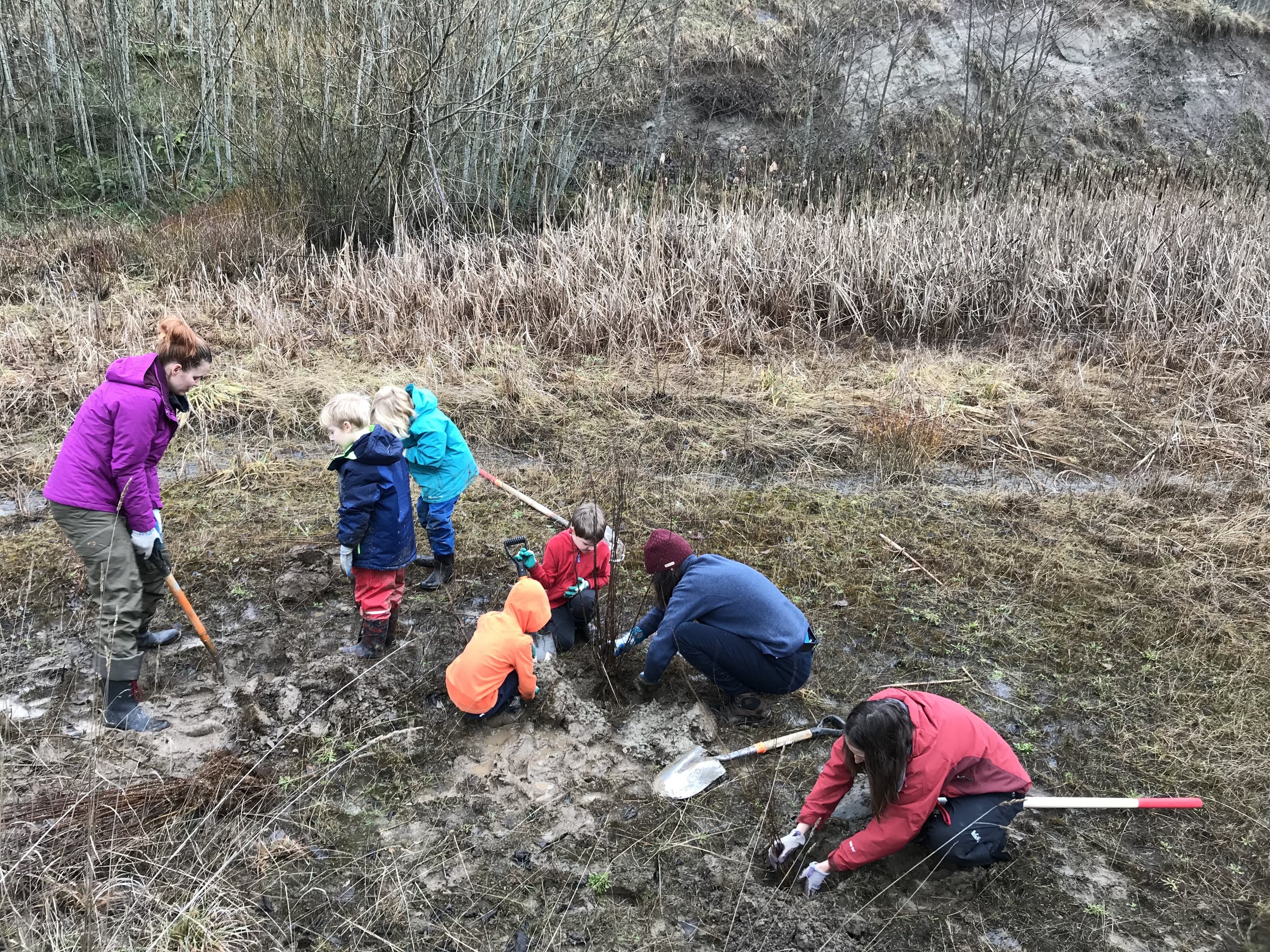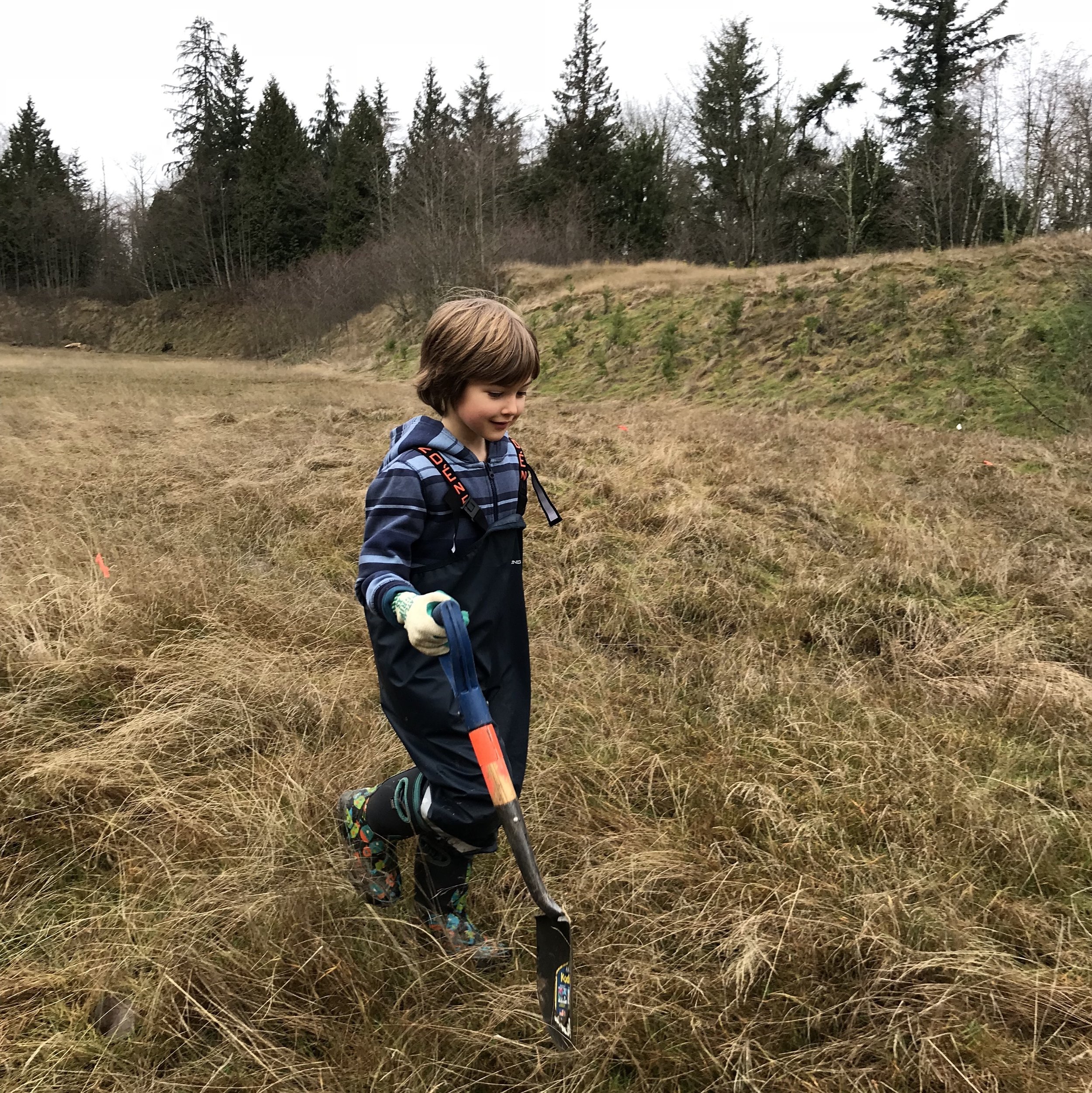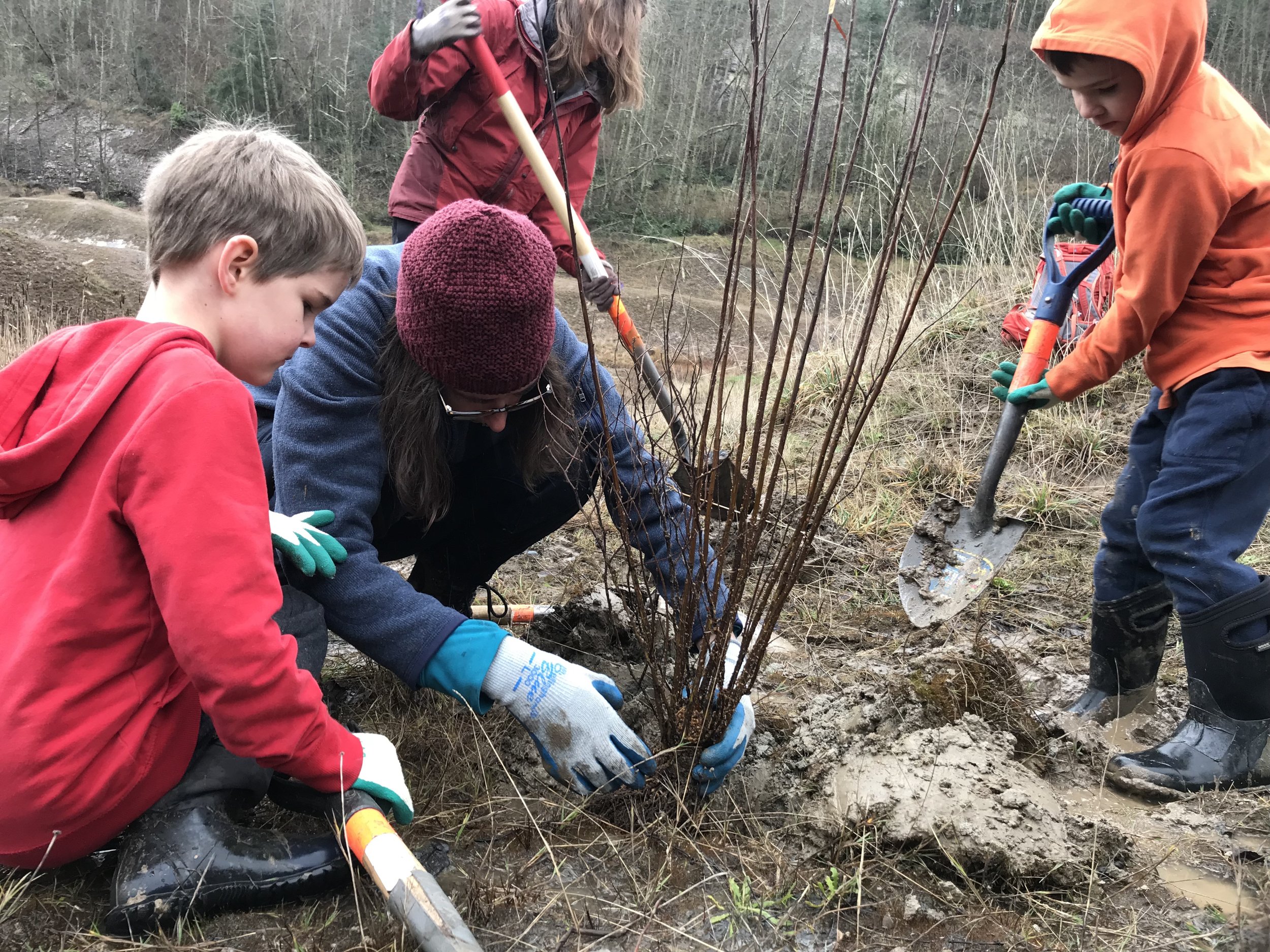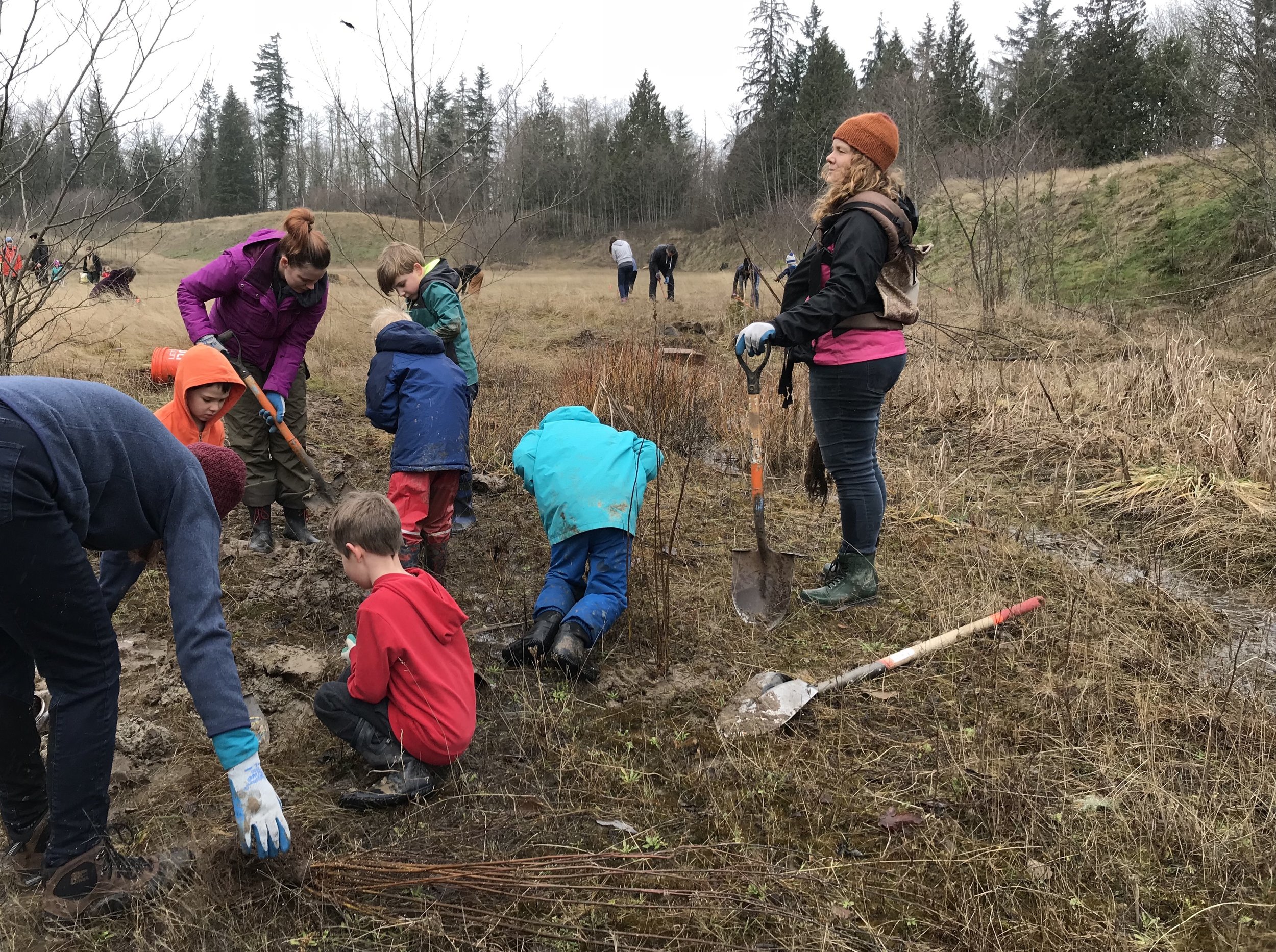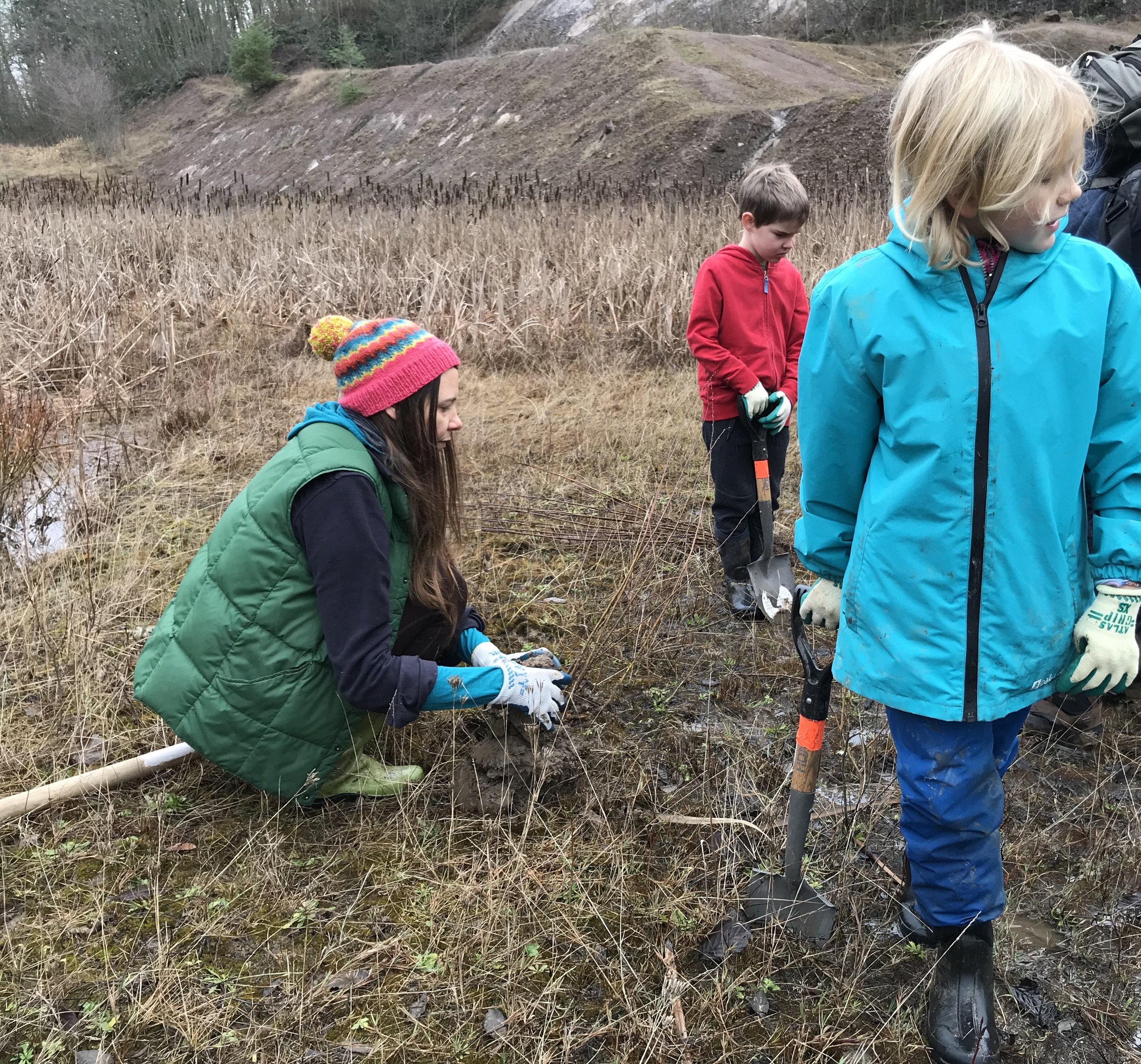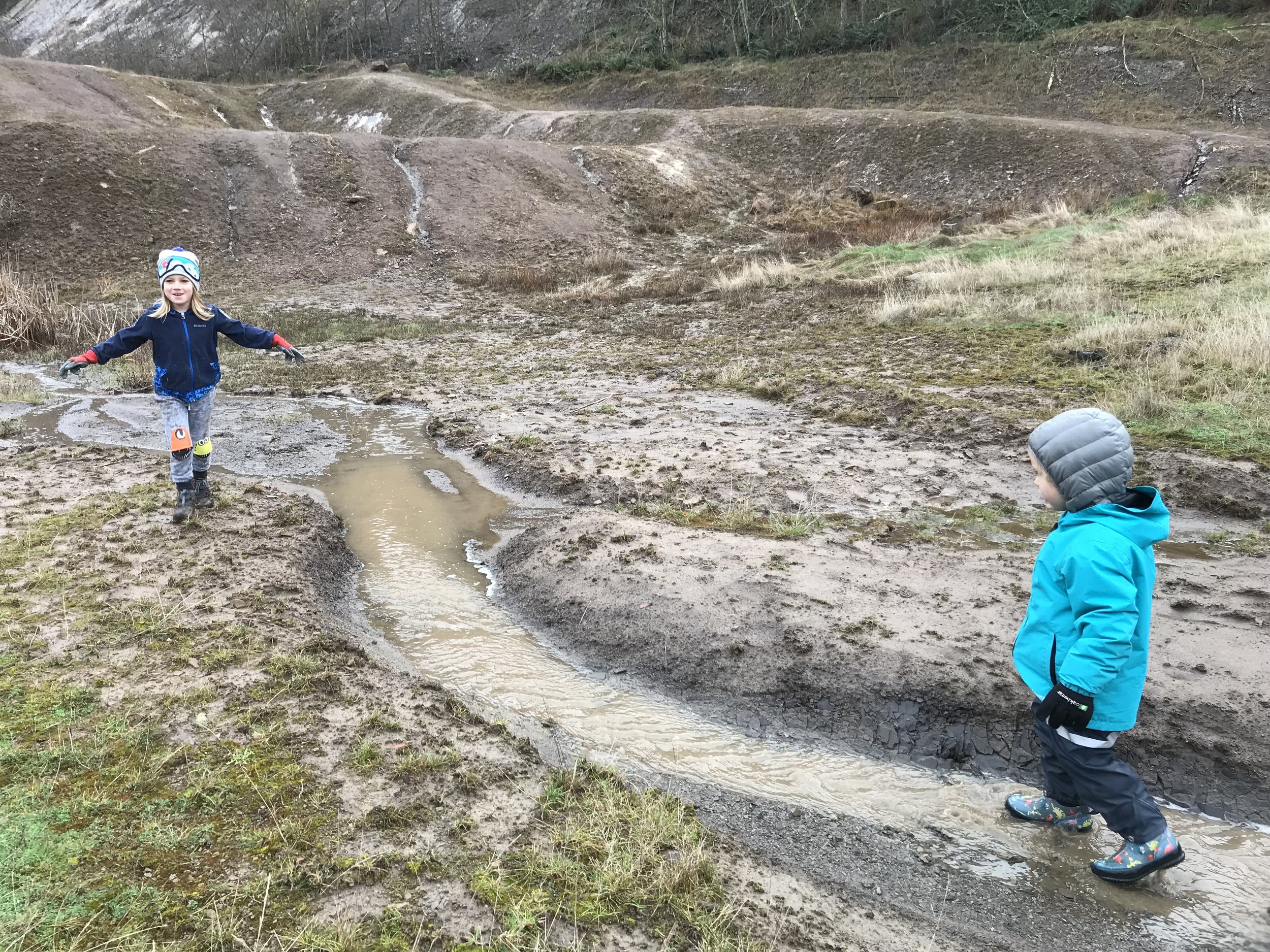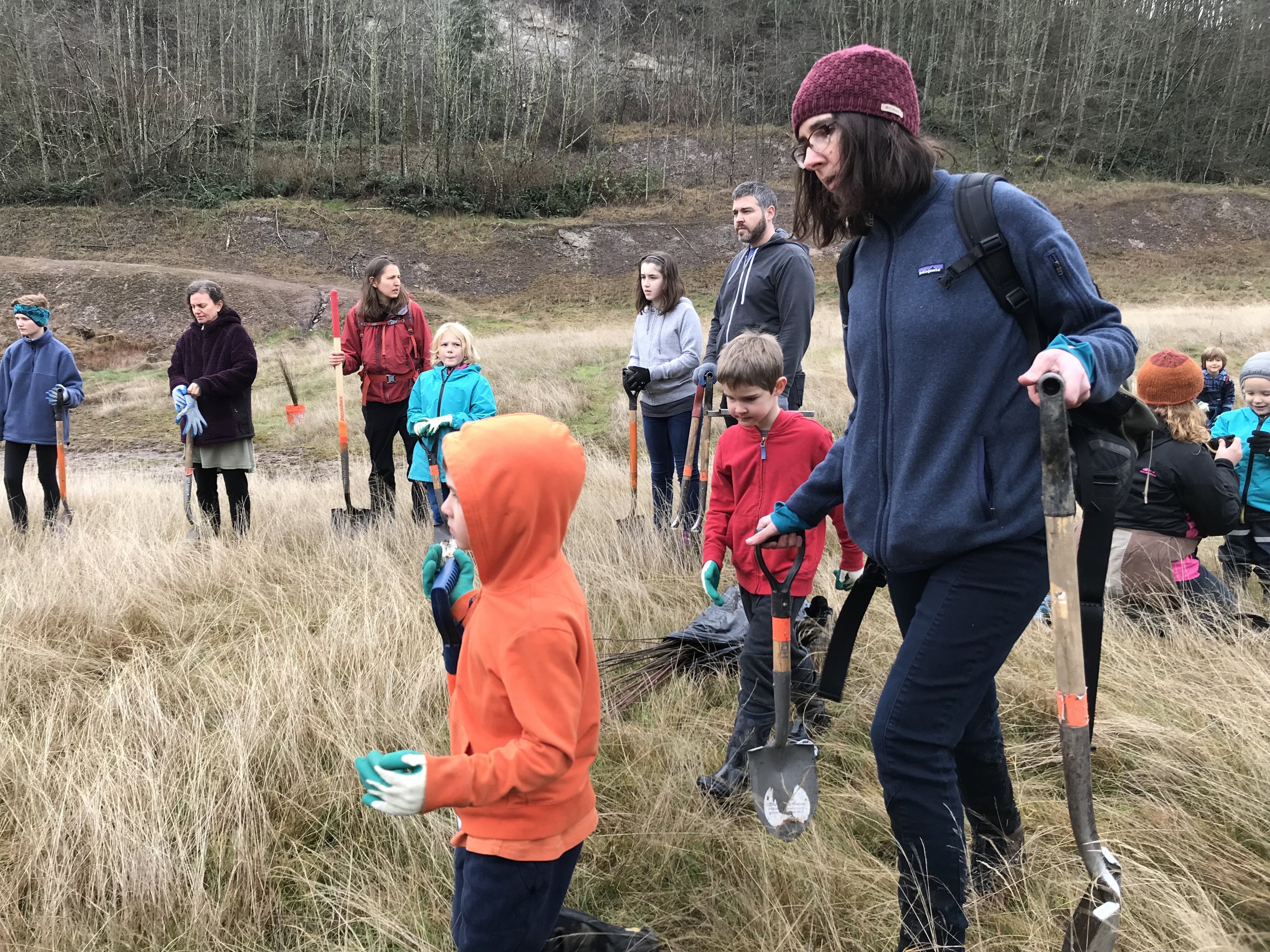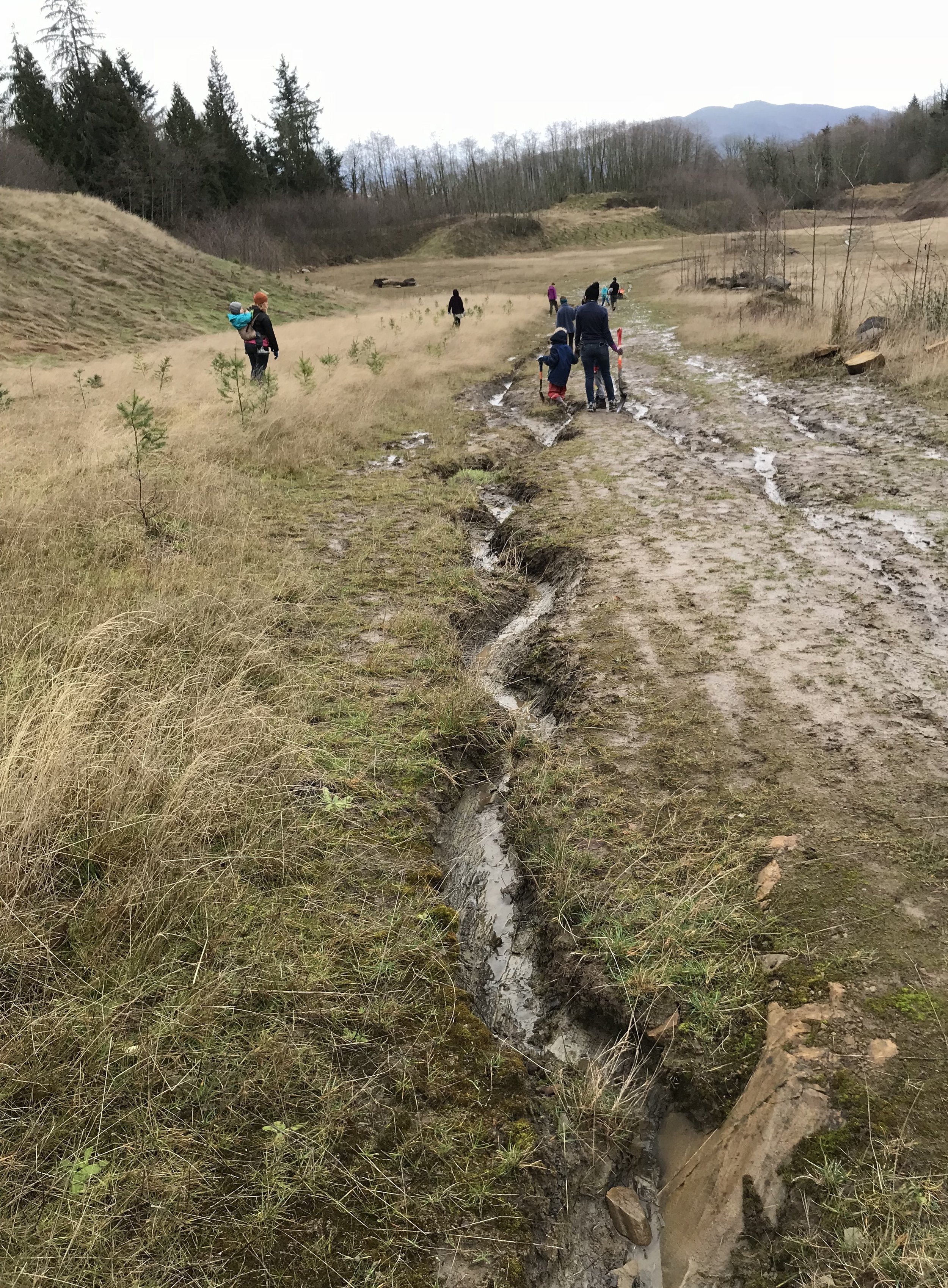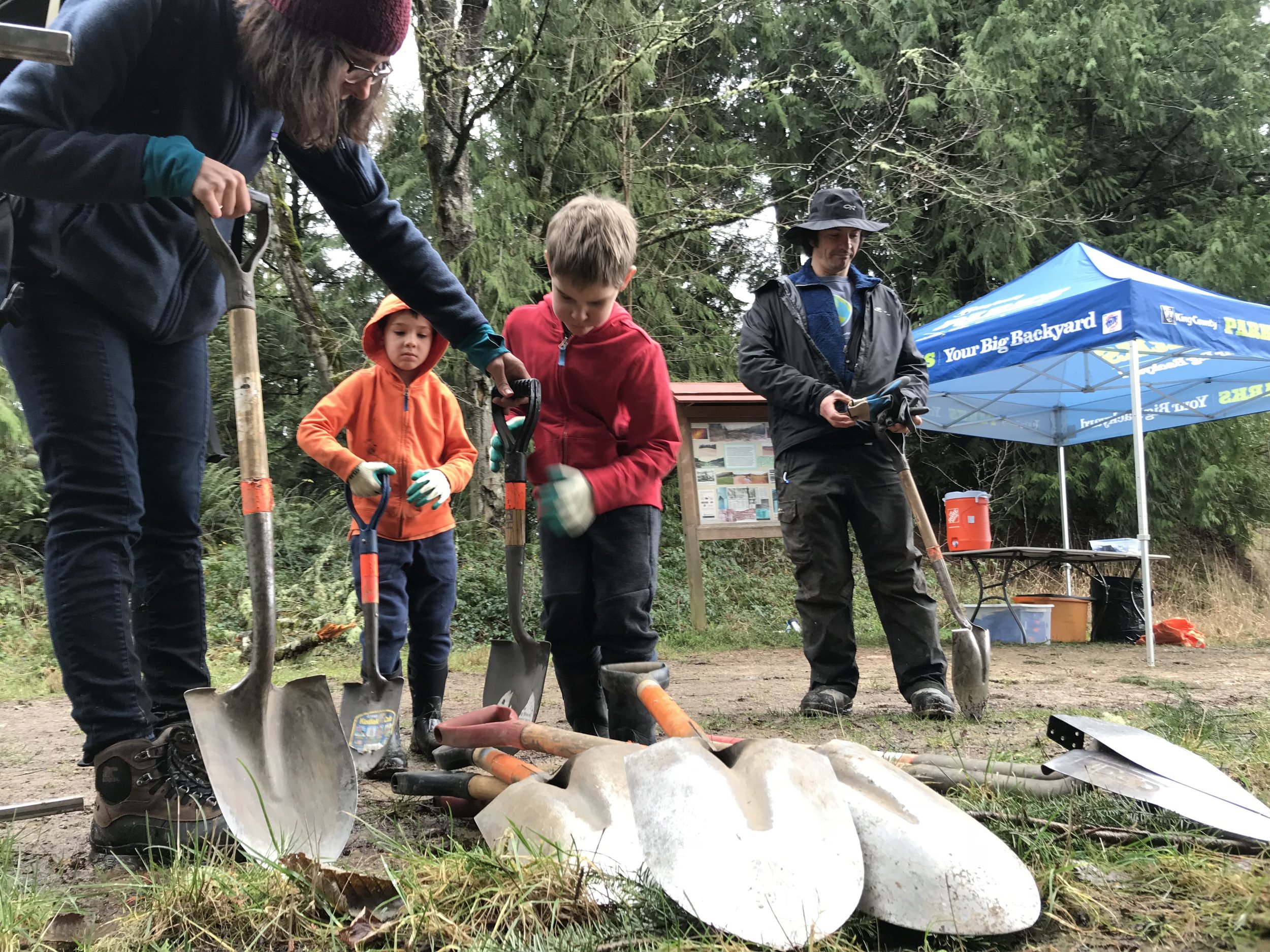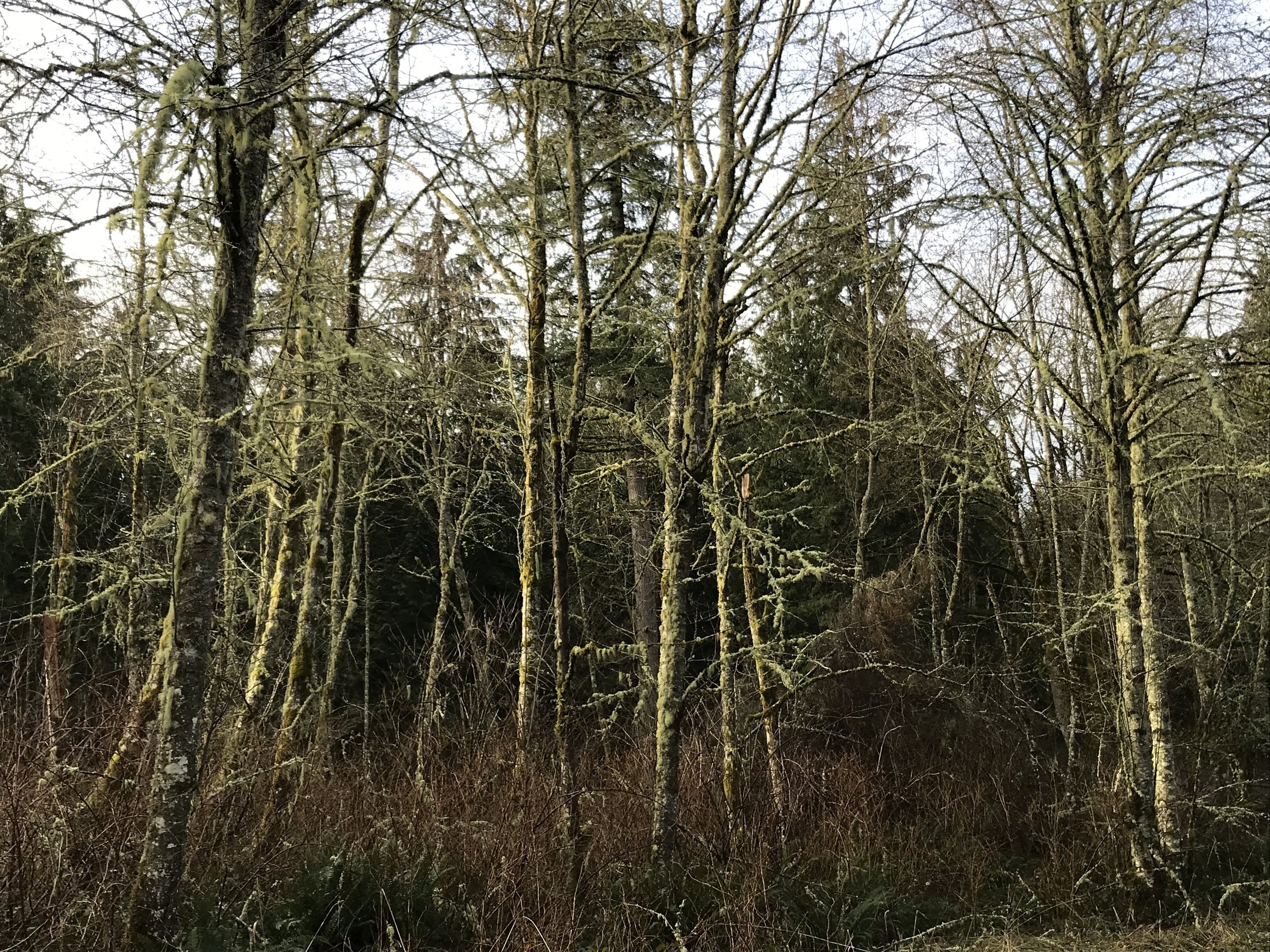There was so much snow on the ground at Northacres Park that planting wasn’t an option and trusty stewards had already removed most of the blackberry. Ah well, more time to sled!
Low Tide Planting Along the Duwamish River at North Wind's Weir
Success was in doubt for a time, but all participants eventually extricated themselves from the low-tide mud along the Duwamish River, Squad’s 100% survival rate is intact, phew! The Duwamish Alive Coalition has done many important works of restoration, and preservation along Seattle’s river and we appreciate having Sharon lead us on the ground in some hands-on stewardship at North Wind’s Weir. While working, we were treated to eagles, heron, kingfisher and many sitings of a seal.
We planted some carex divisions (off of larger plants) from another thriving site that will hopefully root themselves in securely before the tide, waves and geese pull them out. Additionally we planted live willow stakes which will sprout roots from the dormant branch cuttings when submerged in wet ground. This site is important for Chinook salmon as it is the transition zone between fresh water and salt water.
Read more about the fascinating Native American legend around this important site on Wikipedia and from the Burke Museum.
More Native Planting at the Clay Pit Mine
It was a super muddy and fun day of play, exploration and restoration work at the old clay pit mine on Cougar Mountain with King County Parks. We planted native trees and shrubs, such as big leaf maple, Douglas fir and hardhack/Spirea douglasii in the former mine. One can still find brick remnants on site.
Certain native plants will grow roots when live stakes (sections of fresh branches) are driven down into the soil during the dormant season. We used an awl to create a shaft two feet deep into which the willow stakes were inserted. The bud-eyes along the stems will switch to root-output after some time in wet soil.
Click on the 'clay pit mine' tag at the bottom of the post or at the right to read more about the fascinating history of this site, which created the bricks for Red Square at the UW. There is also an impressive beaver dam on the (closed to public vehicles) road you can take on foot to hike into the overlook of the site, where there is also signage.

